

Competitions
The hero’s journey breakdown: ‘star wars’.
By Ken Miyamoto · October 11, 2019
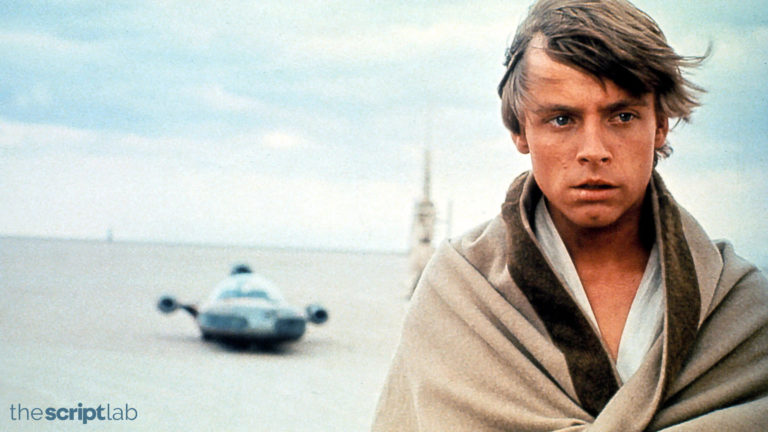
How does Star Wars: A New Hope follow Joseph Campbell’s Hero’s Journey breakdown?
Welcome to the inaugural installment of our new series A Hero’s Journey Breakdown where we explore Joseph Campbell’s mythological storytelling structure and how iconic films fit into that mold.
First up is Star Wars Episode IV: A New Hope . Let’s break down the plot and structure of George Lucas’ 1977 space-opera, the first in what would become an epic franchise spanning nearly 40 years, and see how it fits within The Hero’s Journey. You can download the script below to follow along.
But before we do that, let’s make sure we have the basics down, including what the Hero’s Journey is, where it originated, and who created it.
The Hero’s Journey 101
The “hero’s journey” is a common narrative archetype that features the different stages of a protagonist’s journey in a story. It has been studied and analyzed by many scholars from a multitude of disciplines, but one interpretation has found its way into the minds of almost every writer studying the craft.
The Monomyth
In 1949, writer and professor of literature Joseph Campbell wrote one of the most influential works in storytelling, The Hero with a Thousand Faces, in which he theorizes that stories often share a basic structure. Dubbed the “monomyth” or “the hero’s adventure,” Campbell lays out 17 stages of this narrative archetype, from but some have crafted their own interpretations and renditions that the writing community has used as guides in their own work.
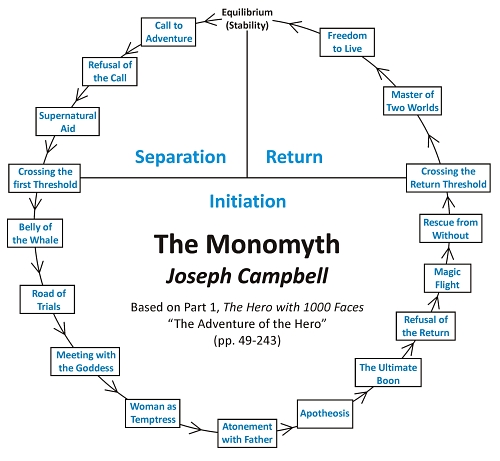
Joseph Campbell’s Monomyth
Vogler: The Writer’s Journey
Christopher Vogler’s approach to Campbell’s structure broke the mythical story structure into 12 stages. For this series, we define the stages in simplified interpretations:
- The Ordinary World : We see the hero’s normal life at the start of the story before the adventure begins.
- Call to Adventure : The hero is faced with an event, conflict, problem, or challenge that makes them begin their adventure.
- Refusal of the Call : The hero initially refuses the adventure because of hesitation, fears, insecurity, or any other number of issues.
- Meeting the Mentor : The hero encounters a mentor that can give them advice, wisdom, information, or items that ready them for the journey ahead.
- Crossing the Threshold : The hero leaves their ordinary world for the first time and crosses the threshold into adventure.
- Tests, Allies, and Enemies : The hero learns the rules of the new world and endures tests, meets friends, and comes face-to-face with enemies.
- The Approach : The initial plan to take on the central conflict begins, but setbacks occur that cause the hero to try a new approach or adopt new ideas.
- The Ordeal: Things go wrong and added conflict is introduced. The hero experiences more difficult hurdles and obstacles, some of which may lead to a life crisis.
- The Reward : After surviving The Ordeal, the hero seizes the sword — a reward that they’ve earned that allows them to take on the biggest conflict. It may be a physical item or piece of knowledge or wisdom that will help them persevere.
- The Road Back : The hero sees the light at the end of the tunnel, but they are about to face even more tests and challenges.
- The Resurrection : The climax. The hero faces a final test, using everything they have learned to take on the conflict once and for all.
- The Return : The hero brings their knowledge or the “elixir” back to the ordinary world.
Breaking Down the Journey: A New Hope
Here we turn to George Lucas’s Star Wars Episode IV: A New Hope .
Note: As with any application of story structure or formula, this is just a hindsight interpretation and implementation of The Hero’s Journey to this cinematic tale. There can and will be variances.
The Ordinary World
Luke Skywalker is living a normal and humble life as a farm boy on his home planet of Tatooine.
Call to Adventure
Luke is called to his adventure by two individuals — R2-D2 and Ben Kenobi. Luke triggers R2-D2’s message from Princess Leia and is intrigued by her and the message.
When R2-D2 escapes to find Ben Kenobi, Luke follows and is later saved by Kenobi, who goes on to tell Luke about his Jedi heritage. Kenobi suggests that he should come with him to Alderaan.
Refusal of the Call
Luke refuses Kenobi, telling him that he can take Kenobi and the droids as far as Mos Eisley Spaceport — but he can’t possibly leave his Aunt and Uncle behind for some space adventure.
Crossing the Threshold
When Luke discovers that the stormtroopers searching for the droids would track them to his farm, he rushes to warn his Aunt and Uncle, only to discover them dead by the hands of the Empire.
When Luke returns to Kenobi, he pledges to go with him to Alderaan and learn the ways of the Force like his father before him.
Tests, Allies, and Enemies
After Luke, Kenobi, and the droids hire Han Solo and Chewbacca to transport them off of Tatooine and onto Alderaan, Kenobi begins Luke’s training in the ways of the Force.
Wielding his father’s lightsaber, Kenobi challenges him to block the shots of a small training remote. At first, he can’t do it. But then Kenobi gives him a helmet to wear that has a blast shield that blocks his view of the remote. Kenobi teaches him to reach out and trust his feelings.
Luke blocks three shots from the remote — blind.
The Approach
The plan to defeat the Galactic Empire is to bring the Death Star plans to Alderaan so that Princess Leia’s father can take them to the Rebellion. However, when they arrive within the system, the planet is destroyed. They come across the Death Star and are pulled in by a tractor beam, now trapped within the metaphorical belly of the beast — The Galactic Empire.
As Kenobi goes off to deactivate the tractor beam so they can escape, Luke, Han, and Chewbacca discover that Princess Leia is being held on the Death Star with them. They rescue her and escape to the Millennium Falcon, hoping that Kenobi has successfully deactivated the tractor beam.
Kenobi later sacrifices himself as Luke watches Darth Vader strike him down. Luke must now avenge his fallen mentor and carry on his teachings.
Luke has saved the princess and retrieved the Death Star plans. They now have the knowledge to destroy the Galactic Empire’s greatest weapon once and for all.
The Road Back
Luke, Leia, Han, Chewbacca, and the droids are headed to the hidden Rebellion base with the Death Star plans. They are suddenly pursued by incoming TIE-Fighters, forcing Han and Luke to take action to defend the ship and escape with their lives — and the plans.
When they are triumphant, they realize that the Galactic Empire must be tracking them. But they have no choice but to race against time to take the plans to the Rebellion and prepare for battle.
The Resurrection
The Rebels — along with Luke as an X-Wing pilot — prepare to take on the Death Star.
The Rebellion and the Galactic Empire wage war in an epic space battle. Luke is the only X-Wing pilot that was able to get within the trenches of the Death Star. But Darth Vader and his wingmen are in hot pursuit. Just as Darth Vader is about to destroy Luke, Han returns and clears the way for Luke.
Luke uses the Force to guide his aiming as he fires upon the sole weak point of the deadly Death Star, destroying it for good.
Luke and Han return to the Rebellion base, triumphant, as they receive medals for the heroic journey. There is peace throughout the galaxy — at least for now.
Hopefully now you have a better idea of what the Hero’s Journey looks like in the wild. Be sure to check out our other Hero’s Journey Breakdowns for more examples from cinema’s greatest films.
Scripts from this Article
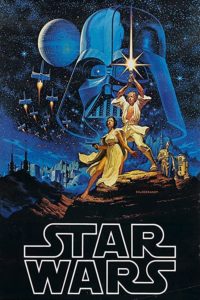
Star Wars: Episode IV – A New Hope
Download free trending scripts.
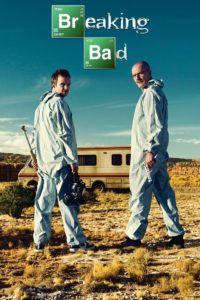
Breaking Bad

Inglourious Basterds
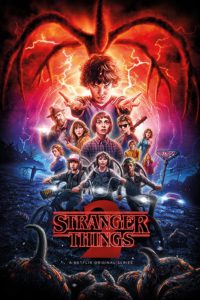
Stranger Things
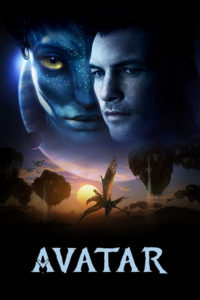
The Wolf Of Wall Street
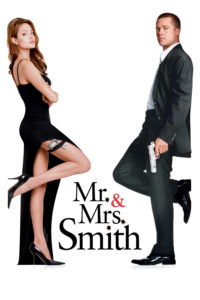
Mr. and Mrs. Smith
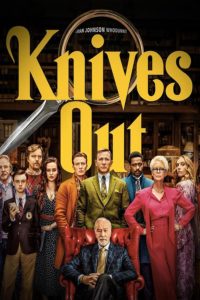
Good Will Hunting
Next related article.
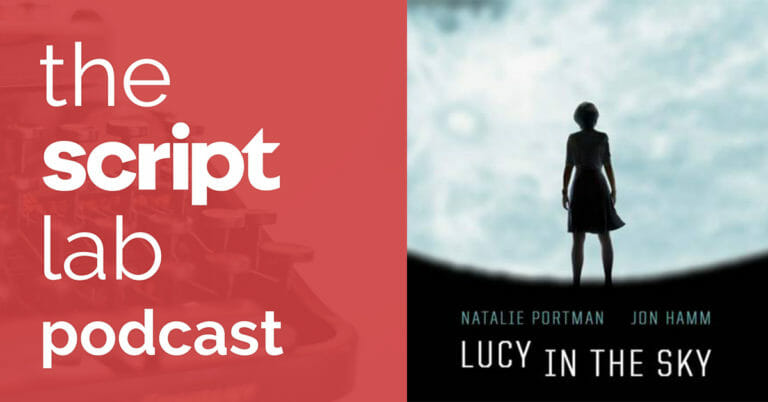
The Script Lab Podcast: Brian C. Brown and Elliott DiGuiseppi — Writers of LUCY IN THE SKY
Shanee Edwards · October 4, 2019
Recent Articles
The dark side of cinema: uncover the masterpieces of film noir.
Ken Miyamoto from ScreenCraft · April 29, 2024
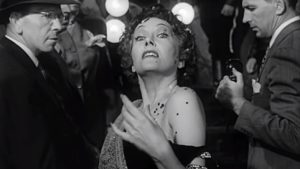
The 50 Greatest Screenwriters of All Time
Martin Keady · April 24, 2024

Comedy Gone Dark: Dark Comedy Movies That Make Us Grin into the Abyss
Ken Miyamoto from ScreenCraft · April 22, 2024
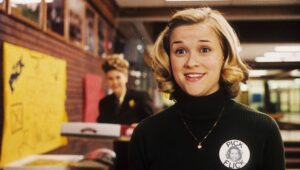
ScreenCraft Comedy Competition
Deadline: April 30th, 2024

Shore Scripts Short Film Fund
Deadline: May 2nd, 2024
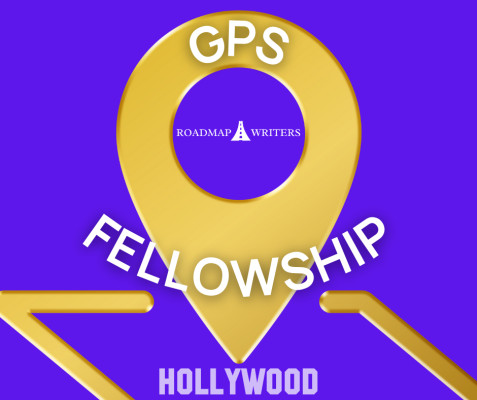
Roadmap Writers GPS Fellowship
Deadline: May 1st, 2024
More Related Articles
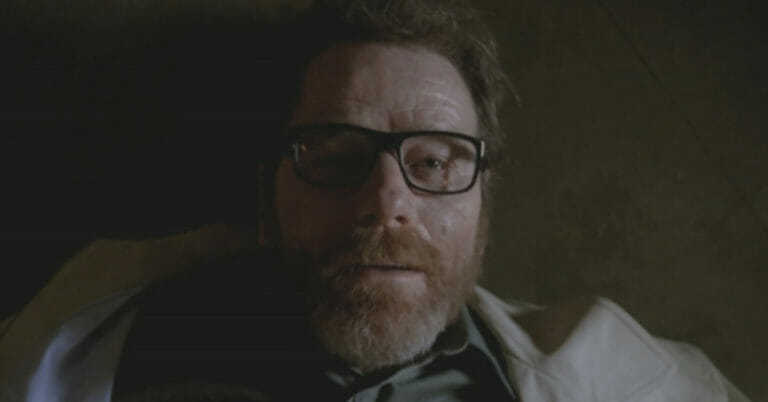
First Ten Pages: Breaking Bad Series Finale – “Felina”
Danielle Karagannis · October 11, 2019
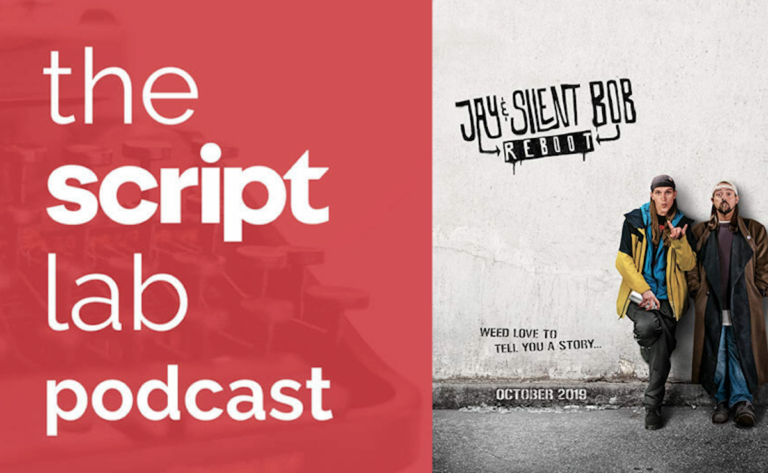
The Script Lab Podcast: Kevin Smith — Writer/Director of JAY AND SILENT BOB REBOOT
Shanee Edwards · October 11, 2019
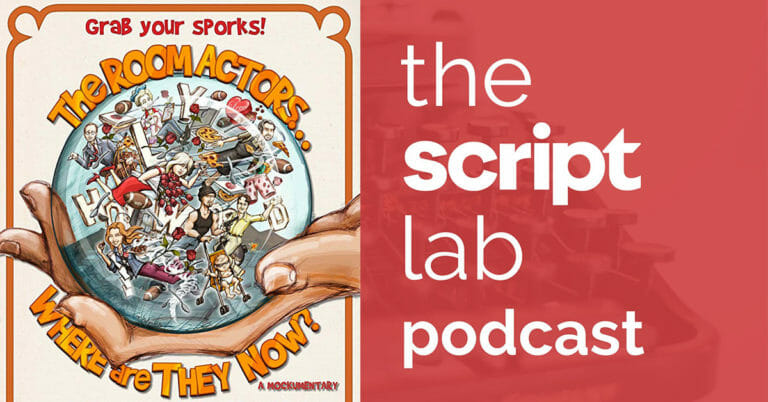
The Script Lab Podcast: Robyn Paris — Writer/Director of the Award-winning Web Series THE ROOM ACTORS: WHERE ARE THEY NOW?
© 2024 The Script Lab - An Industry Arts Company
Sign up for the TSL Newsletter
and get $50 off Final Draft 12
Stay up to date on the latest scripts & screenwriting articles.
By providing your information, you agree to our Terms of Use and our Privacy Policy . We use vendors that may also process your information to help provide our services. This site is protected by reCAPTCHA Enterprise and the Google Privacy Policy and Terms of Service apply.
Joseph Campbell Is the Hidden Link Between ‘2001,’ ‘Star Wars,’ and ‘Mad Max: Fury Road’
- Share on Facebook
- Share to Flipboard
- Share on LinkedIn
- Show more sharing options
- Submit to Reddit
- Post to Tumblr
- Print This Page
- Share on WhatsApp
Mythology and the Hero’s Journey became pervasive throughout film culture and history as generation after generation turned to Joseph Campbell and The Hero with a Thousand Faces. With his guidance, countless filmmakers have come to see image as symbolic, character as archetypal, and narrative as mythic. In addition to deepening entertaining stories into profound narratives, this has helped filmmakers translate inner psychological experience into something a camera can see. We are fortunate today that the Joseph Campbell Foundation has partnered with Studio Institute Global in Los Angeles to bring the depths of this master’s insights into the hands of students and filmmakers within the community.
Fifty years have followed since Stanley Kubrick gave his book to Arthur C. Clarke while writing 2001: A Space Odyssey . In the last two years alone, his name has been mentioned in Snowden and La La Land while his words have appeared on Wonder Woman’s sword, Superman’s cape, and in key moments of 13 Hours. Most famously, George Lucas came to see Campbell as “his Yoda” after The Hero with a Thousand Faces inspired revisions of Star Wars that enhanced the archetypal qualities of its characters, the symbolic depth of its imagery, and the mythic structure of its narrative. As John Williams said, “Until Campbell told us what Star Wars meant […] we regarded it as a Saturdaymorning space movie” (starwars.com). The mythic structure he learned from Campbell, famously called The Hero’s Journey, has gone from Lucas’ secret weapon to an industry standard that can be seen in a majority of studios and franchises.
Having studied hero myths from around the world, Campbell came to recognize a relatively consistent sequence: from the world of common day, the hero is called to adventure, which they—or a loved one—resist. This is followed by some kind of aid from beyond their normal experience, the crossing of the threshold from known reality to an unknown world, an initiatory road of trials through the unknown, a big ordeal that results in ego-death and a new elixir, a return journey, struggle at the return threshold, resurrection of a new self, and the eventual delivery of the life renewing elixir, which redeems a wasteland.
Where many have used this as a simple outline with varying degrees of success, the real power of the Hero’s Journey is that it turns a process of inner transformation into something the camera can see—it makes thoughts invisible to the camera by nature, visible. What Campbell did was help great storytellers translate major psychological experiences and philosophical transformations—as in myth and dream—into visual stories.
For example, one of the core qualities of the Hero’s Journey (and Jungian Individuation) is the death and deconstruction of walls around ego—the part of the self we identify with—which enables the expansion of consciousness. Symbolically, this can be expressed by the bringing down of shields, the opening of locked doors, the removal of armor, and the rescue of a sleeping figure. In Star Wars, this is seen as the powering down of the Death Star’s shields and Luke’s removal of his helmet while he rescues and awakens Leia in her prison.
The rescue of Leia by a team of male characters is also consistent with myths and dreams of male consciousness coming to integrate what it perceives as feminine and has thus far repressed. When the ensemble of heroes adds Leia, it doesn’t just symbolize a rebalancing of team dynamics. It represents the rebalancing of the protagonist’s own psyche, which suggests a rebalancing in personal and collective psyche to its audience. Leia wasn’t just an exciting female character because of her strength. It is also exciting—then and now—to see a drama integrating the excluded and repressed feminine.

Another favorite narrative motif of Campbell’s was the redemption of the wasteland, which he associated with the ego or tyrant’s repression/oppression of something that’s being excluded. This exclusion is resulting in an imbalance, and this imbalance perpetuates the wasteland. When a mind or a society excludes women—or anyone else—this is what’s going on. The redemption of the wasteland represents the widespread uprising and integration of the repressed, which, in this film, gives focus to the feminine.
As in a dream, characters exist within the minds of storytellers and their audiences. This is expressed in the quote of Campbell’s on Superman’s suit, “… where we had thought to slay another, we shall slay ourselves; where we had thought to travel outward, we shall come to the center of our own existence….” Or as it’s said in 13 hours, “All the gods, all the Heavens, all the Hells are within you.”
This perspective has had a major impact on character development in Hollywood. It has resulted in an emphasis on the creation of characters whose qualities already exist within audiences. To find these characters, Campbell and others studied the recurring figures in myth and dream that have resonated with audiences around the world and across time. Among these figures are goddesses, whose recurring motifs are described in his book Goddess: Mysteries of the Feminine Divine. Wonder Woman’s sword includes a quote from this book: “Life is killing life all the time and so the goddess kills herself in the sacrifice of her own animal.” By reading this and working on Wonder Woman, the storytellers were able to construct an archetypal character that resonates with goddess figures around the world and across human thought.
And it worked; the character resonated with the goddess warrior within millions of hearts and minds. A specific example of how the character was tweaked to evoke these associations can be seen in her use of a bow and arrow throughout the training sequence. This required the storytellers to work it in, as the bow isn’t Diana’s weapon. However, it is the weapon of the Roman Diana, goddess of the hunt, her Greek counterpart known as Artemis, and the Amazons. The storytellers gave her a bow for the same reason Hannah and Katniss from The Hunger Games are archers—this motif recurs throughout examples of the archetypal woman-warrior these filmmakers are trying to evoke. This is encouraged by studios because archetypal character qualities that recur throughout world mythology tend to resonate with global audiences.
In an effort to stimulate an ongoing dialogue between the study of myth and the culture of storytelling, The Joseph Campbell Foundation and Studio Institute Global have opened The Joseph Campbell Writers’ Room (JCWR) at Studio School Los Angeles. Open to both students and the community, the JCWR is a place where Studio School students, filmmakers, and screenwriters can go to collaborate, get advice from Campbell experts, learn ways to develop their stories as it relates to myth,and continue to explore new ways to interpret his theories. The Joseph Campbell Writers’ Room will work to continue the legacy of Campbell and his impact on the next generation of filmmakers.
Will Linn is the Executive Director of the Joseph Campbell Writers’ Room, Chair of the Studio School General Education Department and Editorial Director for the Joseph Campbell Foundation’s global grassroots network of Mythological RoundTable® groups. He also teaches courses on storytelling and co-hosts a radio series for the Santa Barbara News-Press called Mythosophia.
Sign Up: Stay on top of the latest breaking film and TV news! Sign up for our Email Newsletters here.
Most Popular
You may also like.

Den of Geek
Star Wars: What We Can Learn from the Skywalker Saga & the Hero’s Journey
Both Anakin and Luke Skywalker take the idea of a Chosen One - but how do the two Star Wars trilogies so far approach it?
- Share on Facebook (opens in a new tab)
- Share on Twitter (opens in a new tab)
- Share on Linkedin (opens in a new tab)
- Share on email (opens in a new tab)
Note: This article contains spoilers for all of the previous Star Wars films.
Den of Geek’s already discussed how the “Chosen One” story arc, in which a protagonist’s heroic quest is given to him/her by destiny, has been lazily used and also ditched in kids’ and young adult media. Since then, it’s continued to appear as recently as the critical and commercial flop Pan (a film we liked more than most ). As pointed out then, The Hunger Games series has provided a great example of a proactive protagonist in Katniss Everdeen, while The LEGO Movie simultaneously skewered and made anew the Chosen One myth, emphasizing that everything is awesome, and should be used accordingly to its full potential.
But in December, what may be cinema’s most lucrative franchise returns to dominate cinema screens and our wallets. Star Wars , as originally created by George Lucas, is known as owing a debt to the filmmaker’s study of Joseph Campbell’s writings on mythology, including his signature work The Hero with a Thousand Faces , credited with popularizing the “Chosen One” story arc. But have the films themselves really stuck to a rigid heroic storyline, or are they more subversive under their classic melodramatic sheen?
I should say that yes, Joseph Campbell is the man behind the ubiquitous “Hero’s Journey,” a concept which anyone who’s taken a creative writing course has almost certainly heard of. “A hero ventures forth from the world of common day into a region of supernatural wonder: fabulous forces are there encountered and a decisive victory is won: the hero comes back from this mysterious adventure with the power to bestow boons on his fellow man” as he describes.
Ad – content continues below
But here’s the thing: Campbell was a mythologist, not a screenwriting guru. His work showed that the world’s various mythologies shared at least some common thoughts, an idea he dubbed a “monomyth” after James Joyce. This doesn’t mean all stories ever are exactly the same underneath, or that following the Hero’s Journey exactly as written is a foolproof formula for your story to succeed, but too many stories and scripts have run with it anyway. The proliferation of Chosen Ones is the latest lazy manifestation of this, substituting plot for character.
Star Wars doesn’t fall into this trap. No matter how much George Lucas drew from and admired Campbell, both the Original and Prequel Trilogies place the idea of heroic destiny under great scrutiny. The character-driven narrative and stakes which are as much personal as galactic are what make it outstanding.
Since the idea of a Chosen One revolves around the protagonist, and the Saga’s main characters are the Skywalkers, let’s look at the two trilogies side by side, to see the paths of Luke and Anakin, how both struggle with destiny and how it brings them together in the end.
Starting with one of the Hero’s Journey’s most crucial components, The Call.
Luke definitely faces a Call, but Lucas doesn’t take any shortcuts via a Chosen One route. Although Luke is the son of Darth Vader and therefore important for the remaining Jedi to protect from the Sith and raise as a Jedi, those are only details we learn after A New Hope , the initial film. Yes, Luke bears the inheritance of great Force sensitivity (“The Force is strong in my family”) but no explicit prophecy surrounds his quest to save Princess Leia and destroy the Death Star, and Obi-Wan doesn’t pressure him with any idea of fulfilling destiny beyond gifting him his father’s lightsaber.
The Call in A New Hope is simply a young princess’ desperate plea for help as the Empire, which oppresses both her and Luke, closes in. And this is capped off by his Aunt and Uncle being killed. “You must do what you feel is right, of course” are Obi-Wan’s words, and Luke goes with him because he chooses to.
Now Anakin, he’s much more of a Chosen One than Luke ever was…
Get the best of Den of Geek delivered right to your inbox!
And yet, though the Prequel Trilogy literally calling Anakin a Chosen One implies his immaculate conception via the will of the Force, it’s rarely straightforwardly heroic, and I’d argue a damn good example of how terrible actually being a Chosen One would be for someone. For my money, such thematic focus is the only way a Chosen One narrative can organically work.
Now, let’s leave aside whatever you may think of Jake Lloyd’s acting in The Phantom Menace and analyze Anakin’s character. He, a precocious, exuberant young boy, and his mother are both slaves on Tatooine until maverick Jedi master Qui-Gon Jinn arrives. Although he suspects “There’s something about this boy” and confirms it both with an all-time high midi-chlorian count and Anakin winning the pod race, he lets Anakin decide what to do with his newly won freedom.
But Qui-Gon’s pretty different from the chaste and cautious Jedi Council, which is suspicious of anything which it can’t totally control. Despite being ten years younger than Luke when he begins training, they reject Anakin as too old. They only agree to accept him to honor Obi-Wan’s vow to the dying Qui-Gon, the master Anakin really needed. The Jedi, including Obi-Wan, see danger in Anakin’s prodigious talents rather than potential, something to be rigidly contained within a prophecy to destroy the Sith rather than realizing that Anakin needs to replace what he lost – love, specifically the love of his mother Shmi.
Thus, our look at both heroes moves onto temptation…
As we’ve seen, Luke is no Chosen One bound by destiny when he accepts the Call and trains to become a Jedi. Indeed, the idea that Luke has a “destiny” to fulfil belongs chiefly to the villains. In The Empire Strikes Back , with the crushing revelation that Darth Vader is in fact Luke’s father, Vader frequently urges Luke to join him as apprentice and destroy the Emperor, “the only way” to end the Civil War.
And then in Return of the Jedi when Yoda and Obi-Wan’s secrets are revealed, they urge him to confront Vader again and destroy him, warning him he cannot “escape his destiny.” But Luke insists he can’t kill his father. He was originally tempted by fear for his friends and frustration at his lack of progress to fight who he thought was just a villain to be vanquished. Both the eerie episode in the Dagobah cave and learning that said bad guy was his own father, once a great Jedi, teach him caution.
When we meet Anakin as Obi-Wan’s adolescent padawan in Attack of the Clones , the gaping hole in his life remains unfilled, unable to act on his promise to go back and free his mother, or stop dreaming about her. He also has two extremes of mentor, neither of which is really healthy. On the one hand, he has the Jedi Council warning him to hold back his ambitions, follow instructions, and reject all attachments. They don’t discourage him maliciously of course, wary of the arrogance that excellence can breed, but Yoda, Obi-Wan, and Mace Windu repeatedly discuss Anakin behind his back.
On the other, he is good friends with Chancellor Palpatine, who (as part of his manipulations) comforts Anakin by telling him he’ll soon be “invincible,” that “you don’t need guidance” and essentially that as Chosen One he can have everything he wants. Including those he loves. With Palpatine building up Anakin’s expectations of power while the Jedi simultaneously keep him down, his frustrations inevitably grow. Instead of being able to accept what he’s lost and what’s beyond him, being the Chosen One means he can’t deal with things being out of his control. So he acts rashly and angrily, immaturely claiming that Obi-Wan never listens to him, that he’s even “jealous” of his talents.
Then there’s the dream-visions both he and Luke have. Anakin has nightmares of his mother in pain, tries to save her, and fails. Luke has similar visions of his friends suffering on Bespin, and by rushing to save them and destroy Vader, he suffers but learns from it.
Anakin doesn’t have an Empire -style humbling to convince him that the pursuit of absolute power is wrong. After he finds his dying mother and kills a band of Tusken Raiders in revenge, he is shocked at his anger and yet exasperated that he didn’t have enough power to save Shmi. He’s supposed to be the Chosen One. Doesn’t that mean he should be “the most powerful Jedi ever” if he is to destroy the Sith and bring balance to the Force?
During Revenge of the Sith , Anakin has similar visions about Padme dying in childbirth, he clearly falls for Palpatine’s story concerning Darth Plagueis and cheating death. Upon learning Palpatine is a Sith Lord (as well of the apparent possibility to save Padme), Anakin still tries having him arrested in the most proper way possible, but at the crucial moment, he chooses his own interests, and spares the evil Sith Lord over the well-meaning but restrictive crux of the Jedi, by disarming Windu. Anakin knows how the Jedi have been trying to use him against Palpatine, but not until it’s too late, until he feels he can’t go back on his path to evil, does he realize how Palpatine has used him.
From there Anakin rationalizes his increasingly monstrous actions, slaughtering both Jedi and Separatists, in pursuit of power he feels he not only needs, but also deserves – he reinterprets being the Chosen One as bringing peace to the galaxy by himself, without the Jedi or ultimately the new Emperor. Anakin was fed up with the dysfunctional Galactic Senate to the point where he supported a dictatorship led by “someone wise…if it works.”
But as Obi-Wan duels with him, admitting that he hasn’t been the mentor Anakin needed (“I have failed you”), it’s also emphasized however tragic Anakin’s downfall is, his grievances don’t excuse his actions. He did it all for his own purposes, no matter the original good intentions. And with his christening as Darth Vader and Padme’s death, the bitterest ironies are complete. Anakin, from life on Tatooine, as a Jedi knight, and then as Vader, is never truly free his entire life, and now he’s enslaved himself to the very evil he swore to destroy, and his pursuit of power ended the same life he was trying to protect.
Do not want, indeed.
Atonement with the Father
Now for where the two heroes converge.
Anakin’s fall makes clear that if the Jedi are to finally defeat the Sith, they must nurture a hero whose goal isn’t to be all-powerful, led on by an exceptionalist prophecy. That’s just trying to beat the Sith at their own game. All the Star Wars films concern the folly of pursuing absolute power in some way, whether it’s someone being tempted by the Dark Side or the Empire building a Death Star. To paraphrase Princess Leia, the more you tighten your grip, the more power slips through your fingers.
Anakin’s dark choices were about rebelling against a life which gave him no choice except to be the pawn of others. He wasn’t an empty character, but the Prequels demonstrate how destiny blocks actual character rather than encourage it.
Latest TV reviews
Star trek: discovery season 5 episode 5 review – mirrors, the red king review: uneven folk horror crime mash-up, red eye review: itv thriller starts silly, gets great.
That’s where Luke comes in to save the day and his father’s soul. Luke’s greatest victory in the series is that despite the temptation to kill Vader and give in to the Dark Side, he avoids the same “quick and easy path” as his father and spares him instead. Star Wars rightly recognizes the Hero’s Journey’s potential for dark individualism, with the utter destruction of your enemy completing your self-actualization. It becomes a hero’s journey into villainy, and Luke nearly succumbs to his hate in essentially bludgeoning Vader into submission, desperate to save his friends like Anakin was to save those he loved.
He’s only prevented from killing Vader by the Emperor’s reminder to fulfil his destiny, a shackle which Luke valiantly casts off (Nice Job Fixing It, Villain). And it’s his mercy towards Vader that ultimately saves Luke from the Emperor’s onslaught, inspiring his father’s redemption by ending his wicked master. So Anakin technically does fulfil the prophecy, but not through lone supremacy: it’s only achieved through the love and mercy of his son, and by sacrificing himself.
Sequel Trilogy and Conclusion
So with all that said, and Lucasfilm presumably set to produce Star Wars films every year forever under Disney’s ownership, will the upcoming Sequel Trilogy feature a Chosen One, starting with The Force Awakens ?
I’m guessing probably not, but J.J. Abrams’ mystery-box mentality means not much plot’s been weaned from any of the film’s trailers, except that Rey and Finn are to be the next generation of heroes in a changing-of-the-guard with Luke, Han, and Leia.
It’d be a shame if the future films resorted to the Hero’s Journey, because what I’ve hopefully shown here is that Lucas, plus the various writers and directors on the original six films, created a very convincing, tragic, and triumphant story of two paths of heroism: one is shackled by expectations of prophecy with the other freed by choice. Not to mention how heroism is completed by sparing and redeeming your enemy rather than conquering or destroying them for your own power and security.
I expect many will disagree with me regarding the Prequels’ effectiveness, but however well you think they work, I think Lucas deserves credit for portraying why a Chosen One narrative could almost never work when played straight. The hero’s micromanagement by fellow “good guys,” the stress of expectation on the hero himself, and the possibility for the situation to be manipulated and turned bad by evil interests would ultimately destroy him.
And I don’t think I’m just going through the Prequels’ good intentions either: Revenge of the Sith especially is proudly operatic stuff, following a well-meaning and ambitious young man tragically failing to become the hero the galaxy needed, with horrendous consequences. Only an independently-owned mega-franchise allowed Lucas to do that, and I hope Abrams hasn’t neglected Star Wars ’ more melodramatic side in making The Force Awakens .
It’s not enough to use things like the Hero’s Journey just as a template. That quick and easy path leads to forgettable stories. Star Wars endures because Lucas studied and consulted with Campbell, yet made Star Wars its own distinct, functional story beyond the philosopher’s classifications of monomyth. You can identify elements, but they aren’t all there is to the Skywalker saga.
Jordan Adcock
- THE BAD BATCH
- THE ACOLYTE
- THE HIGH REPUBLIC
- QUIZZES + POLLS
- BOOKS + COMICS
- THIS WEEK! IN STAR WARS
- The Bad Batch
- The Acolyte
- The Mandalorian
- Star Wars Outlaws
- Games + Apps
- VR + Immersive
- ALL DATABANK
- THE DISNEY BUNDLE
ALL OF YOUR STAR WARS FAVORITES NOW STREAMING ON DISNEY+
- Behind the Scenes
- Books + Comics
- Characters + Histories
- Disney Parks
- Fans + Community
- Force For Change
- Forces of Destiny
- Galaxy of Adventures
- In Pop Culture
- LEGO Star Wars
- Merchandise
- Obi-Wan Kenobi
- Quizzes + Polls
- Star Wars Celebration
- Star Wars Day
- Star Wars Rebels
- Star Wars Resistance
- The Book of Boba Fett
- The Clone Wars
- The Force Awakens
- The High Republic
- The Last Jedi
- The Rise of Skywalker
- The Star Wars Show
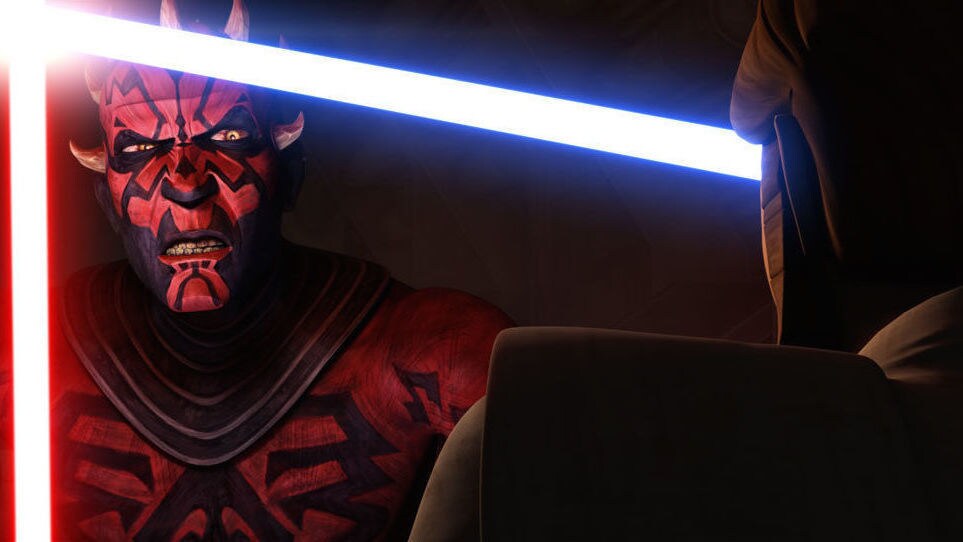
{:title=>"Characters + Histories", :url=>"https://www.starwars.com/news/category/characters-+-histories"}
Studying skywalkers: how darth maul's story cleverly subverts the hero's journey.
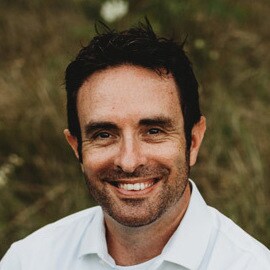
Maul's life follows the Hero's Journey narrative, but he emerges as something much darker.
Studying Skywalkers is an exclusive column that investigates the characters, themes, and lessons of Star Wars from an educational, literary perspective.
Joseph Campbell’s Hero’s Journey is practically synonymous with exploring Star Wars , and for good reason. It is a fascinating examination of a mythological construct that explores the path of the hero: overcoming obstacles (both from outside, as well as within) to emerge a better version of him or herself. The 12 criteria used to analyze a hero’s path can be used for many characters in Star Wars , and has provided much fodder for analysis and reflection.
But what about the villains? A good villain subverts the natural order of things and threatens the status quo. A villain takes what is known, and shifts the original intention to fit his or her own means. Star Wars has a few villains that alter the deal, as well, and provide their own form of the Hero’s Journey. One in particular, Darth Maul (or Maul, as he is known on Star Wars Rebels ) takes his own journey that is far from heroic, but certainly challenges Campbell’s standards of measurement, and catapults them in a whole new direction.
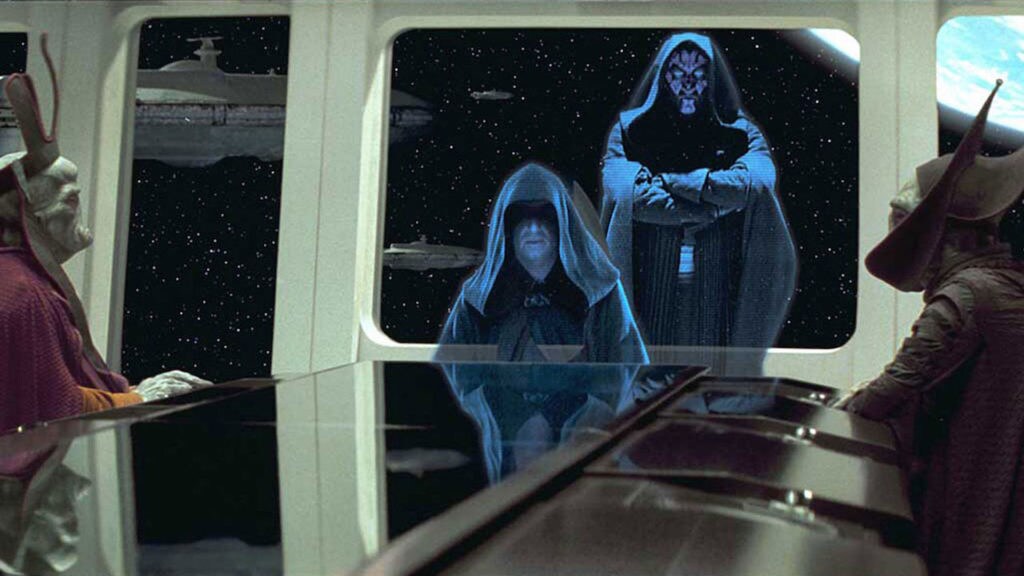
The belly of the whale works beautifully here, as well as an example of looking at things from a different point of view. In Campbell’s estimation, the hero enters into an environment or experience that completely cuts them off from the known world, and the hero has no choice but to survive completely by him or herself, only to escape less naïve, and more enlightened. When Darth Maul suffers a grave defeat on Naboo, he descends deep into the planet core, only to fight for survival on a junk planet (Lotho Minor). Maul is completely isolated, has only himself to rely on, and emerges in a much different mental state. This mental state contains no enlightenment, but rather darkness and lunacy. If not for the dark magic of Talzin, he would most likely never reach a place of cogency.
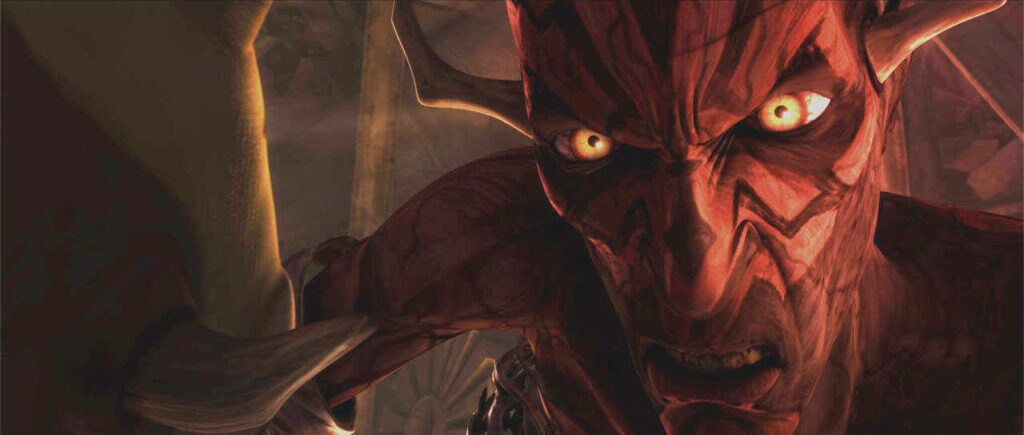
Dan Zehr is a high school English teacher with an MS in Teaching and Learning, and runs Coffee With Kenobi ( with co-host Cory Clubb) , a Star Wars podcast that analyzes the saga through critical thinking, analysis, interviews, and discussion. He is also a member of the Rogues (as Blue Leader), a network of teachers that incorporate Star Wars in the Classroom .
Related Stories
Who's who on the jedi council in the phantom menace and the living force.
April 12, 2024
First Look at the Haunting Darth Maul – Black, White & Red #1
March 20, 2024
Marvel’s Darth Maul – Black, White & Red Coming April 2024 - Exclusive
January 24, 2024
The Origins of Life Day
November 17, 2023
13 of the Scariest Star Wars Scenes
October 31, 2023
6 Scary Star Wars Planets
October 24, 2023
Our Favorite Scary Star Wars Stories to Thrill You This Halloween Season
October 13, 2023
6 Nightmarish Nightsister Moments
October 12, 2023
TM & © Lucasfilm Ltd. All Rights Reserved
Screen Rant
Star wars: 10 biggest steps in luke skywalker's hero's journey.
Luke Skywalker is the quintessential hero for audiences to look up to, and the Star Wars trilogy is the ultimate story of good triumphing over evil.
The central figure in the Star Wars saga, Luke Skywalker, is a quintessential archetypal hero for audiences to look up to. Rian Johnson’s deconstruction of the Star Wars myth in The Last Jedi was wildly controversial when it first hit theaters, but the director recently told Empire magazine that he’s “even more proud” of The Last Jedi ’s polarizing plot turns after half a decade.
While the sequel trilogy reversed Luke’s “hero’s journey” and turned him into a bitter hermit who renounced the fight against the dark side, his arc in the original trilogy still holds up as the ultimate story of good triumphing over evil.
When He Joined Ben Kenobi
As defined by Joseph Campbell’s work in comparative mythology, the hero’s journey begins with a “call to adventure.” Luke’s call to adventure was the message that Leia left on R2-D2’s memory drive for Ben Kenobi. True to the monomyth, Luke initially refused the call so he could return home to his aunt and uncle.
When he found that they’d been murdered by the Empire, he had no reason to stay on Tatooine and joined Kenobi for the adventure after all. The wise old Jedi told his new apprentice, “You’ve taken your first step into a larger world.”
When He Began His Jedi Training On The Millennium Falcon
After recruiting Han Solo and Chewbacca to help them liberate Princess Leia from the Empire’s custody, Luke and Obi-Wan had some downtime on the Millennium Falcon’s journey to the Death Star . Obi-Wan took this opportunity to teach Luke the basics of Force sensitivity.
There wasn’t enough time to train Luke to become a full-blown Jedi just yet, but Obi-Wan did teach Luke to harness his Force powers, which ultimately came in handy in the final battle.
When He Saved Princess Leia
A significant step in the hero’s journey sees the hero going into “the belly of the whale.” In the original Star Wars movie, that whale is the Death Star and its belly is the detention level. Luke disguised himself as a Stormtrooper to free Princess Leia from her prison cell, then Leia had to promptly save him because he didn’t come up with an exit strategy.
Before escaping from the whale in the Falcon, the heroes had to go deeper into its belly, jumping down the garbage chute into the monster-infested sludge of the trash compactor.
When He Used The Force To Destroy The Death Star
Luke didn’t just escape from the belly of the whale; he came back in a starfighter and blew up the whale with a couple of proton torpedoes. When the first few Rebel fighter pilots failed to land a hit, the disembodied ghost of Luke’s mentor Ben Kenobi advised him to “use the Force.”
Drawing on his training from earlier in the movie, Luke used the Force to send two of his proton torpedoes down the Death Star’s thermal exhaust port to blast the station to smithereens.
When He Went To Dagobah To Train With Yoda
While he was stranded in the snowy Hoth wilderness at the beginning of The Empire Strikes Back , Luke was approached by the Force ghost of Ben Kenobi. Kenobi told Luke to travel to Dagobah to complete his Jedi training under the tutelage of Yoda.
Luke then spent the second act of the film in the swamps of Dagobah with Yoda on his back, passing on valuable lessons in his ear. Learning to control his abilities with more precision turned Luke into a more skillful Jedi.
When He Faced His Fears In A Shadowy Cave
The archetypal hero’s journey includes an “approach to the innermost cave” that breaks up the action and gives the hero a chance to reflect. The middle act of The Empire Strikes Back realizes this stage of Luke’s journey literally.
During his training on Dagobah, Luke went into a spooky cave and had a creepy Force vision that foreshadowed the iconic “I am your father” twist. He saw the visage of Darth Vader, briefly fought him, and then saw his own face under the mask.
When He Confronted Darth Vader In Cloud City
When he sensed that his friends were in danger, Luke jumped in his X-wing and flew to Cloud City to help them. Yoda advised him against going to Bespin, because he wasn’t ready to face Vader, but Luke had already made up his mind and couldn’t be deterred.
Luke put up as much of a fight as he could when he finally confronted Vader , but Yoda turned out to be right. Luke was hopelessly defeated by the evil Sith overlord who then revealed that he was his biological father.
When He Refused To Join His Father
When Vader had Luke backed out onto a ledge following their brutal lightsaber duel on Bespin, Vader told his estranged son, “Join me, and together, we can rule the galaxy.” Luke was faced with a crucial choice between joining Vader on the dark side and jumping down a seemingly bottomless pit to certain doom.
Despite the slim likelihood of surviving the fall, Luke didn’t hesitate to choose the latter because he couldn’t stand to turn to the dark side.
When He Saved His Friends Aboard Jabba’s Barge
After his devastating defeat at the end of The Empire Strikes Back , Luke emerged as a fully fledged Jedi Knight in the opening set-piece of Return of the Jedi . Jabba the Hutt took Luke and his friends hostage and flew them out to the Sarlacc Pit to walk the plank.
At the last second, Luke gave Jabba the chance to surrender before revealing his true plan of action. R2-D2 passed him his lightsaber and he singlehandedly took down Jabba’s criminal enterprise.
When He Brought His Father Back To The Light Side
As with any hero, Luke completed his hero’s journey when he defeated the villain. But in the climactic showdown of Return of the Jedi , Luke didn’t defeat Vader using brute force; he used the power of love and compassion to bring his father back to the light side.
From the moment he was summoned to the Emperor’s throne room, Luke refused to give up his belief that there was still good in his father. Eventually, this belief inspired Anakin to renounce the dark side and make the ultimate sacrifice to kill the Emperor.
NEXT: 8 Characters From The Star Wars Original Trilogy Who Are More Important Than Luke
The Art of Narrative
Learn to write.

A Complete Guide to The Hero’s Journey (or The Monomyth)
Learn how to use the 12 steps of the Hero’s Journey to structure plot, develop characters, and write riveting stories that will keep readers engaged!
Before I start this post I would like to acknowledged the tragedy that occurred in my country this past month. George Floyd, an innocent man, was murdered by a police officer while three other officers witnessed that murder and remained silent.
To remain silent, in the face of injustice, violen ce, and murder is to be complicit . I acknowledge that as a white man I have benefited from a centuries old system of privilege and abuse against black people, women, American Indians, immigrants, and many, many more.
This systemic abuse is what lead to the murder of George Floyd, Breonna Taylor, Ahmaud Arbery, Sandra Bland, Eric Garner, Treyvon Martin, Philando Castile, Freddie Gray, Walter Scott, Tamir Rice and many more. Too many.
Whether I like it or not I’ve been complicit in this injustice. We can’t afford to be silent anymore. If you’re disturbed by the violence we’ve wit nessed over, and over again please vote this November, hold your local governments accountable, peacefully protest, and listen. Hopefully, together we can bring positive change. And, together, we can heal .
In this post, we’ll go over the stages of Joseph Campbell’s Hero’s Journey, also known as the Monomyth. We’ll talk about how to use it to structure your story. You’ll also find some guided questions for each section of the Hero’s Journey. These questions are designed to help guide your thinking during the writing process. Finally, we’ll go through an example of the Hero’s Journey from 1997’s Men In Black.
Down at the bottom, we’ll go over reasons you shouldn’t rely on the Monomyth. And we’ll talk about a few alternatives for you to consider if the Hero’s Journey isn’t right for your story.
But, before we do all that let’s answer the obvious question-
What is the Hero’s Journey?

The Hero’s Journey was first described by Joseph Campbell. Campbell was an American professor of literature at Sarah Lawrence College. He wrote about the Hero’s Journey in his book The Hero with a Thousand Faces . More than a guide, this book was a study on the fundamental structure of myths throughout history.
Through his study, Campbell identified seventeen stages that make up what he called the Monomyth or Hero’s Journey. We’ll go over these stages in the next section. Here’s how Campbell describes the Monomyth in his book:
“A hero ventures forth from the world of common day into a region of supernatural wonder: fabulous forces are there encountered and a decisive victory is won: the hero comes back from this mysterious adventure with the power to bestow boons on his fellow man.”
Something important to note is that the Monomyth was not conceived as a tool for writers to develop a plot. Rather, Campbell identified it as a narrative pattern that was common in mythology.
George Lucas used Campbell’s Monomyth to structure his original Star Wars film. Thanks to Star Wars ’ success, filmmakers have adopted the Hero’s Journey as a common plot structure in movies.
We see it in films like The Matrix , Spider-man , The Lion King , and many more. But, keep in mind, this is not the only way to structure a story. We’ll talk about some alternatives at the end of this post.
With that out of the way, let’s go over the twelve stages of the Hero’s Journey, or Monomyth. We’ll use the original Men In Black film as an example (because why not?). And, we’ll look at some questions to help guide your thinking, as a writer, at each stage.
Quick note – The original Hero’s Journey is seventeen stages. But, Christopher Vogler, an executive working for Disney, condensed Campbell’s work. Vogler’s version has twelve stages, and it’s the version we’re talking about today. Vogler wrote a guide to use the Monomyth and I’ll link to it at the bottom.)
The 12 Stages of The Hero’s Journey
The ordinary world .

This is where the hero’s story begins. We meet our hero in a down-to-earth, or humble setting. We establish the hero as an ordinary citizen in this world, not necessarily “special” in any way.
Think exposition .
We get to know our hero at this stage of the story. We learn about the hero’s life, struggles, inner or outer demons. This an opportunity for readers to identify with the hero. A good idea since the story will be told from the hero’s perspective.
Read more about perspective and POV here.
In Men In Black, we meet our hero, James, who will become Agent J, chasing someone down the streets of a large city. The story reveals some important details through the action of the plo t. Let’s go over these details and how they’re shown through action.
Agent J’s job: He’s a cop. We know this because he’s chasing a criminal. He waves a badge and yells, “NYPD! Stop!”
The setting: The line “NYPD!” tells us that J is a New York City cop. The chase sequence also culminates on the roof of the Guggenheim Museum. Another clue to the setting.
J’s Personality: J is a dedicated cop. We know this because of his relentless pursuit of the suspect he’s chasing. J is also brave. He jumps off a bridge onto a moving bus. He also chases a man after witnessing him climb vertically, several stories, up a wall. This is an inhuman feat that would have most people noping out of there. J continues his pursuit, though.
Guided Questions
- What is your story’s ordinary world setting?
- How is this ordinary world different from the special world that your hero will enter later in the story?
- What action in this story will reveal the setting?
- Describe your hero and their personality.
- What action in the story will reveal details about your hero?
The Call of Adventure

The Call of Adventure is an event in the story that forces the hero to take action. The hero will move out of their comfort zone, aka the ordinary world. Does this sound familiar? It should, because, in practice, The Call of Adventure is an Inciting Event.
Read more about Inciting Events here.
The Call of Adventure can take many forms. It can mean a literal call like one character asking another to go with them on a journey or to help solve a problem. It can also be an event in the story that forces the character to act.
The Call of Adventure can include things like the arrival of a new character, a violent act of nature, or a traumatizing event. The Call can also be a series of events like what we see in our example from Men In Black.
The first Call of Adventure comes from the alien that Agent J chases to the roof of the Guggenheim. Before leaping from the roof, the alien says to J, “Your world’s going to end.” This pique’s the hero’s interest and hints at future conflict.
The second Call of Adventure comes after Agent K shows up to question J about the alien. K wipes J’s memory after the interaction, but he gives J a card with an address and a time. At this point, J has no idea what’s happened. All he knows is that K has asked him to show up at a specific place the next morning.
The final and most important Call comes after K has revealed the truth to J while the two sit on a park bench together. Agent K tells J that aliens exist. K reveals that there is a secret organization that controls alien activity on Earth. And the Call- Agent K wants J to come to work for this organization.
- What event (or events) happen to incite your character to act?
- How are these events disruptive to your character’s life?
- What aspects of your story’s special world will be revealed and how? (think action)
- What other characters will you introduce as part of this special world?
Refusal of the Call

This is an important stage in the Monomyth. It communicates with the audience the risks that come with Call to Adventure. Every Hero’s Journey should include risks to the main characters and a conflict. This is the stage where your hero contemplates those risks. They will be tempted to remain in the safety of the ordinary world.
In Men in Black, the Refusal of the Call is subtle. It consists of a single scene. Agent K offers J membership to the Men In Black. With that comes a life of secret knowledge and adventure. But, J will sever all ties to his former life. No one anywhere will ever know that J existed. Agent K tells J that he has until sunrise to make his decision.
J does not immediately say, “I’m in,” or “When’s our first mission.” Instead, he sits on the park bench all night contemplating his decision. In this scene, the audience understands that this is not an easy choice for him. Again, this is an excellent use of action to demonstrate a plot point.
It’s also important to note that J only asks K one question before he makes his decision, “is it worth it?” K responds that it is, but only, “if you’re strong enough.” This line of dialogue becomes one of two dramatic questions in the movie. Is J strong enough to be a man in black?
- What will your character have to sacrifice to answer the call of adventure?
- What fears does your character have about leaving the ordinary world?
- What risks or dangers await them in the special world?
Meeting the Mentor

At this point in the story, the hero is seeking wisdom after initially refusing the call of adventure. The mentor fulfills this need for your hero.
The mentor is usually a character who has been to the special world and knows how to navigate it. Mentor’s provides your hero with tools and resources to aid them in their journey. It’s important to note that the mentor doesn’t always have to be a character. The mentor could be a guide, map, or sacred texts.
If you’ve seen Men In Black then you can guess who acts as J’s mentor. Agent K, who recruited J, steps into the mentor role once J accepts the call to adventure.
Agent K gives J a tour of the MIB headquarters. He introduces him to key characters and explains to him how the special world of the MIB works. Agent K also gives J his signature weapon, the Noisy Cricket.
- Who is your hero’s mentor?
- How will your character find and encounter with their mentor?
- What tools and resources will your mentor provide?
- Why/how does your mentor know the special world?
Crossing the Threshold

This is the point where your hero finally crosses over from the ordinary world into the special one. At this point, there is no turning back for your hero.
Your hero may not cross into the special world on their own. Or, they may need a dramatic event that forces them to act.
At this point, you’ll want to establish the dramatic question of your story. This is the question will your reader wants to answer by the end of your story. A dramatic question is what will keep your audience reading.
Once J decides to commit to the MIB Agent K starts the process of deleting J’s identity. The filmmakers do a great job communicating the drastic nature of J’s decision. This is done through, again, action and an effective voice-over. J’s social security number is deleted, and his fingerprints are burned off. He dons a nondescript black suit, sunglasses, and a sick-ass Hamilton watch .
This scene is immediately followed by a threatening message sent by aliens called the Arquillians. They tell the MIB they will destroy the Earth unless J and K can deliver a galaxy. The only problem is no one knows what the galaxy is. So, we get our story question. Can J and K find and deliver the MacGuffin before the Earth is destroyed?
Read more about MacGuffins here.
- What event will push your hero into the special world?
- Once they enter the special world, what keeps them from turning back?
- What is the dramatic question you will introduce?
- How will your hero’s life change once they’ve entered the special world?
Tests, Allies, Enemies

This is stage is exactly what it sounds like. Once they’ve entered the special world, your hero will be tested. They will learn the rules of this new world. Your hero’s mentor may have to further teach your hero.
The hero will also begin collecting allies. Characters whose goals align with those of your hero’s. People who will help your hero achieve their goal. These characters may even join your hero on their quest.
And this is also the point where your hero’s enemy will reveal themselves. Now, you’ve may have hinted at, or even introduced the villain in the earlier stages. But, this is where the audience discovers how much of a threat this villain is to your hero.
Read more about creating villains here.
J and K arrive at the city morgue to investigate the body of a slain member of Arquillian royalty. While there, J encounters the villain of the film. He is lured into a standoff with Edgar. Edgar isn’t Edgar. He’s a 10 foot tall, alien cockroach wearing an “Edgar suit.”
J doesn’t know that yet, though.
Edgar has also taken a hostage. He threatens the life of Dr. Laurel Weaver who has discovered the truth about aliens living on Earth. Dr. Weaver becomes an ally of J’s as he continues his search for the Arquillian’s galaxy.
J is faced with a new test as well. Just before he dies, the Arquillian alien tells J that the galaxy is on Orion’s Belt. J must discover the meaning behind this cryptic message if he hopes to save Earth.
- Who is the villain of your story, and what is their goal?
- Who are your hero’s allies?
- How will your hero meet them? And, How do everyone’s goals align?
- How will your hero be tested? Through battle? A puzzle? An emotional trauma?
Approach to the Inmost Cave

The inmost cave is the path towards the central conflict of your story. In this section, your hero is preparing for battle. They may be regrouping with allies, going over important information, or taking a needed rest. This is also a part of the story where you may want to inject some humor.
The approach is also a moment for your audience to regroup. This is an important aspect of pacing. A fast-paced story can be very exciting for the audience, but at some point, the writer needs to tap the breaks.
This approach section gives your audience time to process the plot and consider the stakes of your conflict. This is also a good time to introduce a ticking clock, and it’s perfect for character development.
In Men, In Black the Approach the Inmost Cave involves an interview with a character called Frank the Pug. Frank is a Pug breed of dog. He’s an alien in disguise.
Frank knows important details about the conflict between the Arquillians and Edgar. This is one of the funnier scenes in an overall funny film.
Read more about alliteration here… jk.
Frank also gives J a vital clue to determine the location of the Arquillian’s galaxy. They also discover that the galaxy is an energy source and not an actual galaxy.
Finally, we have the arrival of the Arquillian battleship come to destroy Earth. They give the MIB a warning. If the galaxy is not returned in one hour the will fire on the planet. So, we have a literal ticking clock.
- Where and how will your hero slow down and regroup?
- What information or resources will they need to go into the final battle?
- How can you introduce some humor or character development into this section?
- What kind of “ticking clock” will you introduce to increase the stakes of your final act?
The Ordeal

The Ordeal is about one thing, and that’s death. Your hero must go through a life-altering challenge. This will be a conflict where the hero faces their greatest fears.
It’s essential that your audience feels as if the hero is really in danger. Make the audience question whether the hero will make it out alive. But, your story’s stakes may not be life or death, such as in a comedy or romance.
In that case the death your character experiences will be symbolic. And, your audience will believe that there’s a chance the hero won’t achieve their goal.
Through the ordeal, your hero will experience death whether that be real or symbolic. With this death, the hero will be reborn with greater powers or insight. Overall, the ordeal should be the point in which your character hits rock bottom.
The Ordeal in Men In Black comes the moment when J and K confront Edgar at the site of the World’s Fair. In the confrontation with Edgar, K is eaten alive by Edgar. At this moment J is left alone to confront death. The audience is left to wonder if J can defeat Edgar on his own.
Guided Questions
- What death will your hero confront?
- What does “rock bottom” mean for your character?
- How will your hero be changed on the other side of this death event?
Reward or Seizing the Sword

At this point in the story, your hero will earn some tangible treasure for all their trouble. This can be a physical treasure. In the context of the monomyth, this is often referred to as the elixir or sword.
However, the reward can be inwardly focused. Your hero might discover hidden knowledge or insight that helps them vanquish their foe. Or, your hero can find their confidence or some self-actualization. This reward, whatever it is, is the thing that they will take with them. It is what they earn from all their hard-fought struggles.
Once K is eaten J seems to be on his own with a massive alien cockroach. This is a pretty bad spot for the rookie agent. What’s worse is the Arquillian clock is still ticking. Edgar, the cockroach, is about to escape Earth, with the galaxy, sealing the planet’s fate.
All seems lost until J claims his reward. In this case, that reward comes in the form of an insight J has about Edgar. Being a giant cockroach, J realizes that Edgar may have a weakness for his Earth-bound counterparts. So, J kicks out a dumpster and starts to smash all the scurrying bugs under his foot.
J guesses correctly, and Edgar is momentarily distracted by J’s actions. Edgar climbs down from his ship to confront J. Agent K, who is still alive in Edgar’s stomach, can activate a gun, and blow Edgar in two. J’s reward is the knowledge that he is no longer a rookie, and he is strong enough for this job. J also captures a physical treasure. After Edgar has exploded, J finds the galaxy which Edgar had swallowed earlier in the film. In this scene, both dramatic questions are answered. The MIB can save the world. And, J is strong enough for the MIB.
- What reward will your hero win?
- A physical treasure, hidden knowledge, inner wisdom, or all of the above?
The Road Back
At this point, your hero has had some success in their quest and is close to returning to the ordinary world. Your hero has experienced a change from their time in the special world. This change might make your hero’s return difficult. Similar to when your hero crossed the threshold, your hero may need an event that forces them to return.
The road back must be a dramatic turning point that heightens stakes and changes the direction of your story. This event will also re-establish the dramatic question of your story. This act may present a final challenge for your hero before they can return home.
In Men In Black, the road backstage gets a little tricky. The film establishes that when J crosses the threshold he is not able to go back to the ordinary world. His entire identity is erased. Having J go back to his life as a detective would also undo his character growth and leave the audience feeling cheated. Luckily, the filmmakers work around this by having K return to the ordinary world rather than J.
After Edgar is defeated, K tells J that he is retiring from the MIB and that J will step in as K’s replacement. The movie establishes early that agents can retire, but only after having their memory wiped. So, K asks J to wipe his memory so that he can return to a normal life. Once again, J has to grapple with the question of whether he is strong enough for this job. Can he bring himself to wipe K’s memory and lose his mentor forever? Can he fill K’s shoes as an MIB agent?
- How will your hero have to recommit to their journey?
- What event will push your hero through their final test?
- What final test will your hero face before they return to the ordinary world?
Resurrection

This is the final act of your story. The hero will have one last glorious encounter with the forces that are set against them. This is the culminating event for your hero. Everything that has happened to your hero has prepared them for this moment.
This can also be thought of as a rebirth for your hero. A moment when they shed all the things that have held them back throughout the story. The resurrection is when your hero applies all the things they’ve learned through their journey.
The final moment can be a physical battle, or again, it can be metaphorical. This is also a moment when allies return to lend a last-minute hand. But, as with any ending of a story, you need to make sure your hero is the one who saves the day.
So, here’s where things start to get a little clumsy. There are a couple of moments that could be a resurrection for our hero J. It could be the moment he faces off with Edgar. This is right before Edgar is killed. But, it’s K that pulls the trigger and kills Edgar. Based on our explanation J needs to be the one who saves the day. Maybe by stalling for time J is the one responsible for saving the day? It’s hard to say what the filmmakers’ intention was here.
The second moment that could represent a resurrection for J might be when he wipes K’s memory. It is the final dramatic hurdle that J faces before he can become a true Man in Black. But, this moment doesn’t resolve the conflict of the film.
Notice that the Hero’s Journey framework isn’t always followed to the letter by all storytellers. We’ll get back to this point at the end of the article.
- What final challenge will your hero face?
- How will your hero use the skills they’ve used to overcome their last challenge?
- How will your hero’s allies help save the day?
Return with the Elixir

The ending of your story. Your hero returns to the ordinary world, but this time they carry with them the rewards earned during their journey. They may share these rewards with others who inhabit the ordinary world. But most important, is that you show that your hero has changed for the better.
The elixir represents whatever your hero gained on their journey. Remember, the elixir can be an actual physical reward like a treasure. But, the elixir can also be a metaphorical prize like knowledge or a feeling of fulfillment. This is a moment where your hero will return some sort of balance to the ordinary world.
Be sure to show that the journey has had a permanent effect on your hero.
In the final scene of the movie, we see that J has taken on a mentor role for Dr. Weaver, an MIB recruit now. He has physically changed- his clothes are more representative of his personality. This physical transformation is meant to show that J has fully embraced his new life and journey. No longer a rookie, J has stepped into his mentor, K’s, role.
- How will you show that your character has changed from their journey?
- What reward will they bring back to the ordinary world?
- In what way will they change the ordinary world when they return?

Should I Use the Hero’s Journey for My Story?
This is a question you should ask yourself before embarking on your journey. The Monomyth works well as a framework. This is pretty obvious when you realize how many films have used it as a plotting device.
But there’s a downside to the popularity of the Monomyth. And that’s that audiences are very familiar with the beats of this kind of story. Sure, they may not be able to describe each of the twelve sections in detail. But, audiences know, intuitively, what is going to happen in these stories. At the very least, audiences, or readers, know how these stories are going to end.
This isn’t necessarily a bad thing. If your story is exciting, well-paced, and the stakes are high, people aren’t going to mind some predictability. But, if you want to shock your readers-
(And if you’re interested in how to shock readers with a plot twist, click here. )
this might not be the best story structure. And, despite how popular it is, the hero’s journey ain’t the only game in town when it comes to story structure. And, you can always take artistic liberty with the Hero’s Journey. The fact that audiences are expecting certain beats means you have an opportunity to subvert expectations.
You can skip parts of the hero’s journey if they don’t fit your plot. With my example, Men In Black it was difficult to fit the story neatly into the hero’s journey framework. This is because aspects of the movie, like the fact that it’s a buddy comedy, don’t always jive with a hero’s journey. Agent K has an important character arch, and so he ends up killing the villain rather than J. But, K’s arch isn’t at all a hero’s journey.
The point is, don’t feel locked in by any single structure. Allow yourself some freedom to tell your story. If there’s no purpose to a resurrection stage in your story then skip it! No one is going to deduct your points.
With that said, here are a few resources on the Hero’s Journey, and some alternate plot structures you’ll want to check out!
This post contains affiliate links to products. We may receive a commission for purchases made through these links
Further Reading on Plot Structure and the Hero’s Journey

If you’d like to learn more about the Hero’s Journey, or Monomyth, why not go straight to the source? The Hero With 1000 Faces is a collection of work written by Joseph Campbell. His version of the hero’s journey has 17 stages. This is less of a writing manual and more of an exploration of the evolution of myth and storytelling through the ages.

The Seven Basic Plots , by Christopher Booker, is another academic study of storytelling by Christopher Booker. Booker identifies seven basic plots that all stories fit into. They are:
- Overcoming the Monster
- Rags to Riches
- Voyage and Return

The Snowflake Method is a teaching tool designed by Randy Ingermanson that will take you through a step-by-step process of writing a novel. The Snowflake Method boils down the novel-writing process six-step process. You will start with a single sentence and with each step you build on that sentence until you have a full-fledged novel! If you’re love processes then pick up a copy of this book today.

In The Writer’s Journey: Mythic Structure for Writers, Hollywood consultant, Christopher Vogler teaches writers how to use the Hero’s Journey to write riveting stories.
Resources:
Wikipedia- Joseph Campbell
Wikipedia- Hero With 1000 Faces
Published by John
View all posts by John
6 comments on “A Complete Guide to The Hero’s Journey (or The Monomyth)”
- Pingback: How to Create Stories with the Three-Act Structure - The Art of Narrative
- Pingback: Kishōtenketsu: Exploring The Four Act Story Structure - The Art of Narrative
- Pingback: A Definitive Guide to the Seven-Point Story Structure - The Art of Narrative
- Pingback: What are Character Archetypes? 25 Character Archetypes Explained - The Art of Narrative
- Pingback: How to use the 27 Chapter Plot Structure - The Art of Narrative
I don’t understand the use of all those pictures/graphics you threw in as I was reading. They were extremely distracting and seriously detracted from whatever message you were trying to convey.
Leave a Reply Cancel reply
Copy and paste this code to display the image on your site
Discover more from The Art of Narrative
Subscribe now to keep reading and get access to the full archive.
Type your email…
Continue reading
- Skip to main content
- Keyboard shortcuts for audio player
TED Radio Hour
- Subscribe to Breaking News Alerts
The Hero's Journey
From the Odyssey , to Robinson Crusoe , to Star Wars — why are we drawn to stories about heroes? And what do they tell us about ourselves? This hour, TED speakers explore what makes a hero's journey.

"There is a certain typical sequence of actions which can be detected in stories from all over the world and from many periods of history." — Joseph Campbell jemimus/Flickr hide caption
What Is The Blueprint For Stories About Heroes?
by NPR/TED STAFF

"I made my mind up there and then that one day, somehow, I was going to sail around the world." — Dame Ellen MacArthur Bret Hartman/TED hide caption
Dame Ellen MacArthur: How Does A Hero's Journey Begin?

"There's no way I'd be doing what I'm doing today if it weren't for those mentors." — Jarrett J. Krosoczka Ryan Lash/TED hide caption
Jarrett J. Krosoczka: How Can Mentors Turn An Uncertain Journey Into A Heroic One?

"We started the school day ... with the Pledge of Allegiance to the flag — looking out the window I could see the barbed wire fence and the sentry tower right there — as I recited the words 'with liberty and justice for all.'" — George Takei Courtesy of TEDxKyoto hide caption
George Takei: Is Forgiveness The Ultimate Test?

"I was honest with myself about ... not ever putting myself at risk to be in anybody's institution or prison." — Ismael Nazario Courtesy of TEDxNewYork hide caption
Ismael Nazario: How Does A Rikers Inmate Become a Hero?

"I think everyone has the capacity to do things within them that maybe they are not aware of — or maybe only have to do in difficult circumstances." — Dame Ellen MacArthur Bret Hartman/TED hide caption
Dame Ellen MacArthur: How Does The Journey Change The Hero?
- See TED Radio Hour sponsors and promo codes
Hero's Journey
Although Star Wars helped bring the concept of the hero's journey into the public consciousness, The Empire Strikes Back poses some unique challenges in this context. That's because the film is merely the first half of a story that'll be concluded in Return of the Jedi —you'd need to look at both films to get the full picture. Despite this, we can still see a form of the hero's journey in the plot of Empire … though it sometimes hits those marks in unexpected ways.
Ordinary World
The movie opens on the freezing cold planet of Hoth, where the rag-tag Rebel Alliance has holed up following the destruction of the Death Star, a WMD created by the evil Empire. Luke Skywalker, the hero of the first film, has settled into the life of an ordinary Rebel soldier, rather than the Jedi warrior we know him to be.
Call To Adventure
After spotting an Imperial probe crash into the planet's surface, Luke is attacked by a wampa (a fearsome yeti-like creature), and dragged into its cave. Luke uses his telekinetic Jedi powers and lightsaber to slay the beast, but he's still in a tough spot—night is falling and it's freezing . Before he passes out, however, he has a vision of his now-deceased mentor Obi-Wan telling him to go to the planet Dagobah, where Luke will learn from the Jedi master who taught him: Yoda.
Refusal Of The Call
Although he's rescued by his buddy Han Solo, Luke doesn't immediately go to Dagobah—he stays behind and helps the Rebels hold off an Imperial assault while they evacuate. They just barely do it: Luke's friends Han, Leia, and Chewbacca leave on the Millennium Falcon with the Empire in hot pursuit.
Meeting The Mentor
Luke doesn't rejoin the Rebel fleet, and instead heads for Dagobah, a swampy planet full of life but bereft of civilization. He crash-lands, which is a bummer, but Luke quickly sets up shelter. Suddenly, a strange green creature appears and subtly implies that he knows Luke. Annoyed by the intrusion but intrigued, Luke agrees to eat dinner with the creature if he introduces him to Yoda.
Crossing The Threshold
Surprise—this green goofball is Yoda. However, Yoda is so annoyed by Luke's rudeness that he almost refuses to teach him altogether, saying that he is too emotionally volatile, just like his father Anakin. Luckily for Luke, the ghost of Obi-Wan appears once again and convinces Yoda to change his mind. Then, just like that, Luke starts his training to become a Jedi.
Tests, Allies, Enemies
While Luke begins his training, his pals are in some serious trouble. After hiding in an asteroid to escape the Imperial forces, the crew of the Falcon is shocked to learn that they're not in a cave at all—they're in the belly of a giant space worm. Luckily, they get out in one piece. Meanwhile, Darth Vader and Emperor Palpatine, the rulers of the Empire, observe Skywalker's growing strength and discuss their plan to turn him to the dark side.
Approach To The Inmost Cave
Luke starts acting strangely after a day of training. Observing this, Yoda explains that they're standing near a cave that is steeped in the dark side of the Force. Guess what? He wants Luke to go inside. After warning Luke to leave his weapons behind (a warning that Luke ignores), Luke crawls down into what is quite literally the inmost cave .
After crawling down into the cave, Luke is shocked to see the evil Darth Vader appear. Egad! The two men pull out their lightsabers and fight—Luke wins handily, decapitating his foe. To our horror, however, Vader's helmet explodes to reveal Luke's own head underneath. Luke, naturally, is tripping out.
Reward (Seizing The Sword)
Although Luke improves after his experience in the cave, he continues to struggle in his training. In particular, he has an extreme lack of faith, a failure Yoda highlights when he lifts Luke's ship out of the swamp with the flick of his wrist. Once he focuses on his newfound powers, however, Luke has a strange vision of his friends in danger...
The Road Back
That's because they are . After going to Cloud City in the hopes of finding refuge with Han's old friend Lando, the crew of the Falcon is led straight into Vader's trap—a trap, it must be noted, that's meant to snag Luke . It works like a charm. Terrified at the thought of losing his friends—and against Yoda's vehement protestations—Luke decides to return to civilization and rescue his friends from Cloud City.
Resurrection
Luckily, Leia and Chewbacca are saved when Lando switches back to the good team. (Han is frozen in carbonite and shipped off to the ruthless crime lord Jabba the Hutt.)
Meanwhile, Luke meets the real Vader in the lightsaber duel that ends with Vader cutting off Luke's hand and pushing him to the edge of a balcony. That's when he drops a bomb— he is Luke's father. For real.
Horrified by this revelation, Luke tosses himself off the balcony and is shot out a hole on the bottom of the city, though he manages to grab hold of a stray antenna before falling to oblivion.
Return With The Elixir
Somehow, Luke is able to telepathically contact Leia and the Falcon picks him up. Thanks, Kenobi! After escaping the Imperial forces, they then rendezvous with the Rebel fleet, where Luke gets a new mechanically reconstructed hand. Meanwhile, Lando and Chewbacca are preparing the Millennium Falcon to undertake a perilous rescue mission to save Han Solo.
Tired of ads?
Logging out…, logging out....
You've been inactive for a while, logging you out in a few seconds...
W hy's T his F unny?
The Ordinary World: The First Step in the Hero’s Journey
by David Safford | 0 comments
Free Book Planning Course! Sign up for our 3-part book planning course and make your book writing easy . It expires soon, though, so don’t wait. Sign up here before the deadline!
From The Odyssey to Star Wars to Toy Story , the Hero's Journey is the foundation of millennia of storytelling. But before any hero can embark on their journey, they must start in the ordinary world.
How can you leverage this world and the hero's journey in your own writing?
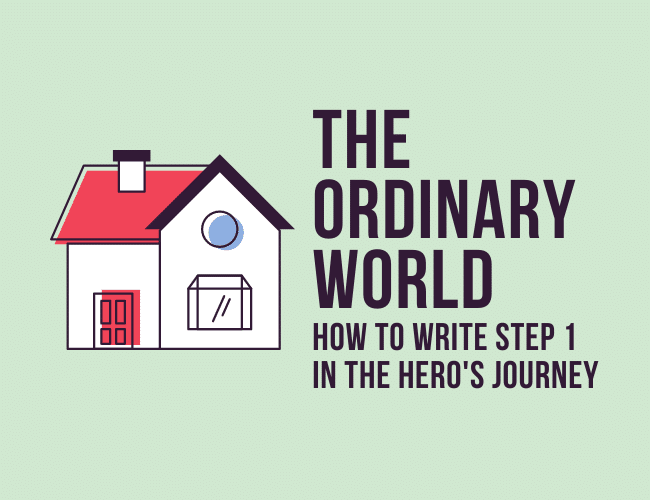
In storytelling, the hero's journey has to do with the stages of the hero as researched by Joseph Campbell and Christopher Vogler. Decades ago, these two storytelling experts identified several common trends that appear in great works from every generation and every culture.
One of those trends is structure.
Thankfully this structure has a proven track record of success. This successful record is so long, in fact, that we don't know when it started.
And it all begins with a person living an ordinary life.
What Is the Hero's Journey?
The Hero's Journey is a timeless combination of characters, events, and symbols frequently structured as a sequence of twelve steps. It is a storytelling structure that anyone can study and utilize to tell a story that readers will love.
You can learn all about the twelve steps that make up the universal structure of great stories in this article . Today, I'd like to take you even further into the first of those steps.
Let's take a look at the beginning: The Ordinary World.
Hero's Journey Step #1: Start Ordinary
We have Hollywood screenwriter and executive Christopher Vogler to thank for our condensed version of the Hero's Journey. If you're curious, his most notable credit is a film that makes explicit use of the Hero's Journey: The Lion King.
In Vogler's simplification of Campbell's theory, there are twelve steps to the Hero's Journey (I cover each one in-depth in a detailed Hero's Journey blog series, this article being one of those special articles).
The first step of the Hero's Journey involves establishing your hero's day-to-day ordinary life, all so it can be disrupted by the impending Inciting Incident. This is the Ordinary World.
This is when you establish the hero's day-to-day life, all so it can be disrupted by the impending Inciting Incident. Tweet this 
2. Lower the expectations
In the beginning, no one can know how heroic your protagonist will be. Don't fall victim to cheesy irony or heavy-handed foreshadowing. Keep your hero low, and bury them in the judgment of the community.
If you've ever lived in a small town, you know exactly what I'm talking about. The same can be said for the community, or “World,” itself. Often a community will expect nothing of itself because no one expects anything of it. It is its own special world where the rules are different, but not in a favorable way.
Think about that town you grew up near that was “trash.” Maybe it was your town. What effect does that have on its people?
Remember: Luke comes from Tattoine, a desolate rock floating in the outer regions of space. He's a nobody.
Katniss Everdeen hails from District 12, the armpit of Panem. Its claim to fame is coal mining, the career that killed Katniss' father. She, too, is a nobody.
Find unique ways to make your hero a nobody. Then surround them with allies, partners, bandmates who are also nobodies.
Readers love an underdog story, and to tell one you've got to make sure you create a clear idea in the reader's mind what “under” truly means.
3. Create a false sense of security
As the writer, you know conflict is coming. It has to come, either from within or without.
But the community, and possibly your hero, can't know it yet. Everything needs to seem happy and fine.
Remember that the effect of this false sense of security is suspense , a priceless effect you want to provide your readers whenever possible. Then, when comforts come undone and the world as we know it is destroyed, you'll unlock the dramatic potential of your story's core value.
If you want that huge payoff when your hero returns victorious at the story's end, then you'll need to build the suspense and sketch that arc starting at the very beginning.
Let's Get Ordinary
It's time to start spicing and seasoning your storytelling with elements of this timeless and beloved story structure. I know you want to tell a great story. I know you want your tales to be the talk of Barnes and Noble, Amazon.com, and IMDB. You're in the right place to do exactly that!
So think about it: What are you working on now that could benefit from some of these archetypal elements? Why not try adding some elements to your current work-in-progress, or to a finished draft you're struggling to revise?
Keep in mind, even if your world is unique in the beginning, it still needs to start out as ordinary to your hero. Like Tattoine. Or the Shire.
Every world in the beginning of the book should be ordinary for the hero who is about to accept a Call to Adventure that pulls them away from it.
And after you've mastered the Ordinary World, you can learn more about Step Two of the Hero's Journey, the Call to Adventure, in this article .
Along with more writing tips on how to structure this important step into your story!
What Ordinary Worlds can you think of in stories you've read and watched? Let us know in the comments .
Put the Hero's Journey into action by writing your own story using the Hero's Journey framework.
Start to create your own Ordinary World! Get started by freewriting for fifteen minutes based on these questions:
- Where are your character's parents? (Hint: they're probably not home creating a happy, secure family)
- Why are people's expectations for your character so low? (Maybe they're a farmhand, or a servant, or a short-order cook at Waffle House, or an average but not exceptional student)
- What is the story's core value? How does the hero pursue it in boring everyday life? (Bonus points if there's a hidden threat to this core value your protagonist doesn't yet know about)
Take fifteen minutes to answer one or more of the questions above. If you have extra time, start writing the beginning of your story.
Write your Practice in the box below. When you're done, don't forget to support your fellow writers by commenting on someone else's work, too!
David Safford
You deserve a great book. That's why David Safford writes adventure stories that you won't be able to put down. Read his latest story at his website. David is a Language Arts teacher, novelist, blogger, hiker, Legend of Zelda fanatic, puzzle-doer, husband, and father of two awesome children.

Trackbacks/Pingbacks
- Hero’s Journey: How to Write the Call to Adventure and Refusal of the Call - […] weeks ago we explored the beginning of every great story, Step #1: An Ordinary World with an ordinary, relatable…
- The Hero's Journey: The Key to Writing Your Hero Meeting the Mentor - […] the start of our Hero’s Journey series? Start here with Step 1: the Ordinary World and Steps 2 and…
- The Hero's Journey: How to Write the Crossing the Threshold Scene - […] Hero’s Journey story begins humbly in the protagonist’s “Ordinary World,” where corruption lurks within, or danger attacks from beyond.…
- The Hero’s Journey: How to Write the Crossing the Threshold Scene - […] Hero’s Journey story begins humbly in the protagonist’s “Ordinary World,” where corruption lurks within, or danger attacks from beyond.…
- The Hero's Journey: How to Fill Your Story With Trials, Allies, and Enemies - […] means your hero has started humbly (Ordinary World), experienced a Call to Adventure, Refused that call somehow, and found…
- The Hero's Journey: How to Outline the Approach and the Ordeal - […] a quick refresher, your hero starts humbly (Ordinary World), experiences a Call to Adventure, Refuses that call somehow, and finds…
- The Hero's Journey: How to Write the Climax of Your Story - […] hero will always begin in some sort of Ordinary World, a place where no one expects much of […]
- The Hero’s Journey: How to Write the Climax of Your Story – Books, Literature & Writing - […] hero will always begin in some sort of Ordinary World, a place where no one expects much of anyone.…
- How to Write the Climax of Your Story – Lederto.com - […] hero will always begin in some sort of Ordinary World, a place where no one expects much of […]
- The Hero's Journey: How to Build Suspense With a Fake-Out Ending - […] hero will always begin in some sort of Ordinary World, a place where no one expects much of […]
- The Hero's Journey: The Universal Structure of Great Stories : The Write Practice - […] hero will always begin in some sort of Ordinary World, a place where no one expects much of […]
- The Hero's Journey: How to Write the Resurrection - […] hero will always begin in some sort of Ordinary World, a place where no one expects much of […]
- The Hero's Journey: How to Write the Return With the Elixir - […] hero will always begin in some sort of Ordinary World, a place where no one expects much of […]
- The Hero’s Journey: How to Write the Return With the Elixir and Master the Perfect Ending – Books, Literature & Writing - […] hero will always begin in some sort of Ordinary World, a place where no one expects much of anyone. Then…
- The Perfect Hero’s Journey Example: Star Wars – Lederto.com Blog - […] Ordinary World: Luke lives in Tatooine but doesn’t like it. Like all Heroes, his eyes are drawn to the…
- The Perfect Hero’s Journey Example: Star Wars - Your Sunglasses Store - […] Ordinary World: Luke lives in Tatooine but doesn’t like it. Like all Heroes, his eyes are drawn to the…
Submit a Comment Cancel reply
Your email address will not be published. Required fields are marked *
Submit Comment
Join over 450,000 readers who are saying YES to practice. You’ll also get a free copy of our eBook 14 Prompts :
Popular Resources
Book Writing Tips & Guides Creativity & Inspiration Tips Writing Prompts Grammar & Vocab Resources Best Book Writing Software ProWritingAid Review Writing Teacher Resources Publisher Rocket Review Scrivener Review Gifts for Writers
Books By Our Writers

You've got it! Just us where to send your guide.
Enter your email to get our free 10-step guide to becoming a writer.
You've got it! Just us where to send your book.
Enter your first name and email to get our free book, 14 Prompts.
Want to Get Published?
Enter your email to get our free interactive checklist to writing and publishing a book.
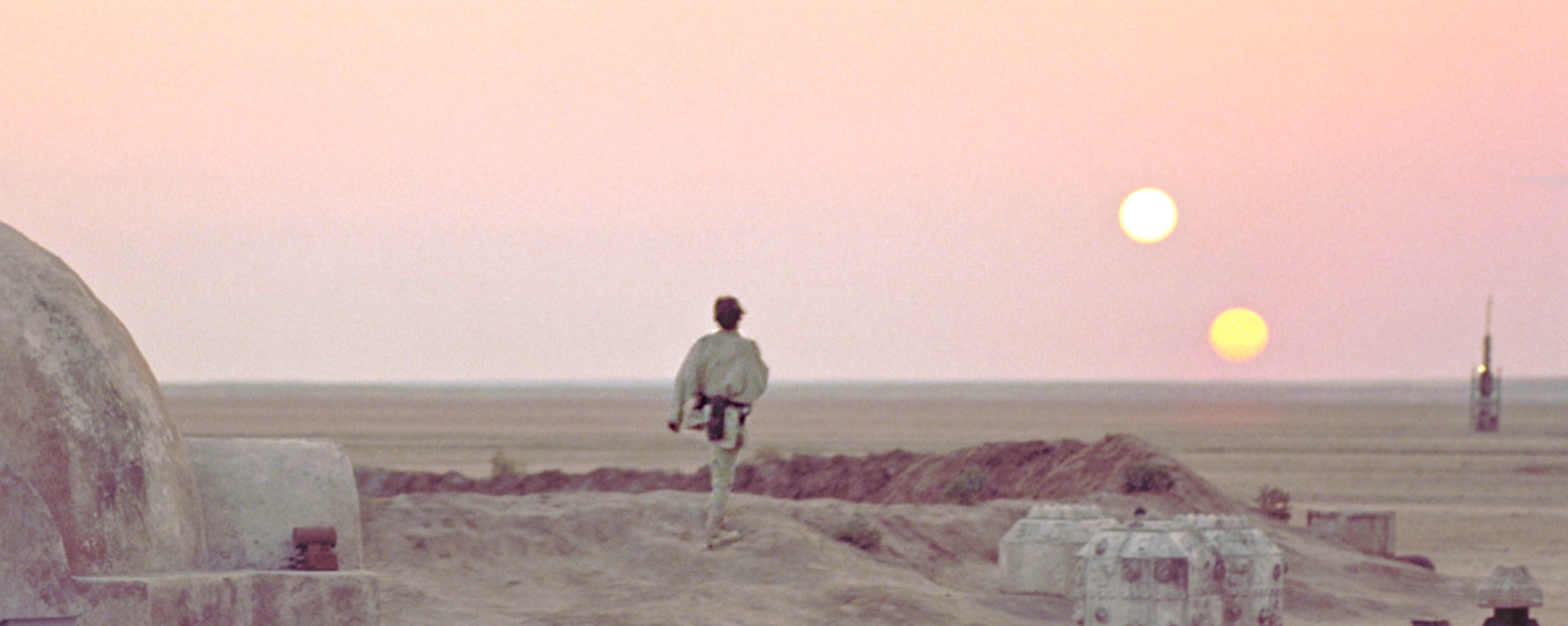
How the Hero’s Journey Made Star Wars a Modern Myth
by Lewis / April 16, 2019 / Lessons From Film , Story Structure
Myths occupy a special place in human history.
Not only do myths shape our worldview and sense of community, but they stick with us for generations after their creation. To this day stories of Thor, Anubis, Beowulf, and many others are preserved and shared, despite being centuries old. Unfortunately, many people feel the days of mythology are over, and it’s easy to understand their view—the old myths they’re used to aren’t being created today.
However, that doesn’t mean none are being created. While it might be hard to imagine, George Lucas’ Star Wars has slowly grown and evolved into a modern myth of its own, thanks in large part to how Star Wars uses a generations-old story—the Hero’s Journey.
What Makes Star Wars a Myth?
- 1.1 The Shape of Modern Myths:
- 2 How Star Wars Became a Modern Myth
- 3.1 The Ordinary World:
- 3.2 The Call to Adventure:
- 3.3 Overcoming Resistance:
- 3.4 Crossing the Threshold:
- 3.5 Tests and Trials:
- 3.6 The Major Ordeal:
- 3.7 The Road Back:
- 3.8 Mastering the Journey:
- 3.9 Returning With the Elixir:
- 4.1 The Hero’s Journey:
- 4.2 Using Your Theme:
- 4.3 Cultural Values:
- 4.4 A Sense of History:
- 5 My Hopes For Your Story
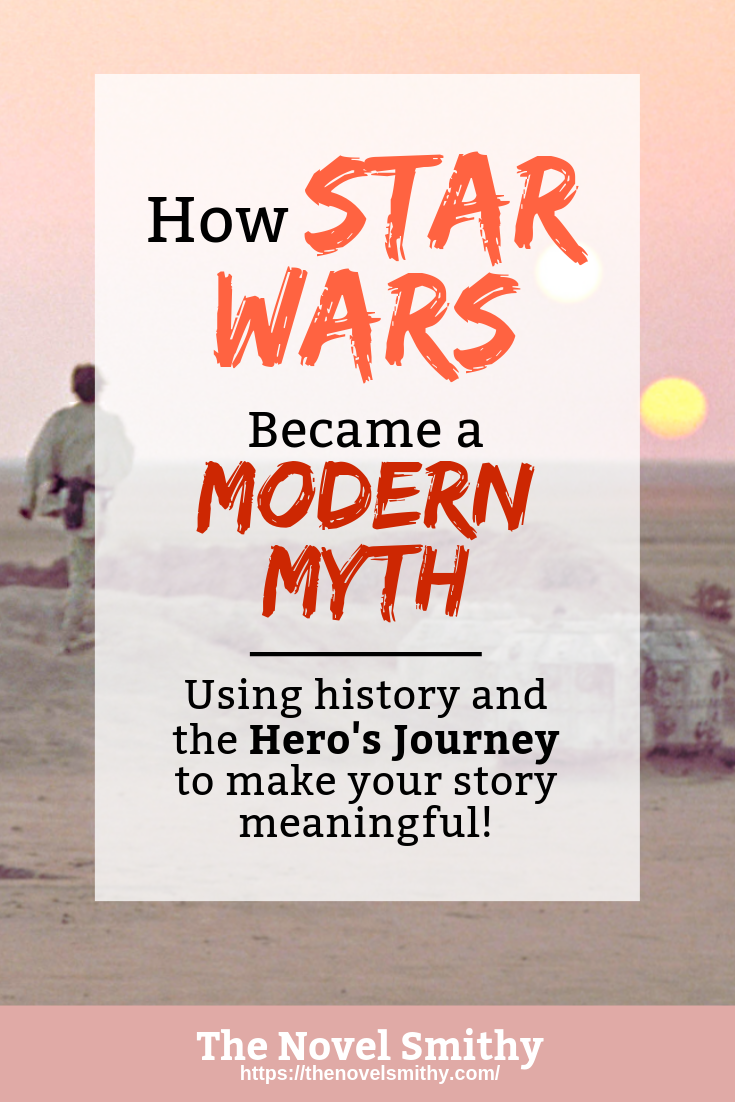
In the broadest sense, myths are simply stories passed down throughout generations as a way of creating a collective culture.
Myths are how we process and remember our history, connecting the traditions and beliefs of the older generations for the younger ones.
Even though they were fictionalized, myths contained lessons and snippets of real history that gave that culture a sense of unity. This means that, not only do myths make great stories, but they’re essential parts of our identity.
This might seem weird in the modern world.
After all, these days we have history textbooks and museums to document our past for the next generation. But you have to remember that storytelling began in communities where memory was the only way to preserve history.
When humans lived without writing, myths were a critical part of the oral tradition. They were how we kept track of history, because they were far easier to remember and pass down around the fire than a stale recounting of events. Think about it. How much of that history textbook you read for 11 th grade World Civilizations do you actually remember?
I have a degree in History, and even I barely remember any of those dry textbooks! 😛
The Shape of Modern Myths:
Still, despite developing written language and shifting into a world where historians remember our history for us, modern myths still play a similar role as they did in ancient societies. They’ve simply shed the fantastical settings and plots driven by angry gods and demons, replacing them with stories of a more historical nature:
- Myths of “The Great Wars” (World Wars I and II) help shape modern ideas of Western unity. According to these stories, the United States and Europe faced a deadly conflict together and came out on the other side culturally and militarily unified.
- American Westerns and myths of the American Revolution shape how the United States views its founding and later expansion. In these stories, the US was “destined” to conquer North America.
While both of these examples are US-centric (mostly because I’m from there), every nation and culture has stories like these that define their national identity. Whether these cultural narratives are justified or even historically accurate isn’t important, and often they aren’t. What is important are the values and identities they pass on to each generation.
Myths aren’t limited to nations or cultures either.
Almost every family and friend group will have unique myths of their own.
When you grow up being told stories about your grandmother immigrating to a new country, struggling to establish herself, and eventually discovering a better life, you’re preserving a family myth. Likewise, when your friend group reminisces about past exploits and adventures, you’re passing on myths unique to that group.
In both of these instances, these personal myths serve the same function as the ancient myths full of strange beasts and gods you traditionally think of—they’re creating a sense of shared history and identity.
Essentially, a culture.
How Star Wars Became a Modern Myth
Much like Zeus or King Arthur, the adventures of Luke Skywalker didn’t stop after a single generation. Kids today still watch Star Wars with their parents, whose own parents were exposed to it during college before eventually sharing it with them.
As each successive generation experiences Star Wars’ story, they create a sense of shared history and values. It begins with friend groups, before becoming a family tradition, before evolving into a cultural phenomenon.
Now, with the new Disney sequels, the world of Star Wars is further cemented in our collective culture.
Just as the stories of Hercules passed on lessons about strength, Luke’s journey teaches us to value redemption and selflessness. These values become ingrained in us the longer Star Wars remains a cultural icon, slowly but surely turning Star Wars into a myth in it’s own right.
Of course, many people wouldn’t think of Star Wars as a myth at first glance. To them, myths are full of harpies, hydras, and giants. Even if they understand the historical side of myths we explored above, Star Wars just doesn’t seem to fit the bill.
Until you look closer.
You see, the common thread in these myths is something called the Hero’s Journey .
Developed by Joseph Campbell in the 1940s, the Hero’s Journey is a monomyth, a common storytelling structure found in almost all mythology. It plays on common patterns of growth and change, focusing on questions we all ask at some point:
- What’s my purpose?
- What will it mean to grow up?
- What else is out there?
- What does it mean to die?
I did an entire article on the structure of the Hero’s Journey awhile back, but put simply, the Hero’s Journey follows a character as they grow up, leaving their ordinary world after being called on an adventure. They’ll face a series of trials before overcoming a major ordeal, eventually returning home to give their new knowledge, skills, and experience to their community. In the process, they not only grow wiser and stronger, but better their society as a whole.
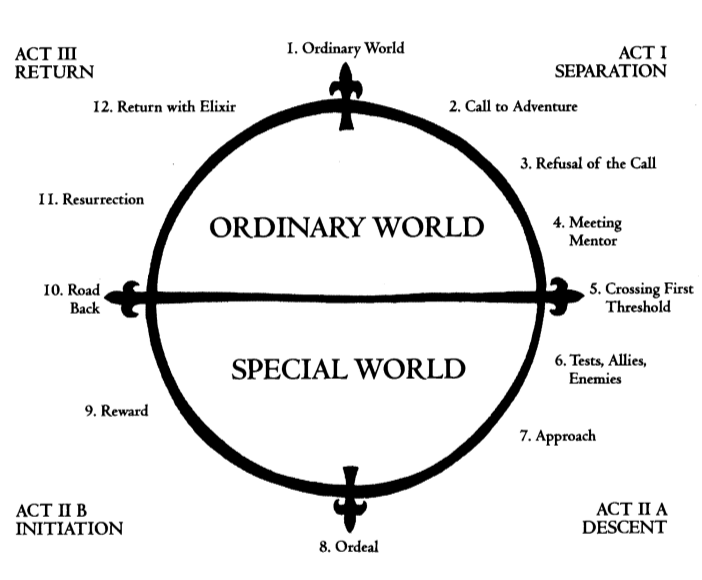
Star Wars and the Hero’s Journey
The ordinary world:.
Luke is a farm boy on Tattooine with his aunt and uncle, dreaming of bigger things. He’s childish, a bit whiney, and very naïve. Essentially, he hasn’t grown up yet.
The Call to Adventure:
Luke meets Obi-Wan Kenobi while trying to find R2-D2, and Obi-Wan offers for Luke to join him on a quest to save Princess Leia and become a Jedi, like his father was.
Overcoming Resistance:
Luke refuses Obi-Wan’s offer, unable to confront a change that massive, until he returns home to find his aunt and uncle have been killed by Stormtroopers.
Crossing the Threshold:
Now with a personal reason to hate the Empire, Luke sets out with Obi-Wan to find a ship that can take them to Alderaan. Here they meet Han Solo and Chewbacca, and ultimately escape Tattooine into open space.
Tests and Trials:
Most of the rest of the original trilogy focuses on Luke’s tests and trials. These tests are there to push him out of his old life and show him how flawed his world actually is. For instance, he helps the rebels destroy the first Death Star, trains with Yoda on Degobha, and fights Darth Vader in Cloud City. Those are only a few of his trials, but they all mark major moments of growth for Luke as a character. His worldview is changing, and he’s being forced to sort out what he does and doesn’t believe in.
The Major Ordeal:
For Luke, his greatest ordeal is facing Darth Vader in combat, only for it to be revealed that Darth Vader is in fact his father. This deeply shakes Luke’s views, both of himself and his world, but it’s also a moment of growth. Luke knows the truth now—he has both a dark side and a light side, and must attain mastery of both. It’s one of the most defining moments in cinematic history for a reason.
The Road Back:
Luke learned a critical lesson during Darth Vader’s reveal and has gained a new mastery of the force, thanks to his recognition of his own Dark Side. Meanwhile, the Rebellion is preparing a final attack to end the Empire. They go to Endor to destroy the new Death Star’s shields while Luke travels to the Death Star alone on his own mission. He surrenders himself to Darth Vader and the Emperor to get closer to his goal.
Mastering the Journey:
After Luke surrenders himself, the Emperor reveals the trap he’s set for the Rebellion, and promises to make Luke watch as he destroys his friends. He wants Luke to give into his hatred and go over to the Dark Side, but Luke is stronger thanks to his journey. He declares himself a Jedi just like his father, and helps redeem Darth Vader, who ultimately kills the Emperor before he can harm Luke.
Returning With the Elixir:
Luke and the Rebellion survive, putting an end to the Empire and bringing back peace to the galaxy. Luke puts Darth Vader’s spirit to rest, allowing him to join is old friends and Jedi masters (Obi-Wan and Yoda) as a spirit. The force is back in balance.
How Mythology Impacts Your Novel
Ultimately, the Hero’s Journey plays a big role in what makes Star Wars an enduring modern myth. Luke’s journey from childish naivete to adult wisdom is something we all experience and is central to Campbell’s monomyth.
Even George Lucas acknowledged the importance of the Hero’s Journey in his creation of Star Wars:
“In the three decades since I discovered The Hero with a Thousand Faces, it has continued to fascinate and inspire me. Joseph Campbell peers through centuries and shows us that we are all connected by a basic need to hear stories and understand ourselves. As a book, it is wonderful to read; as illumination into the human condition, it is a revelation.” – George Lucas
However, you don’t have to be George Lucas to use the best aspects of Star Wars to your advantage. Anyone can write a story with the same level of cultural impact and enduring presence by keeping a few things in mind:
The Hero’s Journey:
The Hero’s Journey provides a great blueprint for your story’s progression that you can then remix and make your own by introducing unique ideas. This is really what defines Star Wars as a myth. However, this requires a solid understanding of Campbell’s monomyth first, more than I can cover here.
Check out these two posts for way more detail:
- 9 Stages of the Hero’s Journey and How to Use Them
- The 8 Key Archetypes of the Hero’s Journey
Using Your Theme:
Much of Star Wars’ enduring success is because it touches on universal fears every generation will experience. So don’t shy away from big questions about life, death, meaning, and faith in your work. At the same time, be subtle about it (Star Wars doesn’t hammer you over the head with monologues about courage, after all).
By allowing your characters room to explore and experience these anxieties, your audience will not only share those fears, but more deeply empathize with your cast as a result.
- The Third Draft: the Secret to Finding Your Novel’s Soul
Cultural Values:
Star Wars embodies the values of the culture and time Lucas created it in, as all myths do. After all, that’s a big part of what makes them myths in the first place!
If you want your story to fulfill the same purpose, then you need to reflect on and drill down into the shared values of your culture, whether you’re targeting your story at an entire nation or a smaller cultural group. Does your society value power, aggression, diplomacy, generosity, independence, or community? There are a thousand variations to work with, so this will be something personal to you and your cultural identity.
A Sense of History:
Beyond the Hero’s Journey, Star Wars’ success was shaped by its sense of history.
Much like Tolkien’s experiences in the World Wars influenced The Lord of the Rings , George Lucas conceived of Star Wars during the Vietnam War and the subsequent protests that rattled American society. There were a lot of questions about justice, rebellion, democracy, and power in those years, and Lucas channeled all of those into what became Star Wars.
“It was really about the Vietnam War, and that was the period where Nixon was trying to run for a [second] term, which got me to thinking historically about how do democracies get turned into dictatorships? Because the democracies aren’t overthrown; they’re given away.” – George Lucas
This differs from writing historical fiction, however. Star Wars isn’t about the Vietnam War in the same way The Book Thief or City of Thieves are about World War II. Instead, Star Wars takes the common imagery and concerns of its recent history and turns them into a fantastical adventure, while still commenting on that history.
To make your story shine in the same way, you don’t need to make it about a recent conflict, and probably shouldn’t. After all, while myths are about our collective history, they’re also escapism. Instead, let history inform your story, while giving yourself room to comment on the trials and experiences your culture has been going through.
- History: The Secret Weapon of Fantasy Writers
My Hopes For Your Story
Now, I’ll be honest—I’m a huge history geek. I’m the type of person who reads myths for fun, but then also reads a sociologist’s account of what those myths say about their respective societies. On the nerd scale, I’m far up there. 🙂
Still, I hope that by unpacking what a myth represents I’ve helped reveal some secrets for how to make your story resonate with its audience. If myths have persisted as long as they have, it’s safe to say they did something right in the storytelling department.
By leveraging the collective history and values of your own culture, I hope your story might one day rise into the same mythological pantheon.
After all, much like the myths passed down around the campfires of old, full of harpies, hydras, and giants, Star Wars holds a special place in our world. It dwells on the fears and wonders of our modern society, while replacing dragons with space worms and kings with rebellion leaders who also happen to be princesses.
When you peel away the sci-fi settings and futuristic technology, what you’re left with is a traditional myth. Yet, Star Wars still feels uniquely its own. Thanks to its sense of history and its willingness to dive deep into the experience of growing up and finding balance, Star Wars has and will endure for many generations to come.
Star Wars, then, really seems to be a modern myth.
How has Star Wars influenced your writing? Let me know in the comments!
Thoughts on how the hero’s journey made star wars a modern myth.
Thanks Lewis. As always, you provide valuable content and a lot of great information in one post. This helped me understand the Hero’s Journey even better. Keep it up!
Thanks so much Rachel! I’m always excited to hear that you’ve enjoyed them. 🙂
This is a great way to break down the Hero’s Journey for folks who may have a hard time grasping it in more academic settings.
I’m glad to hear it helped you, Jessica! The Hero’s Journey can certainly be complex, despite what a great resource it is.
Leave a Reply Cancel reply
- Screenwriting \e607
- Cinematography & Cameras \e605
- Directing \e606
- Editing & Post-Production \e602
- Documentary \e603
- Movies & TV \e60a
- Producing \e608
- Distribution & Marketing \e604
- Fundraising & Crowdfunding \e60f
- Festivals & Events \e611
- Sound & Music \e601
- Games & Transmedia \e60e
- Grants, Contests, & Awards \e60d
- Film School \e610
- Marketplace & Deals \e60b
- Off Topic \e609
- This Site \e600
Unraveling The Concept of The Hero’s Journey in Filmmaking
This podcast featuring christopher vogler opens up a lot of storytelling ideas..
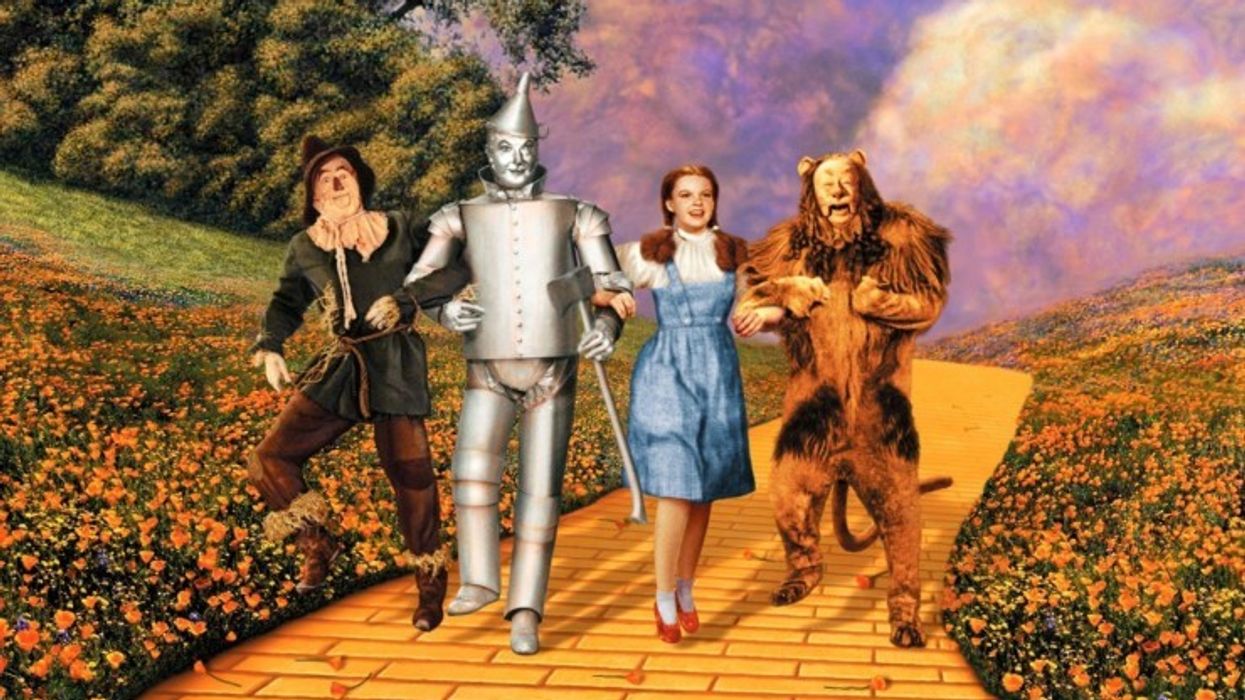
Many great stories, whether told through the written word or on the silver screen, share a common thread—a hero's journey. The Hero's Journey is a narrative structure that has been a fundamental part of storytelling for centuries, and it continues to be a powerful tool in filmmaking.
One of my favorite screenwriting books is ' The Writer’s Journey ', which details Joseph Campbell's journey through storytelling and takes the writer's POV.
This was the first book I read on screenwriting and one of the best.
Christopher Vogler wrote the book, and he was recently on the Film Crux podcast talking about these concepts. So check out the podcast and we'll talk after.
What is the Hero's Journey?
'Star Wars'
I figured that after the podcast you may need a refresher on Joseph Campbell and his concept of The Hero's Journey. This not a new concept; it dates back to ancient mythology and has been used by countless cultures throughout history.
Campbell was a scholar of comparative mythology and wrote a book called "The Hero with a Thousand Faces." He identified a common pattern in myths and stories from around the world, a pattern he called the monomyth or the Hero's Journey .
The Hero's Journey is a template that outlines the stages a hero typically goes through in a story. While there may be variations and adaptations, the core structure remains consistent.
It begins with the hero's ordinary world, followed by a call to adventure, a journey into the unknown, encounters with allies and enemies, a transformation or revelation, and finally, a return to the ordinary world with newfound wisdom or gifts.
A Diagram of The Hero's Journey
The Hero's Journey Diagram
Wikipedia Commons
The Hero's Journey is often depicted as a circular diagram, with each stage connected to the next in a cycle. there are many different names for the story beats in the circle.
The image above is from Wikipedia.
Here's a linear representation of Campbell's idea with beats I use when writing.
- Ordinary World : The hero's normal life before the adventure begins.
- Call to Adventure : The hero receives a call to leave their ordinary world and embark on a journey.
- Refusal of the Call : The hero hesitates or resists the call initially.
- Meeting the Mentor: The hero encounters a mentor or guide who provides advice or assistance.
- Crossing the Threshold : The hero commits to leaving the ordinary world and entering the unknown.
- Tests, Allies, and Enemies : The hero faces challenges, makes allies, and encounters adversaries.
- Approaching the Cave : The hero gets closer to the central challenge or conflict.
- Ordeal : The hero faces a major test, often their most significant challenge.
- Reward : The hero overcomes the ordeal and gains a reward or insight.
- The Road Back: The hero begins the journey back to the ordinary world.
- Resurrection : The hero faces one final, climactic challenge.
- Return with the Elixir: The hero returns to the ordinary world, transformed, and brings something valuable back.
Examples of The Hero's Journey in Film
'The Matrix'
Warner Bros.
Many iconic films have embraced the Hero's Journey structure to great effect. Here are a few examples:
- Star Wars : George Lucas drew heavily from Joseph Campbell's work when creating the Star Wars saga. Luke Skywalker's journey from a farm boy on Tatooine to a Jedi Knight follows the Hero's Journey pattern closely.
- The Lord of the Rings : J.R.R. Tolkien's epic fantasy trilogy, adapted into films by Peter Jackson, showcases the Hero's Journey through Frodo's quest to destroy the One Ring.
- The Matrix: The Wachowskis used the Hero's Journey to guide Neo's transformation from a computer hacker to "The One" who can save humanity.
- The Wizard of Oz: Dorothy's adventure in the Land of Oz is a classic Hero's Journey, complete with a call to adventure, allies, adversaries, and a return home with newfound wisdom.
How Filmmakers Utilize the Hero's Journey
- Creating Relatable Characters: One of the most significant advantages of the Hero's Journey in filmmaking is its ability to create relatable characters. Audiences connect with heroes who face challenges, make sacrifices, and experience personal growth. By following this narrative structure, filmmakers can craft characters that resonate with viewers on a deep emotional level.
- Building Tension and Conflict: The Hero's Journey provides a built-in framework for tension and conflict. As the hero progresses through the various stages, they encounter obstacles, adversaries, and setbacks, keeping the audience engaged and invested in the story's outcome.
- Engaging Audiences on an Emotional Level: The Hero's Journey is not just about physical challenges; it's also about the hero's internal journey. Filmmakers can use this structure to explore the hero's emotions, fears, and desires, allowing the audience to connect with the character on an emotional level.
- Crafting Memorable Endings: The return of the hero to the ordinary world at the end of their journey often leaves a lasting impact on the audience. Filmmakers can use this moment to deliver powerful messages, resolutions, or open-ended conclusions that leave viewers thinking long after the credits roll.
More Reading on The Hero's Journey
The Lion King (2019)
This is No Film School, of course we've written about this concept many times before. so here are some articles for you to peruse as well...
- What Are the Fundamentals of the Hero's Journey?
- What Is the 'Call to Adventure' in Storytelling?
- Joseph Campbell's Monomyth: A Brief History and Introduction
- Puppets Reenact Your Favorite Movie Moments to Explain Joseph Campbell’s ‘Hero’s Journey’
- The Other Hero's Journey: The Emotional Struggle of Screenwriting
- Over 48 Hours of Joseph Campbell Lectures Released for Free on Spotify
- This Supercut Takes You Through the Hero's Journey of over 50 Iconic Films
The Hero's Journey is a storytelling archetype deeply embedded in our collective consciousness. It provides filmmakers with a powerful tool to engage and captivate audiences.
By understanding and utilizing this narrative structure, filmmakers can create compelling stories with relatable characters, tension, and emotional depth.
Whether you're crafting a space opera or an intimate drama, the Hero's Journey remains a timeless blueprint for successful storytelling in filmmaking.
Let me know what you think in the comments.
- The Other Hero's Journey: The Emotional Struggle of Screenwriting ›
- This Supercut Takes You Through the Hero's Journey of over 50 Iconic Films ›
- What Are the Fundamentals of the Hero's Journey? ›
- Writing 101: What Is the Hero's Journey? 2 Hero's Journey ... ›
- The Hero's Journey: Joseph Campbell on His Life and Work (The ... ›
- Hero's journey - Wikipedia ›
Why Did the First Page of the 'Challengers' Screenplay Go Viral?
It's turns out, great writing will attract some attention..
The hottest movie of the year (so far) is the love triangle tennis drama Challengers , which feels like it was launched off the racket of a pro, and aimed directly for our groins. It's an exciting movie about a trio of budding tennis stars dealing with the intermingling of their affection for one another.
Over the weekend, while the movie was lighting theaters ablaze, the screenplay went viral on Twitter for a first page that just sings when you look at it.
Let's dig into the page below and examine why it went viral.
The 'Challengers' Screenplay
I'm typically a big proponent of white space but page 1 of Justin Kuritzkes' incredible CHALLENGERS script proves yet again that you can literally do whatever you want if the writing is compelling. — (@)
Over the weekend, the screenplay for Challengers by Justin Kuritzkes went absolutely viral on Screenwriting Twitter. People were astonished at the number of "unfilmables" on the first page of the script.
Typically, newer screenwriters are told that they should only put on the page the things they can show on the screen, and not to tell your reader any extras.
But the thing I have said many times over on this website is that there are no screenwriting rules. Your job is to create the blueprint for the story.
And on the first page here, we have some incredible writing that builds tension.
We immediately know the stakes in this movie and can feel the ripple of intensity that's pulsating throughout everyone on the screen.
Here's the thing, if you read past page one, this script falls back into a more natural storytelling techniques, and it weaves an amazing story. But page one is where you need to grab your readers.
If you just saw two people playing tennis, you wouldn't understand the context or what's at stake.
This script does a great job putting context into the character descriptions, making them attractive for the cast ereading as well as executives who may think about stars.
Also, it really sets the stage for the setting, so we fully understand these two are kind of slumming it here. And it plants a lot of questions as to why they are here, what their relationship is with each other, and with the woman watching them.
Screenwriting "rules" do not exist.
And if you can write as well as this first page shows Kuritzkes can, you can get away with anything you want.
Listen to our interview with Challengers writer Justin Kuritzkes
Read and download the Challengers screenplay here, for educational purposes only.
Let me know what you think about the comments.
What Are The Best Fantasy Movies of All Time?
What are the best adventure movies of all time, get your horror feature funded with unknown nightmare, what is a the thematic echo in screenwriting, stop bailing on your concept halfway though your screenplay, dji launches its most affordable drone ever with dji mini 4k, adobe’s latest firefly update to push generative ai further than ever before, what are the best science fiction movies of all time, 6 ways you can start and run a writing group, how ‘challengers’ screenwriter justin kuritzkes aces character, tension, and stakes.

- Scholarships
The Hero’s Journey: A Star Wars Story
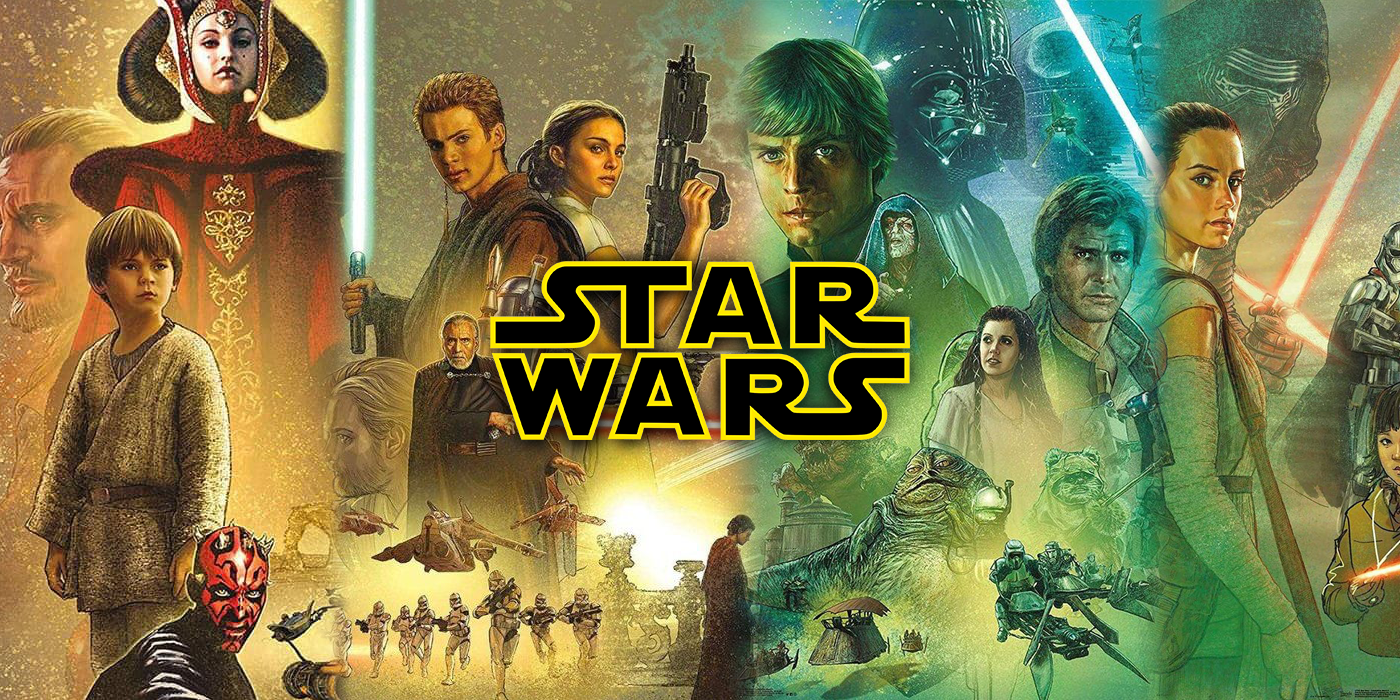
The Hero’s Journey was first coined in Joseph Campbell’s book: “The Hero of a Thousand Faces” in 1949. It is the idea that all myths tell the same story but with different characters and settings. As an avid Star Wars fan, I was curious to see exactly how close George Lucas followed the Hero’s Journey Formula when creating his galaxy far far away.
In his book, Joseph Campbell explains the principle that all heroes are the same but wear different “masks” or “skins”. This has been demonstrated in Star Wars through the main heroes of the franchise. Luke Skywalker from the original trilogy, Anakin Skywalker from the prequel trilogy, Rey Palpatine from the sequel trilogy, Ahsoka Tano from the Clone Wars animated series, and Ezra Bridger from the Rebels animated series, all follow similar development processes and story arcs. As laid out by Campbell, each character follows the formula shown in Figure 1. Since the original trilogy ( A New Hope, The Empire Strikes Back, and Return of the Jedi ) was created first, I will examine Luke’s journey more in depth.
I discovered that Luke Skywalker’s character development throughout the original Star Wars trilogy, especially Star Wars IV: A New Hope, was created based on the Hero’s Journey. In Star Wars IV: A New Hope, Skywalker’s “Call to Adventure” and “Supernatural Aid” were when Ben Kenobi explained “You must learn the ways of the Force if you're to come with me to Alderaan.” Through the force, he is called to break his mundane routine of moisture farming. Immediately, Skywalker refuses the call, which is a common event in variations of the Hero’s Journey. Skywalker then overcame the “Threshold Guardians” via the stage directions: “The speeder is stopped on a crowded street by several combathardend stormtroopers who look over the two robots. A Trooper questions Luke.” Next, he crosses “The Threshold of the Known to the Unknown” by leaving Tatooine to find Alderaan. Along the way, Skywalker receives basic Jedi training from Ben Kenobi, his mentor. A challenge Skywalker faces is when he, Ben Kenobi, Han Solo, and Chewbacca are captured by the Death Star. A temptation Skywalker faces is when he decides to free Princess Leia Organa instead of sticking to their original mission of fleeing the Death Star. In turn, he tempts Solo with riches that the Princess is sure to provide upon her safe delivery from the Empire. Skywalker reaches an “Abyss” when Ben Kenobi is killed by Darth Vader on the Death Star: “Luke, saddened by the loss of Obi-Wan Kenobi, stares off blankly as the robots look on.” The “Revelation and Transformation” out of the “Abyss” took place during General Dodonna’s briefing on destroying the Death Star. Skywalker’s transformation continued with him destroying the Death Star and saving the Rebellion Forces. After the battle is won, Skywalker, Solo, and Princess Organa meet up and atone with one another. The “Gift of the Goddess” occurs when the celebration scene occurs: “Leia is dressed in a long white dress and is staggeringly beautiful. She rises and places a gold medallion around Han's neck… She then repeats the ceremony with Luke”. Skywalker does not return to Tatooine until Episode VI: Return of the Jedi, as his new “Known” place is within the Rebellion. Taking the trilogy as a whole, Skywalker’s “Call to Adventure” is during Episode 4, his “Abyss” is Episode 5, his “Transformation” takes place in Episode 6, and the other journey markers fall within the three films. Skywalker is fated to follow this formula both immediately in his first film and over the course of five years, spanning the entire trilogy.
I discovered that Star Wars does use the Hero’s Journey and its pattern is identifiable in Luke’s character arc. Thank you for joining me and may the force be with you.
Here are the sources I used:
- “How Mythologist Joseph Campbell Made Luke Skywalker a Hero | CBC Radio.” CBCnews , CBC/Radio Canada, 3 Sept. 2019, www.cbc.ca/radio/ideas/how-mythologist-joseph-campbell-made-luke-skywalker-a-hero-1.5262649
- Klimo, Mike. “Parallel Journeys: Why the Star Wars Films Are More Connected Than You Think.” StarWars.com , Lucasfilm Ltd., 27 Oct. 2015, www.starwars.com/news/parallel-journeys-why-the-star-wars-films-are-more-connected-than-you-think.
- Screenwriting, Bulletproof. “Star Wars Movies: Screenplay Download.” Bulletproof Screenwriting , Bulletproof Screenwriting™, 10 June 2020, bulletproofscreenwriting.tv/star-wars-movies-screenplay-download/
- Seastrom, Lucas. “Mythic Discovery: Revisiting the Meeting between George Lucas and Joseph Campbell.” StarWars.com , Lucasfilm Ltd., 22 Oct. 2015, www.starwars.com/news/mythic-discovery-within-the-inner-reaches-of-outer-space-joseph-campbell-meets-george-lucas-part-i.
- “The Monomyth (The Hero's Journey): The Hero's Journey.” University Libraries , Grand Valley State University, 11 Oct. 2020, libguides.gvsu.edu/c.php?g=948085&p=6857311

Open The Gates of Education Freedom: How to Make University Higher Quality and More Affordable

University would be higher quality and more affordable if students are able to attend a home university where they take a minimum of one class and the option take the remaining classes at any other accredited university in the country.
Crypto Scholarships: Funding Education with Crypto
This is about Atila's crypto scholarships

How the Toronto Raptors Built the Best Sports Marketing Brand in Canada and Possibly the Entire NBA

“Look at this, look around you, we created this, this didn’t exist before we were here.... I love Toronto, I love this team, and we are going to the NBA Finals!” - Drake

- ✉️ Subscribe to our newsletters
The Hero’s Journey: Pro tips from Star Wars
How to win (or lose) the "story wars" (part iii)..
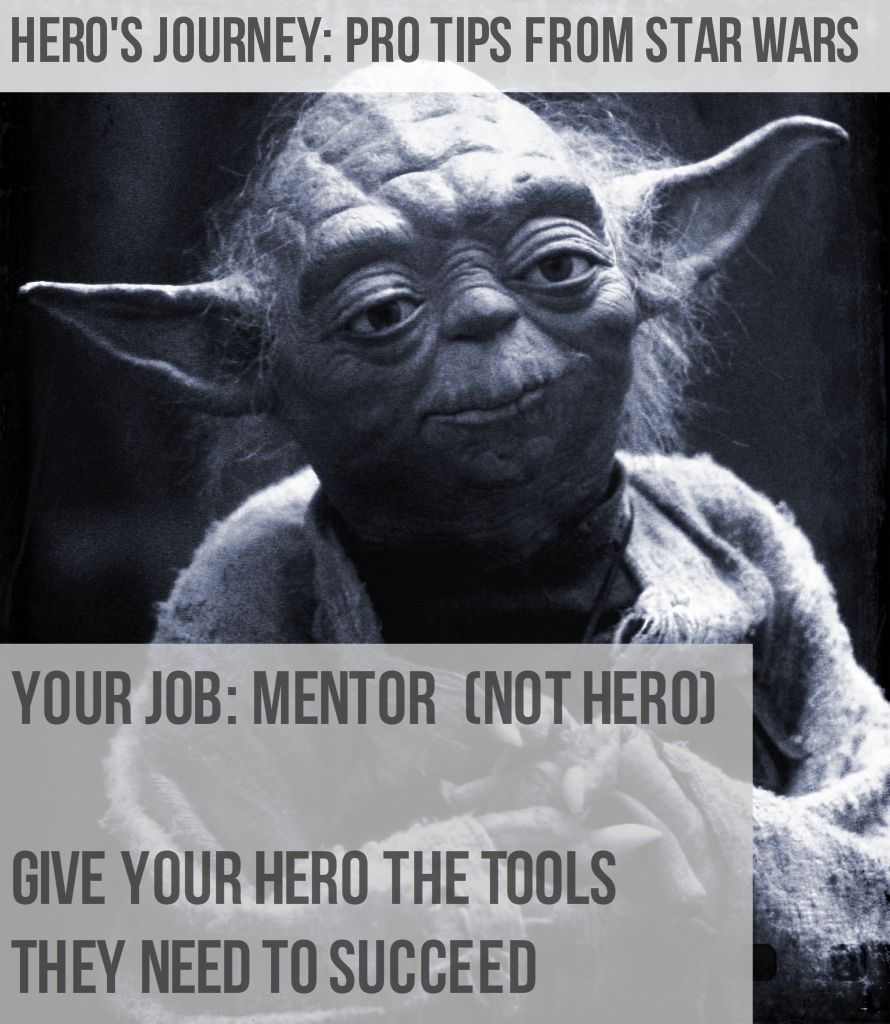
Variations on a basic, familiar story have been told over and over across centuries and cultures, knitting communities together through shared values and beliefs. Joseph Campbell , scholar of religion and mythology, gave us a name for it: the hero’s journey .
The hero’s journey does indeed manifest in all kinds of stories—from creation myths and folk legends to children’s books and blockbuster movies. These are the stories we tell to shape and reinforce how we understand ourselves and our world. These stories can call us to action too, rallying people around a common purpose when things aren’t right. As Campbell put it, when you hear such a story, you respond “Aha! this is my story. This is something I always wanted to say but wasn’t able to say.”
Essentially, the hero’s journey is this: An (often reluctant) hero sees a threat to his—or her—values and what he holds dear. (Think: Luke Skywalker). His world is out of balance. He is not powerful but he is moved to action. He embarks on a quest to make things right. He takes on the villains who pose the threat. And he’s helped along the way by a mentor (think: Yoda) who gives him the tools to succeed (not just lightsaber skills, but confidence—lessons in using The Force). He does it all for the good of his community, not just for himself.
You got that? Hero, threat, quest, villains, mentor, and tools. (There are also villains’ weapons- –which in the public policy arena, usually amount to anything that stalls progress or spreads confusion and misinformation. Usually money and political power.)
Jonah Sachs author of Winning the Story Wars , sees the hero’s journey as a compelling formula for “modern mythmakers”—those of us who want to inspire change for the common good.
The elements seem simple enough. The structure is familiar. But applying the hero’s journey to our own campaigns, organizational stories, or empowerment marketing strategies isn’t always so easy, especially when it comes to sorting out the role we—as storytellers—play in our own stories.
Here are some tips from Sachs—and George Lucas—for doing it right:
Hero’s Journey: Pro Tips from Star Wars
- I’m like Luke! Your target audience should see themselves in your hero, standing up for what they believe. (Think: soccer mom, Joe the plumber.)
- Storyteller’s job: Yoda. You are the mentor , not the hero. You give heroes the tools they need to succeed: confidence, a policy solution…lightsaber skills…
- The Force. Heroes feel powerless; no quest is easy. (Think: little guy vs. big corporate power). Your story illustrates how they can beat the odds .
- Must Have: Galactic Empire. It is against the bad guys that heroes define their values, galvanize support, and unify message. Plus, it feels good to hold them accountable.
P.S. It’s no surprise that George Lucas was a fan of Joseph Campbell. And, may The Force be with you!
Anna Fahey Senior Director of Strategy
Recommended reading.

Poll: Washington Voters Out Ahead Of Local Leaders On Zoning Reforms
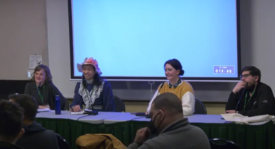
Recipes for Successful Abundant Housing Communications

How to Tear Down the Invisible Walls in Your City's Zoning Code

🗞️ Visit Sightline Daily for the day’s top headlines for Cascadia each Monday, Wednesday, and Friday, curated by the news editors of Sightline Institute.
See our picks here

Americans Want to Vote As Trump Does (By Mail), Not As He Says

State-Wide Housing Solutions Matter: Talking Points
Aung Thu Hein
I like your story. It is a good one.Please upload more story
John Abbotts
Anna, thank you for your continuing tips on how to frame the debate.
I have my own suggestions for framing the Evil Corporate Empire(s):
“Malefactors of Great Wealth,” I think from FDR originally.
“The Corporate 1%,” from Occupy.
“The Fossil Fuel Industry Hates Your Children,” from Exxon Hates Your Children, at https://www.youtube.com/watch?v=02j2FFjgoS0
“The Coal Industry, conducting War against its own workers, human health, and a sustainable future for humanity.”
Also a full storyline that I earlier suggested to Eric, “Sightline: Defending the Children of Light from the Forces of Darkness/Coal Dust/Corporate Malfeasance.”
I hope one of these may be useful to someone.
Leave a Comment Cancel reply
Please keep it civil and constructive. Our editors reserve the right to monitor inappropriate comments and personal attacks.
You may add a link with HTML : <a href="URL">text to display</a>
✉️ STAY INFORMED
Subscribe to our newsletter to get more Strategic Messaging research, analysis, and other policy updates delivered to your inbox
- Privacy Overview
- Strictly Necessary Cookies
- 3rd Party Cookies
- Additional Cookies
- Cookie Policy

This website uses cookies so that we can provide you with the best user experience possible. Cookie information is stored in your browser and performs functions such as recognizing you when you return to our website and helping our team to understand which sections of the website you find most interesting and useful.
Strictly Necessary Cookie should be enabled at all times so that we can save your preferences for cookie settings.
If you disable this cookie, we will not be able to save your preferences. This means that every time you visit this website you will need to enable or disable cookies again.
This website uses Google Analytics to collect anonymous information such as the number of visitors to the site, and the most popular pages.
Keeping this cookie enabled helps us to improve our website.
Please enable Strictly Necessary Cookies first so that we can save your preferences!
This website uses social media to collect anonymous information such as which platform are our users coming from.
Keeping this cookie enabled helps us better reach our audiences.
More information about our Site Policy
Breaking Down the Character Archetypes of the Hero’s Journey
You’ve read about George Lucas’s use of Joseph Campbell’s Monomyth found in his 1949 book, A Hero with a Thousand Faces , which is a common narrative pattern found in many stories from many different cultures worldwide. This narrative journey typically involves several character archetypes that affect the hero’s journey from beginning to end.
After the successful debut of Star Wars and Lucas’s discussions on using Campbell’s work as inspiration for his space opera, many producers, development executives, filmmakers, and screenwriters have explored the Monomyth with deeper and simplified approaches.
Christopher Vogler's Interpretation of the Hero's Journey
When Christopher Vogler, a development executive and screenwriter at Disney, was inspired by Joseph Campbell's concept of the story monomyth, he crafted a seven-page memo for Disney's development team and incoming screenwriters.
This memo, A Practical Guide to Joseph Cambell’s The Hero with a Thousand Faces , laid the groundwork for what would later become Vogler's 1992 book, The Writer's Journey: Mythic Structure for Storytellers and Screenwriters . In this book, Vogler expanded upon Campbell’s ideas.
He adapted Campbell's mythical story structure into twelve distinct stages (from Campbell’s initial seventeen). Our concise interpretations of these stages include:
- The Ordinary World : We see the hero's normal life at the start of the story before the adventure begins.
- Call to Adventure : The hero faces an event, conflict, problem, or challenge that makes them begin their adventure.
- Refusal of the Call : The hero initially refuses the adventure because of hesitation, fear, insecurity, or any other issues.
- Meeting the Mentor : The hero encounters a mentor who can give them advice, wisdom, information, or items that ready them for the journey ahead.
- Crossing the Threshold : The hero leaves their ordinary world for the first time and crosses the threshold into adventure.
- Tests, Allies, and Enemies : The hero learns the rules of the new world and endures tests, meets friends, and comes face-to-face with enemies.
- The Approach : The initial plan to take on the central conflict begins, but setbacks cause the hero to try a new approach or adopt new ideas.
- The Ordeal : Things go wrong, and added conflict is introduced . The hero experiences more difficult hurdles and obstacles, some of which may lead to a life crisis.
- The Reward : After surviving The Ordeal, the hero seizes the sword — a reward that they've earned that allows them to take on the biggest conflict. It may be a physical item or piece of knowledge or wisdom that will help them persevere.
- The Road Back : The hero sees the light at the end of the tunnel, but they are about to face even more tests and challenges.
- The Resurrection : The climax. The hero faces a final test, using everything they have learned to take on the conflict once and for all.
- The Return : The hero brings their knowledge or the " elixir " back to the ordinary world.
Within these stages are character archetypes that help to shape the hero’s journey, and their eventual character arc throughout the story.
Read More: Exploring the Twelve Stages of the Hero’s Journey
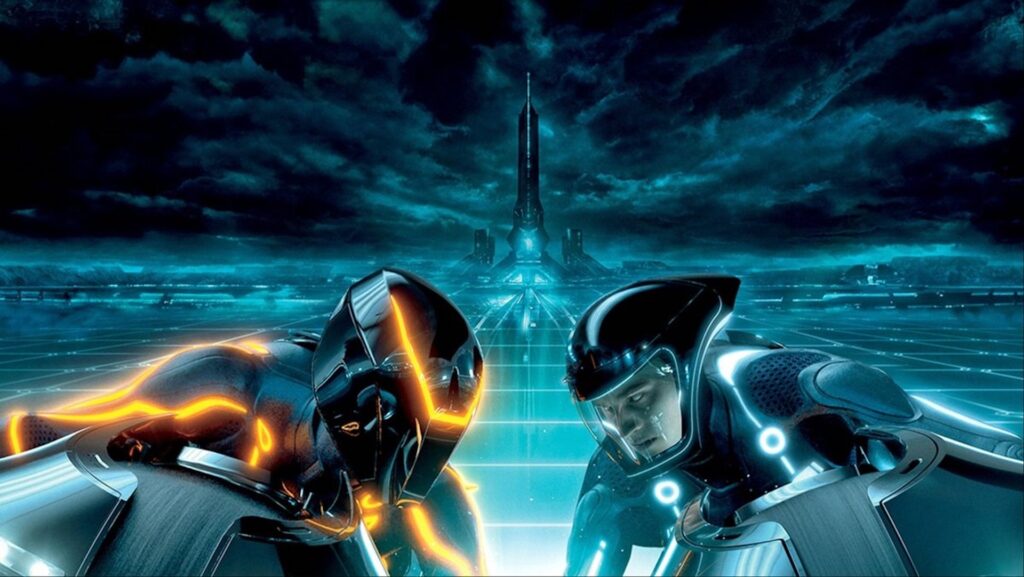
'Tron: Legacy' (2010)
What Are Character Archetypes?
A character archetype is a common recurring representation of a character that embodies a set of universal and recognizable traits or characteristics. These archetypes are seen throughout literature, film, and other storytelling mediums—and they resonate with audiences because they are based on common human experiences or cultural norms.
Archetypes work well because they are instantly recognizable to readers and audiences. For writers, character archetypes can be adapted and molded with ease during character development.
Character archetypes are not specific characters in a story but rather broad categories or templates that individual characters can be based on or inspired by. They represent typical roles characters play in the narrative, and their actions and motivations are often predictable based on the archetype they represent.
However, writers can also choose to subvert those expectations to create a more dynamic character , as well as introduce much-needed twists and turns within the story.
Read More: 10 Character Archetypes in Comedies
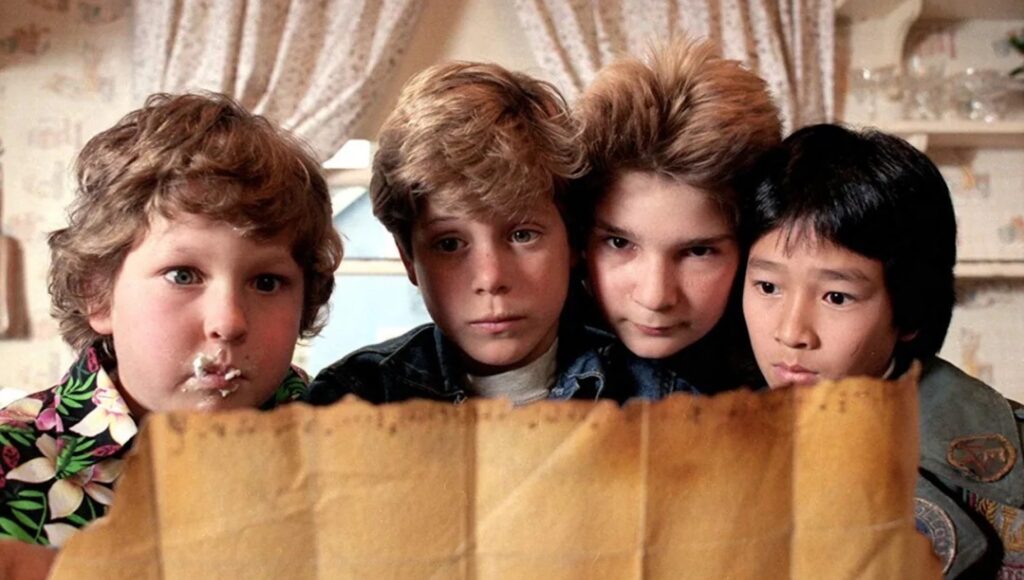
'The Goonies' (1950)
The benefits of using character archetypes include:
- Universality : Archetypes are universally understood and have similar meanings across cultures and historical contexts. This can especially help in the cinematic realm as movies are released in multiple countries and languages.
- Symbolism : These character traits can symbolize a particular aspect of human experience or life. Once again, symbolism is identifiable across many cultures.
- Predictability : Because they are based on common patterns, their behaviors and roles in stories can often be anticipated . Because of that anticipation, writers can choose between subverting those expectations or using the predictability of the archetypes to service the story and protagonist with ease.
- Variability : While archetypes are typical patterns, they allow for variations and depth, meaning a single archetype can manifest in different ways across various stories, allowing writers can adapt these traits to any character.
Character archetypes can be used as tools to tell a compelling and universal story.
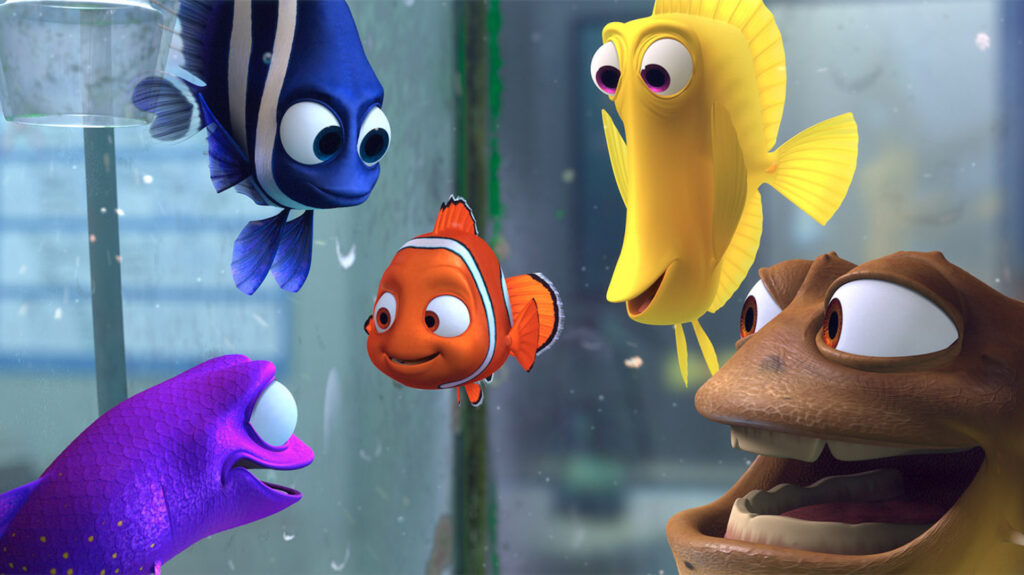
'Finding Nemo' (2003)
What Are the Character Archetypes in the Hero's Journey?
Many archetypes in the hero's journey—the threshold guardian, the herald, the shapeshifter, the trickster, the ally, and the tempter/temptress—are more defined in later interpretations and expansions of Campbell's work. People like Vogler applied his theories to modern storytelling so writers, readers, and audiences could more easily understand the dynamics of Campbell’s monomyth.
Here, we’ll break down the main character archetypes in the hero's journey utilized in Campbell’s Monomyth and Vogler’s expanded breakdowns and interpretations.
The hero is the central figure of the story (protagonist) who undergoes a journey, facing challenges and transformations. The hero often starts as an ordinary person who is then called to adventure. They are present throughout the entire journey , from the ordinary world to the return with newfound knowledge or power.
Luke Skywalker (Star Wars), Indiana Jones ( Raiders of the Lost Arc ), Katniss Everdeen ( The Hunger Games ), Barbie ( Barbie ), and Harry Potter (the Harry Potter series) are perfect examples of the hero character archetypes. You can include any protagonist within a story that goes on a physical or emotional journey.
As mentioned above, the hero in the hero’s journey usually begins their adventure within their ordinary world. This offers readers and audiences the chance to relate to the protagonist, empathize with their plight, and see the beginning of their character arc.
Read More: Why the 'Barbie' Movie is the Perfect Example of the Hero’s Journey
The shadow is the main antagonist of the story. The shadow reflects the darker aspects of the hero, sometimes represented as the mirror image (opposite) of the hero and their beliefs. Overall, they are the antagonist or villains present throughout the whole story in varied ways.
Read More: 15 Types of Villains Screenwriters Need to Know
The shadow can also be represented in metaphorical terms. If a story’s hero journey is the protagonist dealing with alcoholism or addiction, those vices can serve as the shadow/antagonist/villain.
The quintessential shadows in cinema include characters like Darth Vader ( Star Wars ), Voldemort (the Harry Potter series), and Sauron ( The Lord of the Rings series). But you can also find a less villainous shadow that takes on a lighter antagonistic role without purely evil intentions.
A perfect example of that would be Principal Rooney in Ferris Bueller’s Day Off . He doesn’t have evil intentions like a villain does. However, he is the shadow or mirror image of Ferris Bueller. Ferris believes in freedom an expression . Rooney believes in order and control of others.
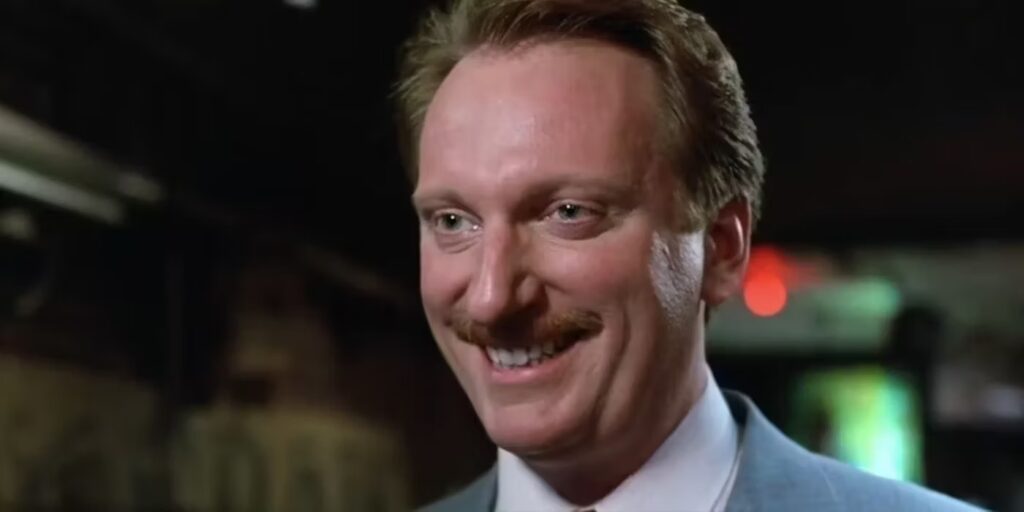
'Ferris Bueller's Day Off' (1986)
This character serves as a guide or teacher to the hero, providing them with advice, training, or magical assistance. The mentor is often a wise or experienced figure, although there have been literary and cinematic variances.
Look no further than the likes of Obi-Wan Kenobi ( Star Wars ), Yoda ( The Empire Strikes Back ), Mr. Miyagi ( The Karate Kid ), and Gandalf ( The Lord of the Rings series ) as core examples of the mentor.
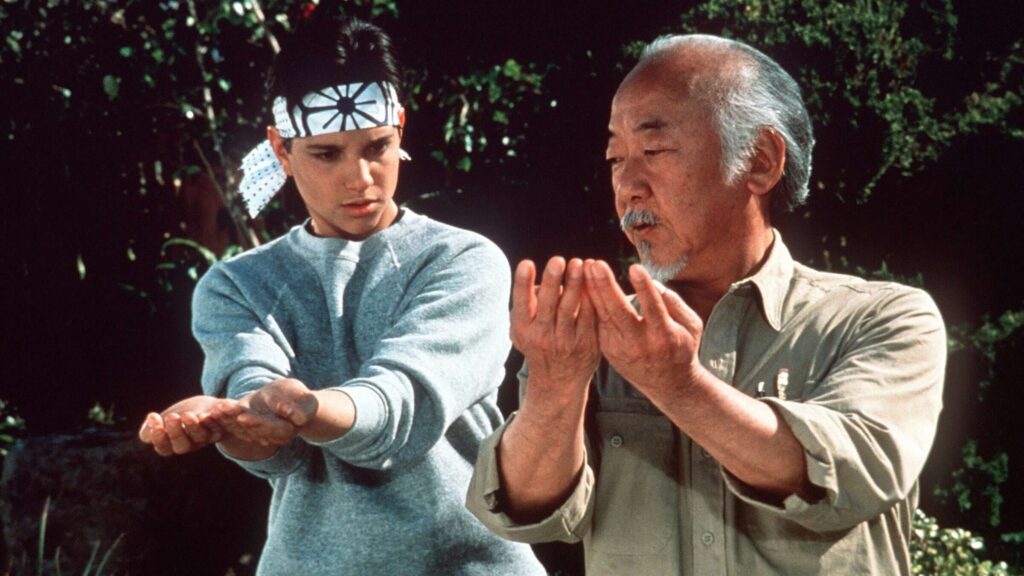
'The Karate Kid' (1984)
Allies are friends or companions who support and accompany the hero through their journey. They often complement the hero's skills and help them face challenges.
In Star Wars , the allies of Luke Skywalker include Han Solo, Chewbacca, and the droids. In The Lord of the Rings series , the fellowship companions of Frodo encompass this character archetype. You can also look to any sidekick-type character as the perfect example of an ally:
- Goose in Top Gun
- Patrick in Spongebob Squarepants
- Ron in Harry Potter
- Billy in Big
- Julie in Lady Bird
- Rod in Get Out
- Ned in the Spider-Man movies
- Sam in The Lord of the Rings
- Short Round in Indiana Jones and the Temple of Doom
Allies can also be characters who aren’t as close to the hero but offer some type of help along the way.
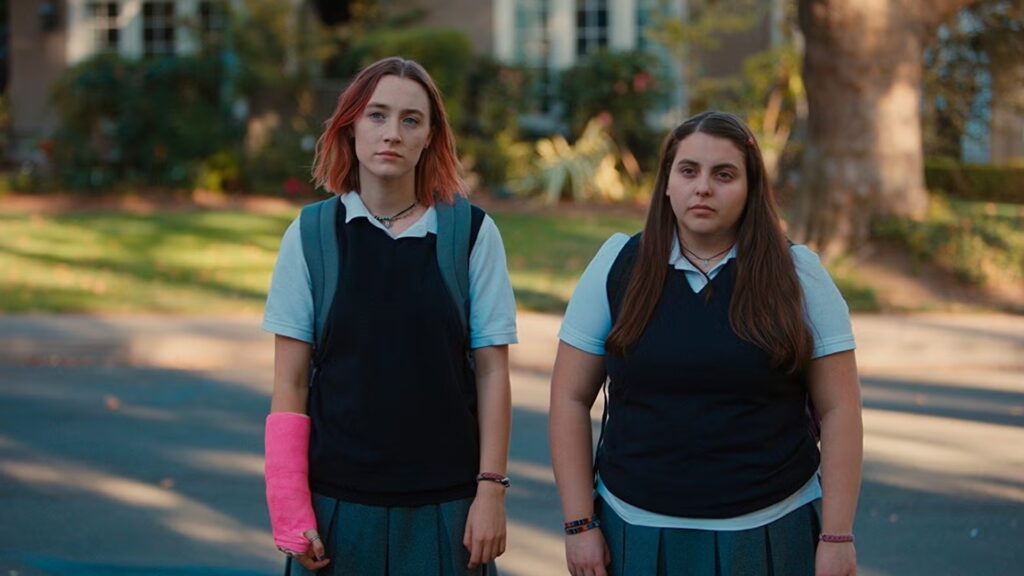
'Lady Bird' (2017)
The Threshold Guardian
These characters serve as obstacles the hero must overcome or circumvent on their journey. They are not always enemies but are present within the story to test the hero and give them the belief and ability to continue on their adventure.
Little John in the Robin Hood stories is initially the threshold guardian of the Sherwood Forest.
He eventually becomes an ally to Robin. But he’s initially a threshold guardian.
You can turn to Monthy Python and the Holy Grail as well. The Black Knight isn’t necessarily King Arthur’s foe. However, he’s there to defend the bridge at all costs.
The Herald
The herald is the character that initiates the call to adventure, pushing the hero to action, or providing the news or event that triggers their journey.
In Star Wars , R2-D2 is the herald of Luke’s journey because he delivers the message from Princess Leia to him . If Luke doesn’t see that message, he doesn’t show it to Obi-Wan Kenobi. And if Obi-Wan doesn’t see that message, he doesn’t convince Luke to come with him to join the Rebellion.
In Barbie , Weird Barbie is the one who tells Barbie the truth about what she is going through and what she must do to seek out the answers she needs.
The herald can be a major character, a supporting character, or even a minor character. In The Lord of the Rings , Gandalf is both mentor and herald, as he is the one who appears to Frodo, telling him he must bring the ring to Mordor.
The Shapeshifter
This archetype's loyalty and role are often unclear, and they can serve as an ally or an enemy to the hero. Sometimes both. Their unpredictable nature adds complexity to the story, usually resulting in twists and turns within the plot.
Snape in the Harry Potter series is one of the greatest shapeshifters in literature and film. His motives are unknown, mistaken, and hidden. He acts as both a shadow to Harry and later an ally.
Jack Sparrow in the Pirates of the Caribbean series is another great example, embodying the role of an unpredictable ally whose loyalty is often questionable. Yes, he can be looked upon as an antihero protagonist of the movie. However, the clear hero of the story is Will.
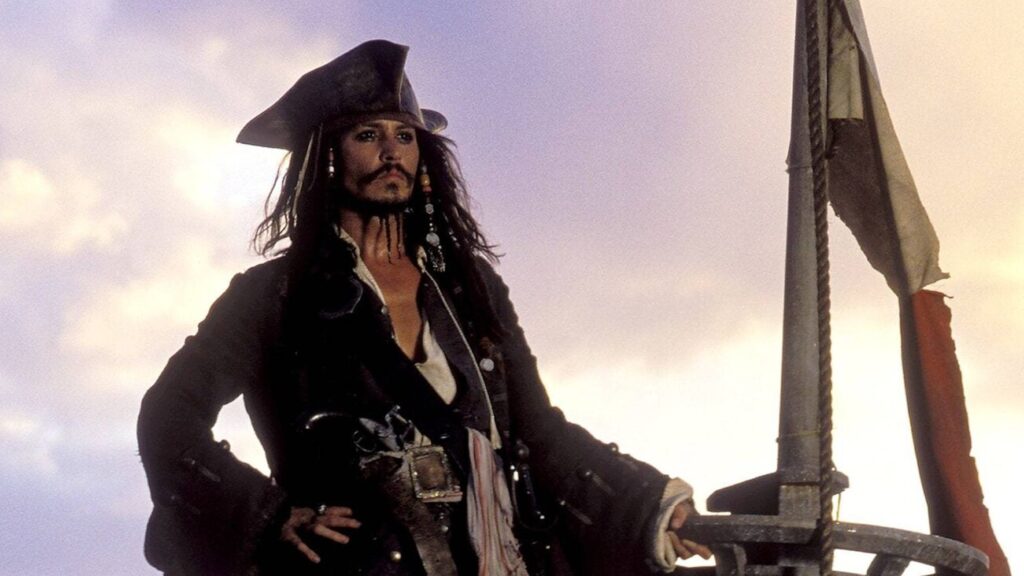
'Pirates of the Caribbean: The Curse of the Black Pearl' (2003)
The Trickster
The trickster usually adds levity to the story through comic relief. They can be allies or enemies, but typically they cause trouble for both.
Jack Sparrow falls under this character archetype as well. But a better example may be Loki in the Marvel Cinematic Universe movies. He embodies the definition of a trickster. He brings more comic relief to the movies after his initial first appearance in Thor .
Perhaps the better example would be Genie in Disney's Aladdin . He uses his powers for humorous and unexpected effects, often bending the rules and adding a lighthearted element to the story.
Tempter/Temptress
This archetype can be of any gender and represents temptation or distraction that diverts the hero from their path.
Catwoman in the Batman movies often plays the role of a temptress to Batman, combining allure with a morally ambiguous character.
Many of the Bond Girls in the James Bond films serve as temptresses, combining allure and mystery and often leading Bond into dangerous situations.
The Indiana Jones variation would be Elsa from Indiana Jones and the Last Crusade .
One of the best examples of the Tempter playing a more pivotal role in the story is Avery Tolar in The Firm . He’s a senior partner at the law firm Bendini, Lambert & Locke. His role is crucial in seducing the protagonist, Mitch McDeere, into the luxurious and corrupt world of the law firm.
He has a charismatic and persuasive personality. He mentors Mitch and exposes him to the high-stakes, high-reward lifestyle that the firm offers, including wealth, prestige, and power. Tolar's character is complex. He is a nuanced character who embodies the charm and allure that the firm uses to entice and trap its young associates.
His influence on Mitch is significant, as he represents the allure of success and the moral compromises that often accompany it. Tolar's character effectively demonstrates how the tempter archetype can be used to explore themes of corruption, temptation, and ethical dilemmas in a narrative.
The character archetypes found within the h ero’s journey offer writers the ability to take universal character templates and mold them to fit into stories that embrace the monomyth structure or use it as a starting point to tell a compelling and engaging story.
Use them in whatever way you’d like. They can encompass the more traditional definition within your story, or you can use these archetypes to set up expectations and later subvert those expectations to create a more enthralling and surprising plot.
Read More: Is Joseph Campbell's "The Hero's Journey" Dead in Screenwriting Today?
CHECK OUT OUR PREPARATION NOTES SO YOU START YOUR STORY OFF ON THE RIGHT TRACK!

Ken Miyamoto has worked in the film industry for nearly two decades, most notably as a studio liaison for Sony Studios and then as a script reader and story analyst for Sony Pictures.
He has many studio meetings under his belt as a produced screenwriter, meeting with the likes of Sony, Dreamworks, Universal, Disney, Warner Brothers, as well as many production and management companies. He has had a previous development deal with Lionsgate, as well as multiple writing assignments, including the produced miniseries Blackout, starring Anne Heche, Sean Patrick Flanery, Billy Zane, James Brolin, Haylie Duff, Brian Bloom, Eric La Salle, and Bruce Boxleitner, the feature thriller Hunter’s Creed, and many Lifetime thrillers. Follow Ken on Twitter @KenMovies and Instagram @KenMovies76
Get Our Screenwriting Newsletter!
Get weekly writing inspiration delivered to your inbox - including industry news, popular articles, and more!
Facebook Comments
Free download.

Screenwriting Resources:

$ 15.00 $ 12.00 Add to cart
Popular Posts

Recent Posts
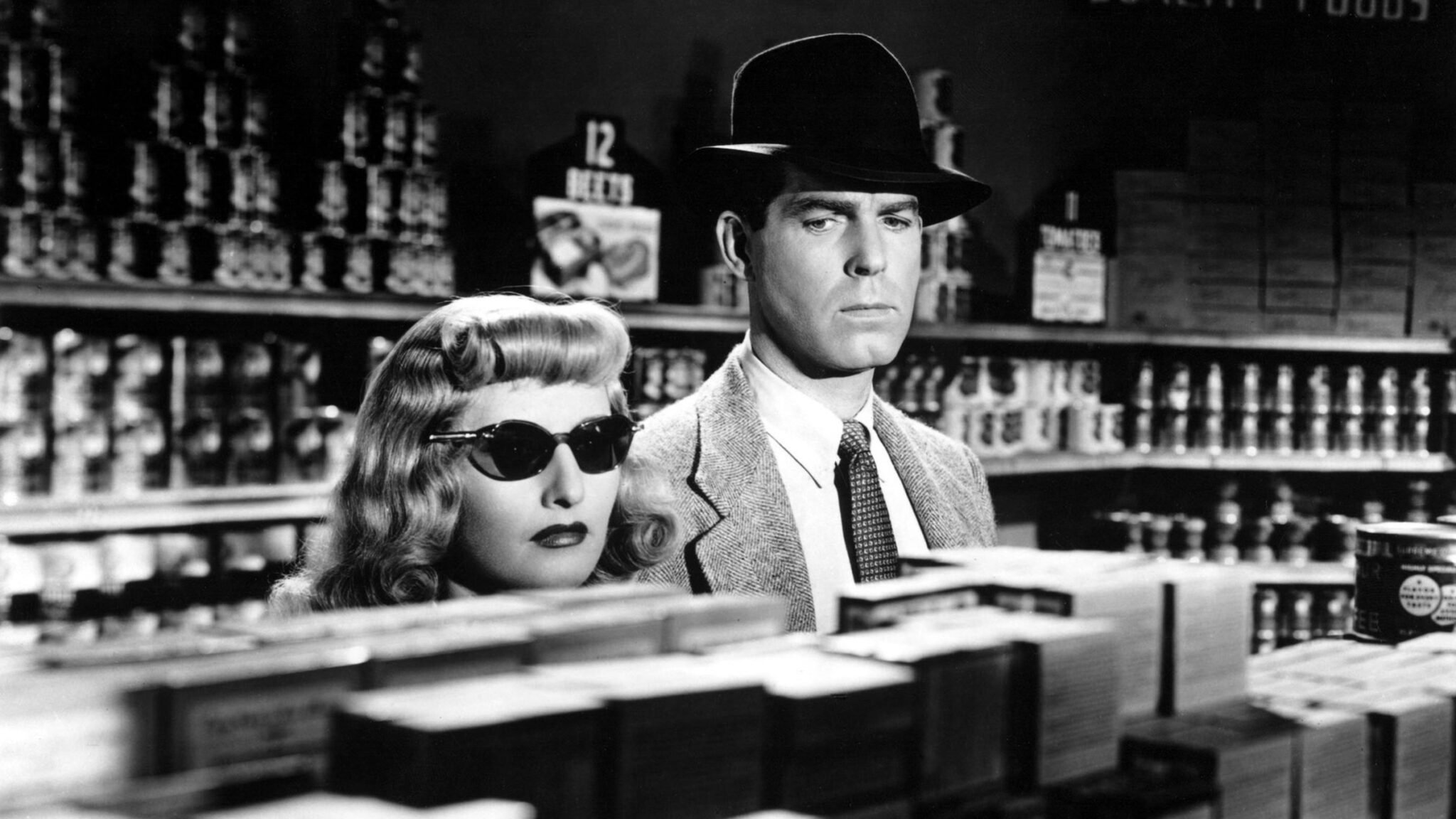
Next Related Post
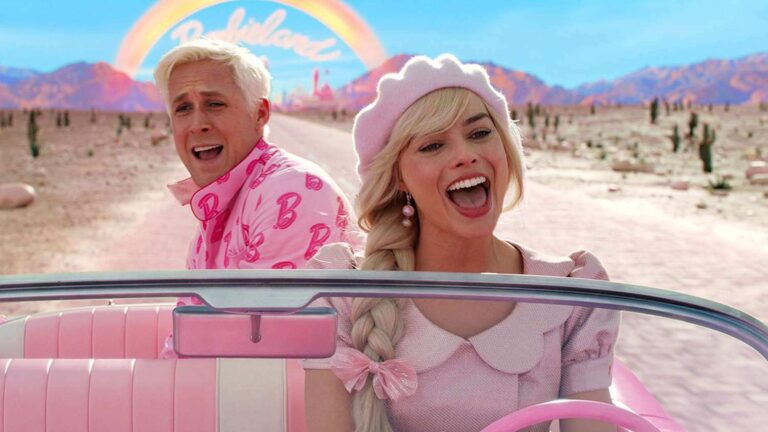
Get Our Newsletter!
Developing your own script.
We'll send you a list of our free eCourses when you subscribe to our newsletter. No strings attached.
You Might Also Like
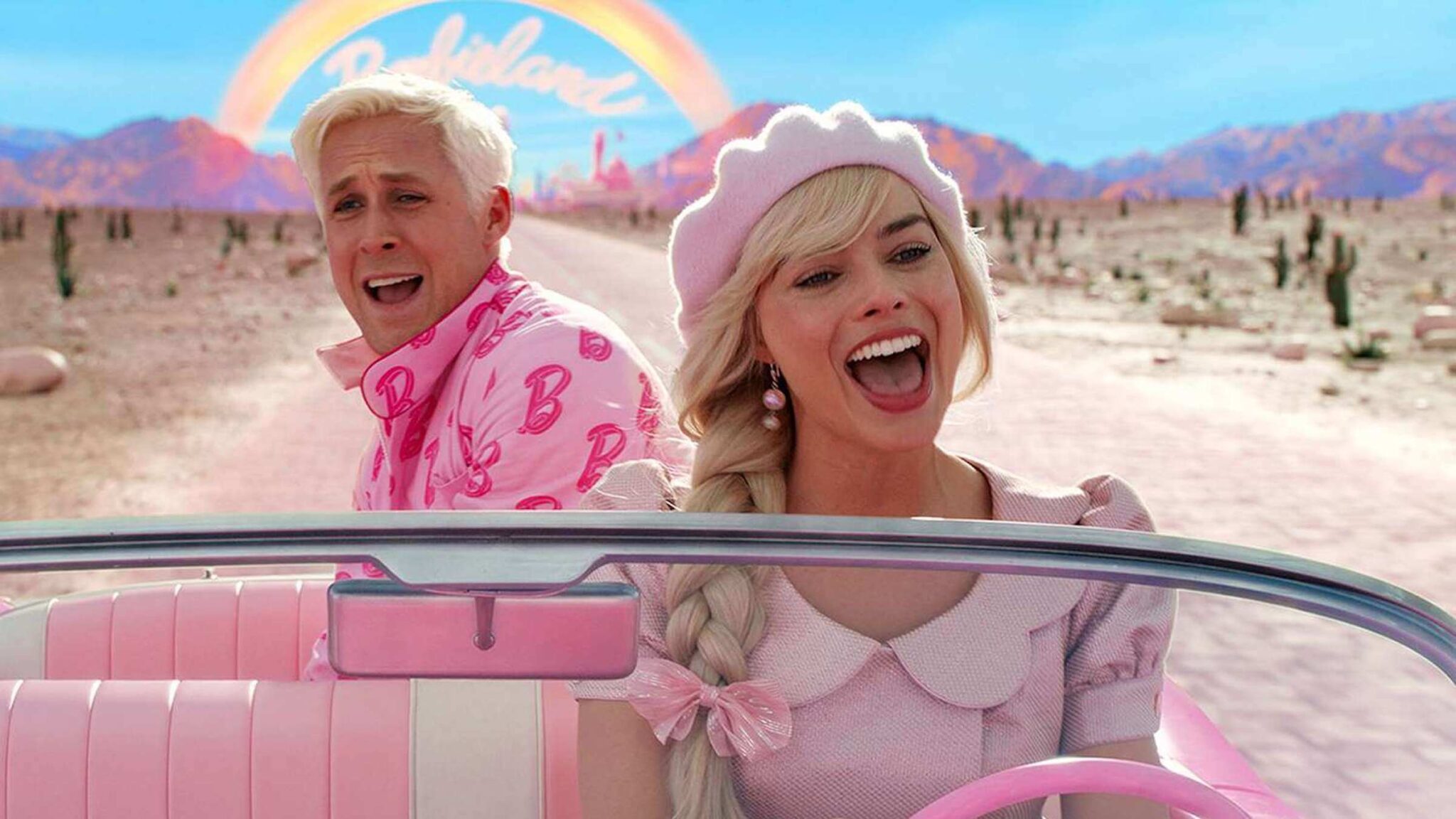
- Hidden Name
- Phone This field is for validation purposes and should be left unchanged.
Connect With Us
Writing competitions, success stories.
© 2024 ScreenCraft | An Industry Arts Company
Wait! Subscribe to get our free Newsletter
Join our community of over 100,000 screenwriters and get weekly inspiration delivered to your inbox.
Screenwriting Newsletter
Join our community of over 100,000 screenwriters and get weekly inspiration delivered to your inbox:
✓ Popular blog posts and industry news ✓ New ScreenCraft online events ✓ Screenplay competition announcements!
" * " indicates required fields
Where Is Obi-Wan Kenobi in His Hero's Journey?
Star Wars utilizes the Hero's Journey time and again, with Obi-Wan Kenobi positioning the famous Jedi for his final stage in A New Hope.
The following contains spoilers for Parts I and II of Obi-Wan Kenobi , now streaming on Disney+.
The galactic father of Star Wars , George Lucas, famously built his narrative structures off of Joseph Campbell's Power of Myth archetypes and Hero's Journey cycles. The original trilogy, the prequels and the subsequent sequels all follow the Hero's Journey storytelling cycle, starting with the call to adventure, the transformation and ending with the hero's return. Anakin was called to adventure when he was plucked from his home planet of Tatooine to begin a Jedi's life and underwent a transformation to the dark side before eventually returning to the good man that was Skywalker. His son, Luke, followed a similar journey , also receiving a call to adventure on Tatooine, transforming into a Jedi, and returning to the Rebellion a changed man.
Perhaps the most enduring and consistent hero of the saga, though, is Obi-Wan Kenobi. From the prequels through Obi-Wan's time spent as a Force ghost in the original trilogy, Kenobi lives out one of the fullest and most in-depth cycles of the Hero's Journey. Prior to the release of Obi-Wan Kenobi , though, the Jedi at the end of Star Wars: Episode III - Revenge of the Sith and Star Wars: Episode IV - A New Hope skips a few steps from the horrors of his revelation and transformation directly to a man returned, secure in his role and ready to level up to ultimate mastery. But now, in Obi-Wan Kenobi , those missing stages can finally be explored.
RELATED: Obi-Wan Kenobi Proves Leia Was Always Strong With the Force
When Obi-Wan Kenobi picks up ten years post- Revenge of the Sith , Obi-Wan is deep in the atonement stage of the famed Hero's Journey following the events of Order 66 , transforming him from the Jedi he once was. He's been stuck in this stage for about a decade and, if not for another exterior influence, he would likely continue to stay stuck. In the atonement stage of the Hero's Journey, Joseph Campbell further elaborates that it is an inner struggle with himself, atoning against the abyss of the father figure. Here, atonement requires the hero to abandon their attachment to ego itself -- cease being a slave to the past and their past selves.
The hero must find in themself once more faith in the mercy of the father figure and some greater power. In Obi-Wan Kenobi , Obi-Wan has found himself cut off from his once-solid relationship with the Force. He's buried his and Anakin's lightsabers in the sand and disavowed himself of the ways of the Jedi. He also pleads to his own father figure, the spirit of his master Qui-Gon Jinn, to aid him through the Force, but he is met with silence. Because Obi-Wan is still struggling with the release of ego, of personal responsibility, and has not finished his atonement stage, he remains alone.
RELATED: Obi-Wan Kenobi Committed the Jedi's Greatest Sin - and It Was Horrific
In the decade since Order 66, Obi-Wan has become all too comfortable in his atonement stage. Though haunted by recurring nightmares and memories of Anakin, he feels that a life of loneliness, hardship and exile is what he deserves and he has resigned himself to remain mired in a Hero's Journey only three quarters fulfilled. However, when young Leia Organa is kidnaped and Obi-Wan's old friend, Bail Organa, comes to beg him to be the Jedi he once was and go rescue Leia, Obi-Wan finally begins his journey out of the atonement stage and into the apotheosis phase of his cycle.
Apotheosis is the point of realization for the hero when greater understanding is achieved. In Obi-Wan's case, Bail finally gets through to him that more is at stake than just Obi-Wan's self-pity, and that Leia is every bit as important a part of the mission as Obi-Wan's excuse of watching over Luke. The first steps into apothesis are always momentous and require the final steps of sacrifice for atonement: sacrificing the ego and the self-first mindset in service of something greater. Newly armed with this understanding, acceptance and renewed perspective, the hero resolves to set out again on the more difficult stage of their ultimate adventure. In Obi-Wan's case, this means leaving the safety and anonymity of his Tatooine hovel and venturing out into a galaxy where he is the Empire's most-wanted fugitive.
RELATED: Will Commander Cody Be In Obi-Wan Kenobi?
In the remaining chapters of Obi-Wan Kenobi yet to air, the rest of his Hero's Journey will play out. The ongoing rescue mission and adventure he is on will complete his apotheosis stage. As seen in Parts I and II, this truly is Obi-Wan's most difficult journey. For the first time, he's acting on a mission utterly alone. His name and face are plastered everywhere and the entirety of an evil galactic organization is dedicating their resources to capturing him. Though the Clone Wars and other missions as a padawan certainly put Obi-Wan in danger, he was never fully alone in the universe. He always had either his master, Qui-Gon, his padawan, Anakin, or the entire Jedi Order in his corner. Now, he has no recourse, no help and no safety. His apotheosis stage is his biggest and ultimate test before he can cross back over the threshold from the unknown into the known once more.
It is also in this stage that the Third Sister explains another revelation to Obi-Wan: that Anakin didn't just fall to the dark side and die, he's lived and is now the galaxy's second-greatest villain. This completes Obi-Wan's task of achieving greater knowledge, though at a high emotional cost, and signifies the end of his atonement as he delves into a deeper layer of his quest. After Leia's eventual rescue that will come at the end of the series, Obi-Wan must deal with the psychological trauma of realizing and accepting who Anakin has become. By doing this, he can release himself from the shackles of guilt and accept the ultimate boon of relief. This will also likely coincide with another ultimate boon: the ability to finally communicate with Qui-Gon's ghost through the Force.
When Obi-Wan's story picks up again in A New Hope , he seamlessly enters the final stages of his Hero's Journey. His second call to adventure to rescue Leia again brings him back into the unknown a final time, which reinvigorates his character into whom he truly is, paving the way for the final stage that he will later play out: the return and, as one with the Force again, the eventual Master of Two Worlds. This also allows him to pass the torch at the start of the original trilogy by becoming the supernatural aid and mentor figure that will be the catalyst for the call to adventure for the next Hero's Journey: that of Luke Skywalker.
Obi-Wan Kenobi Parts I and II are streaming now on Disney+.
Hero’s Journey in Star Wars
This essay about “Hero’s Journey In Star Wars” explores how George Lucas’s saga mirrors the stages of the hero’s journey, as defined by Joseph Campbell. It highlights Luke Skywalker’s transformation from a simple farm boy to a Jedi Knight, underscoring themes of growth, adventure, and the quest for identity. The narrative examines key moments and characters, including the call to adventure signified by R2-D2 and C-3PO, the guidance from mentors like Obi-Wan Kenobi, and the crucial confrontation with Darth Vader. Through these elements, the essay showcases how Star Wars serves as a modern myth, reflecting universal experiences of self-discovery and resilience. It concludes that Star Wars not only presents a tale of external conflict but also a profound exploration of the human spirit and the inherent potential for heroism within us all.
How it works
Star Wars, a galaxy far, far away, has not only revolutionized the world of cinema but also encapsulated the essence of the hero’s journey, a narrative archetype that resonates with the human spirit. At the heart of this epic saga lies a timeless story of growth, adventure, and the quest for identity, mirroring the stages of the hero’s journey as outlined by Joseph Campbell in his seminal work, “The Hero with a Thousand Faces.” Through the lens of Star Wars, we delve into how George Lucas masterfully weaves this narrative structure into the fabric of his interstellar universe, making it a compelling study for enthusiasts and scholars alike.
The tale begins with Luke Skywalker, a simple farm boy from Tatooine, embodying the archetypal hero called to adventure. Much like the heroes of ancient myths, Luke’s journey is precipitated by a rupture in his mundane life, drawing him into a world brimming with possibilities and perils. The droids, R2-D2 and C-3PO, carrying a message from Princess Leia, serve as the heralds of this call. Initially hesitant, Luke’s decision to embark on this journey is solidified by the loss of his aunt and uncle, a poignant moment that propels him from the familiarity of his home into the unknown.
As Luke ventures further, he encounters mentors and allies, such as Obi-Wan Kenobi, Han Solo, and Leia Organa, who provide guidance, support, and companionship. These relationships are pivotal, reflecting the importance of camaraderie and mentorship in the hero’s journey. Obi-Wan, in particular, introduces Luke to the Force, an omnipresent power that symbolizes the inner strength and wisdom the hero must harness. This phase of the journey is marked by tests and trials, as Luke and his companions face off against the Galactic Empire, showcasing the hero’s growth and the forging of bonds through adversity.
The apotheosis of Luke’s journey is his confrontation with Darth Vader, a moment that transcends the external conflict to reveal a deeper, more personal struggle. Vader, representing the shadow archetype, embodies the fears, doubts, and the potential for darkness that Luke must confront within himself. The revelation of Vader as Luke’s father is a narrative masterstroke, adding layers of complexity to Luke’s quest for identity and belonging. This encounter challenges Luke to reconcile the darkness and light within, a crucial step in his transformation.
Luke’s return, armed with the knowledge and power gained on his journey, symbolizes the culmination of the hero’s path. His ultimate challenge, confronting the Emperor and resisting the lure of the dark side, is not just a battle for the galaxy but a testament to the triumph of the human spirit. Luke’s journey from a naive farm boy to a Jedi Knight is a compelling narrative of self-discovery, resilience, and redemption, mirroring the universal quest for meaning and purpose.
The Star Wars saga, through its portrayal of the hero’s journey, serves as a modern myth, capturing the imagination of audiences worldwide. It resonates because it reflects our own experiences of growth, the challenges we face, and the potential for transformation inherent in each of us. By exploring themes of good versus evil, the power of choice, and the importance of hope, Star Wars offers a rich tapestry for examining the complexities of the human condition. In doing so, it reminds us that within every individual lies the potential for heroism, and that the journey itself is as important as the destination.
In conclusion, the hero’s journey in Star Wars is more than just a narrative device; it is a reflection of the universal journey that each of us undertakes in our quest for self-discovery and meaning. George Lucas’s visionary storytelling, rooted in mythological themes and archetypes, continues to inspire and captivate, making Star Wars an enduring study of the hero’s journey in modern mythology. As we look to the stars, we find not only a tale of adventure and conflict but a mirror of our own journeys, filled with the promise of what we might become.
Cite this page
Hero's Journey In Star Wars. (2024, Apr 29). Retrieved from https://papersowl.com/examples/heros-journey-in-star-wars/
"Hero's Journey In Star Wars." PapersOwl.com , 29 Apr 2024, https://papersowl.com/examples/heros-journey-in-star-wars/
PapersOwl.com. (2024). Hero's Journey In Star Wars . [Online]. Available at: https://papersowl.com/examples/heros-journey-in-star-wars/ [Accessed: 30 Apr. 2024]
"Hero's Journey In Star Wars." PapersOwl.com, Apr 29, 2024. Accessed April 30, 2024. https://papersowl.com/examples/heros-journey-in-star-wars/
"Hero's Journey In Star Wars," PapersOwl.com , 29-Apr-2024. [Online]. Available: https://papersowl.com/examples/heros-journey-in-star-wars/. [Accessed: 30-Apr-2024]
PapersOwl.com. (2024). Hero's Journey In Star Wars . [Online]. Available at: https://papersowl.com/examples/heros-journey-in-star-wars/ [Accessed: 30-Apr-2024]
Don't let plagiarism ruin your grade
Hire a writer to get a unique paper crafted to your needs.

Our writers will help you fix any mistakes and get an A+!
Please check your inbox.
You can order an original essay written according to your instructions.
Trusted by over 1 million students worldwide
1. Tell Us Your Requirements
2. Pick your perfect writer
3. Get Your Paper and Pay
Hi! I'm Amy, your personal assistant!
Don't know where to start? Give me your paper requirements and I connect you to an academic expert.
short deadlines
100% Plagiarism-Free
Certified writers
Cloud Garage and the journey to cloud
Last year, I had the honour of giving the opening keynote at JavaLand. When I was invited to speak, my first thought was excitement, and my second was panic. What did I have to say about the cloud that would be interesting to 1,200 people? I started thinking about the stories we tell each other about cloud adoption. In the Cloud Garage , we see some patterns over and over again—a development organisation wants to achieve a significant improvement and realises moving to cloud could be the way to do that. Along the way, they encounter multiple challenges, but in the end, they succeed in adopting cloud and see enormous benefits.
The monomyth
The pattern sounds familiar, right? It turns out this story structure isn’t just for cloud adoption stories—it’s common to almost all of the stories we tell, both modern and ancient. We know this because of Joseph Campbell, an American literature professor who studied comparative mythology in the 1940s. Previous researchers had tended to focus on the differences between different myths, but Campbell noticed that there were also important similarities. He called this fundamental structure the monomyth .
Think about some myths you know. Were you told the story of Prometheus as a child? In technology, we mostly talk about Prometheus because of the open source monitoring framework . That framework is named after a Greek demigod, one of the Titans. Prometheus first created humanity from clay. It soon became clear that compared to other animals, humans couldn’t really compete. Humans were a bit slow, a bit spindly, couldn’t eat grass, and didn’t even have fur. In order to give humans a bit of a hand, Prometheus journeyed to Mount Olympus and stole fire from the gods. When he gave it to humanity, it gave people the fiery help they needed to thrive in a hard world.
Laconic Kylix with Prometheus and Atlas, 550 BC. Photo by Karl-Ludwig Poggemann.
Isis and Osiris
Although you might not know the details, you probably have also heard of Isis and Osiris. The Osiris myth is an important story from Old Kingdom Egypt, around two and a half millennia BC. Osiris, a god and a king of Egypt, was murdered by his brother Set. Set claimed Osiris’s throne, but that’s not the end of the story. Osiris’s wife, Isis, sought out her husband’s body and brought him back to life temporarily. After Osiris rose from the dead, he and Isis conceived a son who would grow up to reclaim the throne and restore order to Egypt. This is an early example of a story of a god being killed and reborn; it’s a theme which appears in many world religions .
The Knights of the Round Table and the Holy Grail
Jumping forward several millennia, the old English legends of King Arthur and the quest for the holy grail have been retold in dozens of books and movies. The holy grail story begins when a vision of the grail appeared to the court of King Arthur. The knights realise they must find and restore the sacred vessel, hidden somewhere in Britain. Most of the knights were either killed or slunk home empty-handed. However, three of the knights, led by Sir Galahad, succeeded in finding the grail. Once the grail was found, that was basically mission accomplished. The successful knights were too noble to hold on to the cup as a trophy, and instead, the grail was magically lifted to heaven for safekeeping.
Verdure with Deer and Shields . An accompaniment to the Holy Grail tapestries woven by Morris & Co for Stanmore Hall. This version was woven in 1900, around 700 years after the Arthurian stories were first recorded.
The hero’s journey
Despite their superficial differences, these legends have quite a lot in common. Distilled to their essence, all of these stories (and many others) are actually just one story—the quest. The quest story begins with a call to action. The hero is initially resistant, but they become convinced that they must act. On their journey, they encounter many obstacles—some mental, some physical, and some with big teeth and tentacles. Ultimately, though, the hero succeeds in their quest and is rewarded.
According to Joseph Campbell, many stories and myths start with a call to action. Once underway, the hero must overcome overwhelming obstacles before receiving a dazzling reward.
Does the hero live happily ever after when they reach the reward? Not always. Rather than being a straight line, the hero’s journey is a continuous cycle. After enjoying the reward for a while, the hero gets a new quest and must face new challenges. Nowadays, we’d call that the sequel; Luke destroys the death star in Star Wars, but finds he has even bigger problems in The Empire Strikes Back. Completing the cycle, Luke has to destroy the death star again in Return of the Jedi.
The hero’s journey is often cyclical; after completing one quest, the hero must undertake another.
Star Wars as modern mythology
The similarity to Star Wars isn’t coincidental. George Lucas was heavily influenced by Joseph Campbell’s ideas. Campbell even visited Lucas’s house to discuss myth structures. The reason Star Wars resonates with so many of us was because Lucas had a deep understanding of what makes a powerful story. Star Wars itself has now become modern mythology. Parents teach their children about Star Wars so that even children too little to watch the films know about Darth Vader. In perhaps the ultimate recognition of its mythic status, grown-ups around the world (particularly in English-language countries) list their religion as “Jedi” on national censuses . According to the 2001 census, Jedi was the fourth-most popular religion in the United Kingdom. In the same year, New Zealand showed the highest number of Jedi per capita, at 1.5%.
Mark Hamill, who plays Luke Skywalker, at a press conference in 1980. Photo courtesy of Dutch National archives .
The hero inside
As much as many of us dream of being a Jedi Knight, realistically, it’s not going to happen. Nonetheless, we all have our own stories. We undertake quests. Some of them are long ones, like working towards a degree. Some of them are shorter ones, like trying to figure out how to get faster hardware or how to get rid of annoyingly repetitive tasks at work. We’re all the (small-scale) hero of our own (small-scale) stories. What motivates most of us is earning an audience for our code creations, having our colleagues think we’re brilliant, sharing knowledge, bringing value to our employer, and, ultimately, making the world better in whatever small way we can.
Many of us hope to be a workplace hero (perhaps without the cape).
The joy of cloud
For many of us, the details of our technical quests are actually similar. We’ve seen a huge transformation in how we do work in the last 20 years. When I started my professional career, we all needed multiple versions of databases and application servers to develop and test against. To access those dependencies, we had to install them ourselves, onto our own hardware. A laptop and a desktop machine was the minimum hardware required to do a developer job, but the more computers, the higher the developer status. The best-connected developers would have an array of monitors and four desktop machines purring away under their desks.
Like it usually does, being cool required suffering—installing and patching all those operating systems and applications was drudgery. Naturally, any services we ran were only available on localhost, or at most on the LAN.
Things have changed. There’s a genre of Twitter jokes about localhost which amuses—but puzzles—me.
The joke recurs regularly:
Sometimes the idea is the same, but the port is different because technology trends have changed.
It’s true that a lot more startups get pitched than succeed, and many startups are paper-only or fail to connect to their end user. But I don’t think the barrier in any of these cases is getting from localhost to the cloud. Putting something on http://my-cool-startup.mybluemix.net is as easy as:
How could that be a barrier to a startup? With Kubernetes, there’s a bit more code, but it’s still a one-line process:
It isn’t news that standing apps up on the cloud is straightforward. We all know that the cloud makes it easy to get software to end users, fast. If the happily-ever-after is speedy hardware, elimination of repetitive tasks like patching server farms, and business value, then the way we get there is cloud.
The call to action
Although you might imagine that by now everyone is using containers, the Cloud Native Computing Foundation spoke to 504 users across the globe, ranging from developers to business managers. It found that only 25% were using containers . Last year, the number was 22%, so it’s going up, but slowly. Why aren’t the 75% of businesses not using containers taking advantage of this transformative technology? In many quests, the first barrier is the hero themselves. A wise person calls the reluctant hero to action by telling them how much they’re needed. Instead of leaping onto the next horse or into the first container, the hero says, “No thanks, I’m cool where I am.” Think of Luke Skywalker telling Obi-wan Kenobi that he’s terribly sorry but he can’t come to save the universe right now because he has to stay and help with the harvest.
Security on the cloud
What’s holding people back? Security fears are a big part of it, particularly in regulated industries. Although the real picture is much more nuanced, it feels like inside the firewall is safe and outside it is scary.
Nobody wants to be the person in their annual review saying: “Hey boss, I put all our sensitive data on the public cloud—unencrypted.”
The sad conclusion to the Prometheus myth is that, in revenge for the theft of fire, the gods chained poor Prometheus to mount Olympus for all eternity. To make the punishment even nastier, an eagle pecked out his liver every day. It’s not easy being immortal. Modern corporate performance management methodologies are (I hope) less grisly than the Prometheus treatment, but do any of us on the quest to cloud want to take the risk and find out what happens if we get it very very wrong?
Prometheus and the eagle, by Theodoor Rombouts (1597-1637 ).
Notice how much more expressive Prometheus’s face is in this seventeenth-century Dutch painting than it was in the fifth-century BC Greek illustration of the same scene. (I definitely wouldn’t want to be the Dutch Prometheus.) Painting made some huge technical advances in the intervening 21 centuries. Our ability to secure things in the cloud has also advanced a great deal in an extremely short time. Modern end-to-end and at-rest encryption methodologies can meet most regulatory requirements, even on public cloud. For maximum protection, it’s possible to encrypt data in-memory .
IBM is also devising new ways of delivering cloud capabilities but within the firewall. Many AI technologies need to be trained on large volumes of company data, some of it sensitive. Exporting all that to the public cloud, no matter how much encryption that is, gives corporate compliance teams the cold sweats. In recognition of that, IBM Cloud Private for Data now embeds many Watson services so they can run on-premise. As a happy side-effect, that brings the services to the data, rather than the other way round. Not moving huge volumes of data around is always a nice efficiency.
There’s another potential problem with modern cloud stacks, unrelated to encryption and even to the firewall. In a container, the whole operating system gets included in the built artefact. Since an operating system (like all other software) is a security attack surface, giving developers responsibility for packaging an operating within the build artefacts increases a developer’s area of responsibility. Developers have suddenly become responsible for securing parts of the system which used to be the ops team’s headache because they were far down the stack.
In a modern containerised build artefact (right box), the developer who created the artefact is responsible for much more of the stack, including middleware and operating system. This is different from more traditional built images (left box), where the developer is only responsible for managing the application itself.
Being in charge of security is a scary thought for many developers, but there is a big silver lining. Infrastructure as code means containers can be rebuilt at any time to eliminate vulnerabilities. Redeploying something through a pipeline is usually a lot cheaper than patching or manually reinstalling. Infrastructure as code also means we can use tooling, such as IBM’s Vulnerability Advisor , to monitor and prevent vulnerabilities.
Example output from IBM’s Vulnerability Advisor.
This means that cloud can actually be more secure than the old way we used to do things. So what happens after the hero accepts the call to action and starts moving workloads to the cloud? In particular, why are many enterprises having a hard time with their cloud quest? This is where we come back to the obstacles part of the hero’s journey. One CIO told an IBM vice president the story of their move to the cloud. They’d been working on getting their apps to the cloud for two years. “Great!” said the vice president, “How many have you done?” “We’ve got 2% onto the cloud,” was the forlorn answer.
In the move to cloud, not all obstacles have large teeth or tentacles. Most of us have, at one point or another, encountered the dreaded, “It works on my machine.” The operating environment in the cloud is so different that many things which were best practices in the data centre are anti-patterns in the cloud. Cloud-native applications are built for the cloud environment, but older applications are sometimes stuffed with cloud-liabilities. To take advantage of the cloud, an application should be developed with agility, deployed using devops techniques, and elastically scalable. To work at all on the cloud, an application should be stateless.
Being stateless
It turns out that writing stateless applications is pretty hard, and converting a stateful application to a stateless one is very hard. Servers can appear and disappear at any time because the cloud solution to an under-performing container is to kill it and start again (a bit like Osiris and Isis). In order to behave correctly after a restart, application state must be externalised. Distributed caching services, such as Redis , are so important, as is logging and observability tooling, such as Prometheus.
Optimising the right things
In the cloud, what we need to optimise for is different, and what our dependencies need to optimise for is also different. Although the situation is much better, for a while even Java JVMs had some peculiar behaviours in the cloud.
Memory is money, so a small memory footprint is economically critical. Containers stop and start often, so a fast startup is key. When I first started using Kubernetes, I had a hard learning experience with a slow application. My application was resource-intensive on startup. I wasn’t generous enough when I configured the liveness probe, so when I tried to bring the application up, the container orchestrator decided the application had failed to start and killed it while it was still starting. It then started a second instance, but because of the extra load of the stops and starts, that one started even slower, so it got killed too. It didn’t take too much of this before the failures cascaded and no instances would start.
Observability
My cascading failures is an extreme (and admittedly naive) example, but the way we need to do ops in the cloud is different from in the data centre. For folks new to the cloud, it can feel like there’s a lack of transparency. How do we monitor things we can’t feel and touch? How do we know a server’s on fire if we can’t see the flames? Unless we adapt our ops techniques to work in a stateless environment, we risk losing the information we need to diagnose problems. The mythological Prometheus brought fire to people, and the software Prometheus plays a similar role, by moving information about server fires from some hidden place in the cloud down to the people who need to know. I’ve mentioned Prometheus in particular because of the name, but there is a range of services in this area—some came earlier than Prometheus, such as DataDog and New Relic . No matter which one you choose, you’ll want some kind of monitoring solution for production workloads.
Management of cloud applications is another area where many of us run into trouble. In order to take advantage of the fast release cycles of the cloud, we split monolithic applications up into smaller microservices, each with their own release lifecycle. This works great when things work, but what happens when the network is unreliable? What happens if a service goes down? What happens if an API changes? Is the change compatible with all of its consumers? Worse yet, what happens if an API stays the same but the internal semantics have changed? How should services discover each other? Service meshes and contract testing help with these issues. Nonetheless, despite their best efforts, some organisations attempt the switch to microservices but just end up with a distributed monolith.
Even when everything functions as expected, the complexity of a cloud system can far exceed that of its on-premise predecessor. There may be hundreds or even thousands of microservices, and usually, it’s not even a single cloud—it’s multiple clouds. It’s a multicloud world and a hybrid cloud world. Managing all of the clouds often needs something like IBM Multicloud Manager to keep things straight.
With so many obstacles, is it even worth attempting the journey to the cloud? The answer is, emphatically, YES . The cloud has given us extraordinary rewards. It’s enabled whole new business models. It’s allowed us to release new software versions many times a day, rather than once a year. We can engage with our users and respond to their needs in a much more satisfying way than we could when software was shipped on CDs. Developers have been freed from a whole category of boring jobs (patching and installing and configuring). Data scientists are also experiencing a cloud revolution, with cloud-accessible shared data removing some of the most tedious parts of their job.
Many businesses started the journey to cloud in search of lower costs. As well as those, they found it unlocked innovation and hugely improved end-user technologies. Many of the most exciting technologies, such as artificial intelligence and blockchain, have been born on the cloud and mostly-delivered by the cloud. Sharing resources on the cloud also gives us access to hardware too exotic to run locally, such as huge GPU clusters and quantum computers .
IBM Q System One is the world’s first integrated quantum computing system. IBM was also the first to make quantum computers available on the cloud.
Get started on your hero’s journey to cloud
To find out more about how the cloud can help your business and get started on your cloud journey, you can request a consultation with the IBM Cloud Garage.
More from Cloud
Bigger isn’t always better: how hybrid ai pattern enables smaller language models.
5 min read - As large language models (LLMs) have entered the common vernacular, people have discovered how to use apps that access them. Modern AI tools can generate, create, summarize, translate, classify and even converse. Tools in the generative AI domain allow us to generate responses to prompts after learning from existing artifacts. One area that has not seen much innovation is at the far edge and on constrained devices. We see some versions of AI apps running locally on mobile devices with…
IBM Tech Now: April 8, 2024
< 1 min read - Welcome IBM Tech Now, our video web series featuring the latest and greatest news and announcements in the world of technology. Make sure you subscribe to our YouTube channel to be notified every time a new IBM Tech Now video is published. IBM Tech Now: Episode 96 On this episode, we're covering the following topics: IBM Cloud Logs A collaboration with IBM watsonx.ai and Anaconda IBM offerings in the G2 Spring Reports Stay plugged in You can check out the…
The advantages and disadvantages of private cloud
6 min read - The popularity of private cloud is growing, primarily driven by the need for greater data security. Across industries like education, retail and government, organizations are choosing private cloud settings to conduct business use cases involving workloads with sensitive information and to comply with data privacy and compliance needs. In a report from Technavio (link resides outside ibm.com), the private cloud services market size is estimated to grow at a CAGR of 26.71% between 2023 and 2028, and it is forecast to increase by…
IBM Newsletters

10 Disney Era Star Wars Characters We Absolutely Need To See Again
- Not all fan-favorite Disney-era Star Wars characters have confirmed returns, leaving futures undetermined.
- Disney's Star Wars projects, despite criticism, have brought about great TV shows and incredible characters.
- From Emerie Karr to Poe Dameron, these beloved characters absolutely must return to the Star Wars universe.
With so many Star Wars movies and TV shows on the horizon, these 10 Disney-era Star Wars characters absolutely must return. Although Star Wars' upcoming movies have ensured that Rey Skywalker will make her return, and upcoming Star Wars shows suggest that characters such as Ahsoka Tano and Din Djarin will be reprising their roles, not all fan-favorite cast members are confirmed to be coming back . In fact, the futures of many of the best characters throughout Star Wars movies and TV shows are currently undetermined.
While the Disney Star Wars projects have received significant criticism, beginning when Disney bought Star Wars , this new era of the franchise has brought about the best Star Wars TV shows . Even the sequel trilogy movies, which at times are considered Star Wars' worst movies , introduced incredible characters. These 10 characters in particular absolutely must make a Star Wars return.
The Star Wars Timeline Explained: All 9 Eras
Emerie karr's fascinating backstory deserves more exploration, first appeared in: star wars: the bad batch.
Emerie Karr was introduced in Star Wars: The Bad Batch season 2, but it wasn't until The Bad Batch season 3 that her character was fully fleshed out. Although The Bad Batch remains ongoing, with a few episodes left before the show's finale, much has already been revealed about Emerie. Despite first coming off as a cold Imperial worker, in The Bad Batch season 3, she has begun to be more humanized, feeling clear sympathy for the children being experimented upon for Project Necromancer and Palpatine's resurrection plans .
It remains unclear how The Bad Batch will end and, subsequently, what Emerie's fate might be. However, hopefully, her story in Star Wars will not end with the show . Emerie is a fascinating addition to Star Wars as one of only two known female clones of Jango Fett at this time. Moreover, her emotional complexity suggests there is much more to explore about her character and her arc.
Poe Dameron's Hero Journey Isn't Over Yet
First appeared in: star wars: the force awakens, poe dameron.
Created By Michael Arndt, J.J. Abrams, Lawrence Kasdan
Cast Oscar Isaac
First Appearance Star Wars: Episode VII - The Force Awakens
Alliance Resistance
Although the Star Wars sequel trilogy was met with significant criticism, several characters were well-received. Poe Dameron, a cocky but charming ace pilot fighting with the Resistance, was certainly one of them. However, like many sequel characters' stories, Poe's Star Wars arc became swallowed up in the somewhat confounding plotline in Star Wars: The Rise of Skywalker . He began with a fascinating backstory in Star Wars: The Force Awakens , having been the one with a map to Luke Skywalker.
Like many sequel characters' stories, Poe's Star Wars arc became swallowed up in the somewhat confounding plotline in Star Wars: The Rise of Skywalker .
Sadly, Star Wars: The Last Jedi saw the beginning of his decline after he risked and lost countless Resistance lies in a foolish attack in which he tried to independently take on the First Order. His arrogant responses to issues throughout the movie didn't help his image. Poe's character therefore needs additional screen time to redeem himself , and upcoming Star Wars projects, such as Rey's upcoming Star Wars movie , could provide exactly that.
BB-8 Needs More Screen Time As One Of The Newest Lovable Droids
Created By Michael Arndt, J.J. Abrams, Lawrence Kasdan, Neal Scanlan
While R2-D2 remains the most popular droid in Star Wars , new additions such as Chopper from Star Wars: Rebels and BB-8 from the sequel trilogy have also become fan favorites. BB-8 began as Poe Dameron's droid in The Force Awakens , entrusted with the map to Luke. Over the course of the three sequel movies, he developed a very funny sense of humor, acting in essentially the R2-D2 role for Rey.
Given that Rey's story is guaranteed to continue, presumably, BB-8 will stay by her side. Although it became a question of whose droid he really was, given that Poe had such clear affection for him but he was often seen by Rey's side, it seems likely that he will make an appearance in her upcoming movie . Of course, as a new Skywalker, Rey may have adopted R2 as her own, making him her droid sidekick instead.
Baylan Skoll's Search For The Mortis Gods Is Incomplete
First appeared in: ahsoka, baylan skoll.
Created By Dave Filoni
Cast Ray Stevenson
First Appearance Ahsoka
Alliance Dark Jedi
Baylan Skoll was undoubtedly one of the most celebrated recent additions to Star Wars . He appeared in the Ahsoka show as a dark side Force-user. However, fascinatingly, he clearly wasn't a Sith. Instead, he was a dark Jedi, willing to use the dark side but also showing an intriguing reverence for the Jedi. Notably, when he believes he is going to have to kill Ahsoka Tano, he laments this possibility because it will decrease the already dismally small number of Jedi left.
Baylan Skoll was undoubtedly one of the most celebrated recent additions to Star Wars .
Baylan Skoll's return will be complicated despite his popularity and the confirmed upcoming Ahsoka season 2 , as the actor for Baylan, Ray Stevenson, has sadly passed away since Ahsoka season 1 concluded. While the character seemed to have a clear story forward, as he was searching for the Mortis Gods , Stevenson's tragic passing has thrown into question where that story will go. Even so, both Stevenson and Baylan represent beloved figures in Star Wars , so, ideally, the franchise will find a way to further this story.
Ezra Bridger's Jedi Abilities Are Needed Now More Than Ever
First appeared in: star wars: rebels, ezra bridger.
Cast Eman Esfandi, Taylor Gray
First Appearance Star Wars Rebels
Alliance Rebel Alliance, Jedi
Ezra Bridger began as a sarcastic, troublesome teenager in Rebels , but he developed into an incredible Jedi and, in some ways, a hope for the future. When he encountered the Ghost crew, Kanan Jarrus, a former Jedi and one of the survivors of Order 66, identified his Force abilities. He then trained him in the ways of the Force, giving Ezra Jedi teachings that had mostly died off since the massacre of the Jedi. For this reason, Ezra represented one of few people capable of carrying on the legacy of the prequel trilogy's Jedi Order.
Ezra represented one of few people capable of carrying on the legacy of the prequel trilogy's Jedi Order.
Although he went missing at the end of Rebels in an effort to save everyone, his happy reunion with several members of the Ghost crew in Ahsoka season 1 means that his story will likely continue. In fact, the Ahsoka season 1 finale indicated that Ezra will now join the fight against Thrawn, who, alongside Ezra, has returned to the main Star Wars galaxy. Even better, as Kanan's son Jacen Syndulla has exhibited Force abilities, Ezra may even train the young boy .
Finn's Jedi Arc Must Finally Happen
Cast John Boyega
One of the most disappointing aspects of the Star Wars sequel trilogy was the absence of Finn's Jedi arc despite several heavy hints that he was Force-sensitive. In fact, in promotional materials, Finn was even shown holding Anakin's iconic blue lightsaber. Although he does ultimately wield the lightsaber during a fight against Kylo Ren in The Force Awakens , the idea that he was therefore a Jedi was a red herring. Instead, Finn spends most of the sequels following after Rey and screaming her name, which was a waste of his character.
Star Wars: Finn's 10 Best Quotes In The Sequel Trilogy
One of the most disappointing aspects of the Star Wars sequel trilogy was the absence of Finn's Jedi arc despite several heavy hints that he was Force-sensitive.
Finn was fascinating even without a Jedi arc. He was an ex-stormtrooper who had been taken as a child and over time developed the bravery and selflessness required of being a Resistance fighter. However, he more than earned a Jedi arc, not only because of his clear Force abilities. Even John Boyega, the actor for Finn, was under the impression that his story arc was leading there. Given Boyega's frustrations over this sidelining, he may be unlikely to appear in Rey's new movie, but, hopefully, he will return so Finn can finally become the Jedi he always deserved to be .
Kanan Jarrus Could Return As A Memory Or A Force Ghost
Kanan jarrus.
Cast Freddie Prinze Jr.
Alliance Jedi, Rebel Alliance
Kanan Jarrus tragically died to save his friends in Rebels , leaving behind his Jedi apprentice, Ezra, and his lover, Hera Syndulla. In fact, although he likely did not know it, Hera was even pregnant at the time with their son, Jacen. Although Kanan is truly dead (unlike many Star Wars characters like Palpatine and Darth Maul who have miraculously returned), there are a number of ways Kanan could appear in Ahsoka season 2 .
The easiest way for Kanan to be included in Ahsoka is through memories, which could come from Ezra, Hera, or even Sabine Wren. This would make particular sense coming from Hera or Ezra, as they each remain profoundly impacted by Kanan and his death. However, a more thrilling option would be for Kanan to appear as a Force ghost. Particularly if Ezra was to train Jacen, this would be an amazing way for Kanan to return, looking down upon Ezra and Jacen as Anakin Skywalker's Force ghost did with Ahsoka and Sabine.
Fan-Favorite Apprentice Shin Hati Needs A Thrilling Update
Cast Ivanna Sakhno
Like her master Baylan Skoll, Shin Hati was a fantastic new character in Ahsoka , and audiences immediately took a liking to her. In fact, despite her being a dark side Force-user, many were hopeful that she would ultimately join Sabine and Ahsoka , as she had remarkable chemistry with Sabine on screen even as they were fighting one another. Excitingly, this has become a real possibility for Ahsoka season 2.
Although Baylan's future remains unclear for the upcoming season of Ahsoka , either way, he may have already scorned his apprentice. At the end of Ahsoka season 1, Baylan and Shin parted ways, with Baylan carrying out his mysterious mission. Now, with this separation and with the threat Thrawn poses to the galaxy, Shin may ultimately decide to team up with Ahsoka and Sabine. While that doesn't mean Shin has to join the light side, it will hopefully mean the continuation of her character in Star Wars .
As The Sequels' Greatest Villain, Ben Solo/Kylo Ren Needs An Epic Return
Ben solo/kylo ren.
Cast Adam Driver, Matthew Wood
Alliance Jedi, First Order
One of the best characters to come out of the sequel trilogy was Kylo Ren/Ben Solo, who was generally well-liked even amid considerable backlash against the sequel movies. Although he began as a Darth Vader copycat, Kylo Ren developed into a chaotic, unpredictable Sith apprentice willing to stab his Sith master to death at a moment's notice. He only became more interesting in The Rise of Skywalker when he rejoined the light side as Ben Solo and fought by Rey's side against Palpatine.
While, tragically, Ben died in The Rise of Skywalker , that doesn't mean he can't be back. In fact, as Rey and Ben Solo are a Dyad in the Force , it's unclear what their powers could mean for a resurrection of Ben Solo . Also, if any movie made clear that no one's ever really gone, it's The Rise of Skywalker . His return may be unlikely given that Ben Solo actor Adam Driver has indicated multiple times that he's done with Star Wars , but hopefully, the franchise can still find a way to bring him back, particularly given his disappointing death.
Omega's Force-Sensitivity Must Continue Beyond The Bad Batch
Created By George Lucas, Dave Filoni
Cast Michelle Ang
First Appearance Star Wars: The Bad Batch
TV Shows Star Wars: The Bad Batch
Omega was introduced as the first female clone in The Bad Batch , and her character has only become even more exciting since then. In addition to her very adorable bond with the members of Clone Force 99 , Hunter in particular, Omega was revealed to have a successfully increased M-count (or midi-chlorian count) in The Bad Batch season 3. While this doesn't necessarily mean that Omega will have the Force, there have been numerous hints that she does , most notably in her brief training with Asajj Ventress.
Because The Bad Batch season 3 is ongoing, Omega's fate remains undetermined. Particularly given that she is currently being detained by the Empire for a second time, her demise could sadly be imminent. However, hopefully, Omega will return in future Star Wars movies and TV shows, perhaps even becoming Asajj's Jedi apprentice. While many of these possibilities are speculative, these 10 character returns would be absolutely amazing updates for Star Wars .
ALL STAR WARS MOVIES AND TV SHOWS ARE AVAILABLE TO STREAM ON DISNEY+
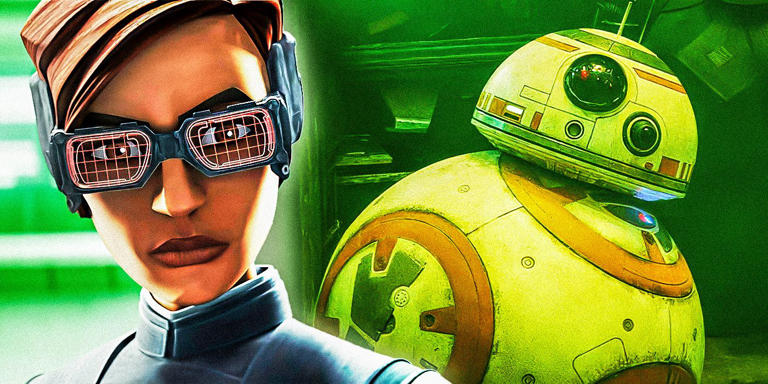
1 hr 11 min
Talking 'The Mandalorian' and 'Ahsoka' with Paul Sun-Hyung Lee | The SWU Podcast Bonus The Star Wars Underworld Podcast
Carson Teva actor Paul Sun-Hyung Lee sits down with The SWU Podcast's Dominic Jones to talk about his experiences working on 'The Mandalorian', 'The Book of Boba Fett', and 'Ahsoka'. In their wide-ranging chat, they cover Paul's journey from 501st and Rebel Legion member to on-screen hero of the New Republic. And Paul shares what it was like to work with giants like Anthony Daniels, Dave Filoni, and Carl Weathers. All this and much more! Join the Star Wars Underworld Network Discord Subscribe on YouTube Subscribe on Spotify Subscribe and Review on Apple Podcasts Facebook: www.facebook.com/swunderworld Twitter: @TheSWU Email: [email protected]
- Episode Website
- More Episodes
More by Galaxy Far, Far Away
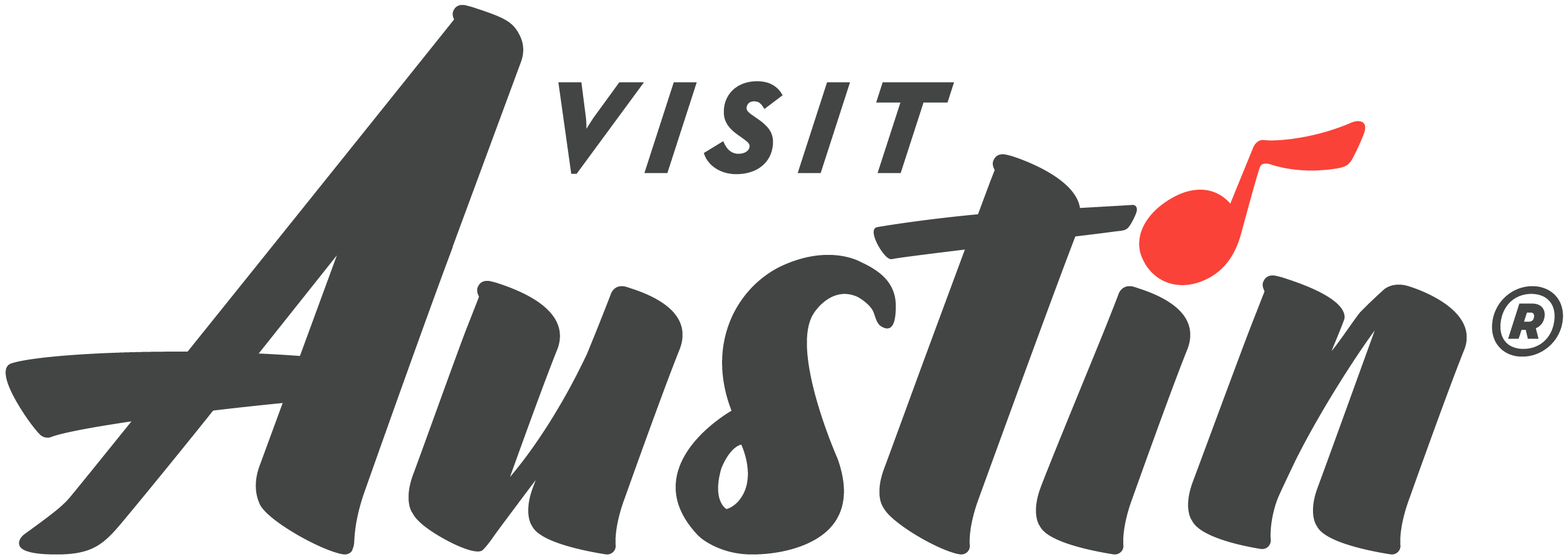
STAR WARS: THE PHANTOM MENACE - 25TH ANNIVERSARY RE-RELEASE
- Dates: May 3, 2024 - May 8, 2024
- Recurrence: Recurring daily
- Location: Varying Locations
- Time: Various times
Experience the heroic action, unforgettable adventures, and trade disputes of STAR WARS: EPISODE I – THE PHANTOM MENACE. It’s been 25 years since Anakin Skywalker took the first fateful step on his journey, and it’s about time we see it again on the big screen.
Stranded on the desert planet Tatooine after rescuing young Queen Amidala from the impending invasion of Naboo, Jedi apprentice Obi-Wan Kenobi and his Jedi Master Qui-Gon Jinn discover nine-year-old Anakin, who is unusually strong in the Force. Anakin wins a thrilling podrace, and with it, his freedom, as he leaves his home to be trained as a Jedi. The heroes return to Naboo where Anakin and the Queen face massive invasion forces while the two Jedi contend with a deadly foe named Darth Maul. Only then do they realize the invasion is merely the first step in a sinister scheme by the re-emergent forces of darkness known as the Sith.
Stick around after the feature for a special first look at the highly anticipated Star Wars: The Acolyte series coming to Disney+ June 2024.

IMAGES
VIDEO
COMMENTS
How does Star Wars: A New Hope follow Joseph Campbell's Hero's Journey breakdown?. Welcome to the inaugural installment of our new series A Hero's Journey Breakdown where we explore Joseph Campbell's mythological storytelling structure and how iconic films fit into that mold.. First up is Star Wars Episode IV: A New Hope.Let's break down the plot and structure of George Lucas' 1977 ...
Star Wars works as a perfect study of how the hero's journey works and will help you structure a timeless story. Joseph Campbell's Hero's Journey is easily the most-used and most-loved storytelling structure in human history. It resonates with readers in ways that are as old as human D.N.A. itself. And George Lucas kept this in mind when ...
May 4, 2017. Learn how to craft an incredible story by exploring Star Wars and the hero's journey. Includes a helpful infographic of how the hero's journey plays out in A New Hope. "In the three decades since I discovered The Hero with a Thousand Faces, it has continued to fascinate and inspire me. Joseph Campbell peers through centuries and ...
The third and fourth stages blend a bit in Star Wars. Luke meets Obi-Wan Kenobi after a run-in with Sand People chasing R2-D2 into the desert. Obi-Wan explains about the Jedi, the Force, and Luke's father, but when the wise old man offers to teach Luke the ways of the Jedi, Luke refuses. After discovering his home burned and his family murdered ...
Example #1: Star Wars. Perhaps the most obvious Hero's Journey example, Star Wars contains a feast of archetypes and structural choices that will help us see Campbell's work in action. As an appetizer, I explore some Hero's Journey essentials in Star Wars in its own post.
Joseph Campbell Is the Hidden Link Between '2001,' 'Star Wars,' and 'Mad Max: Fury Road'. Countless filmmakers owe a debt to the Hero's Journey that Campbell recognized. Mythology ...
Star Wars rightly recognizes the Hero's Journey's potential for dark individualism, with the utter destruction of your enemy completing your self-actualization. It becomes a hero's journey ...
Studying Skywalkers is an exclusive column that investigates the characters, themes, and lessons of Star Wars from an educational, literary perspective.. Joseph Campbell's Hero's Journey is practically synonymous with exploring Star Wars, and for good reason.It is a fascinating examination of a mythological construct that explores the path of the hero: overcoming obstacles (both from ...
Title: Star Wars and the Hero's Journey Supervising Professors: Professor Martin Kevorkian, Professor Michael Harney The Star Wars saga created by George Lucas was, by his own admission, influenced and guided by Joseph Campbell's monomyth theory. The monomyth theory was outlined in The Hero with a Thousand Faces, written by Campbell. In the ...
Resurrection. The resurrection stage in a hero's journey is all about transformation, and Luke gets his when he unmasks Darth Vader and finally has a real heart-to-heart with his dad. Anakin verbally confirms Luke's faith in him, and Luke makes peace with his twisted family tree.
In narratology and comparative mythology, the hero's journey, also known as the monomyth, ... Campbell agrees with Bill Moyers that the original Star Wars film's trash-compactor scene on the Death Star is a strong example of this step of the journey. Initiation The Road of Trials. The road of trials is a series of tests that the hero must ...
When He Saved Princess Leia. A significant step in the hero's journey sees the hero going into "the belly of the whale.". In the original Star Wars movie, that whale is the Death Star and its belly is the detention level. Luke disguised himself as a Stormtrooper to free Princess Leia from her prison cell, then Leia had to promptly save ...
George Lucas used Campbell's Monomyth to structure his original Star Wars film. Thanks to Star Wars' success, filmmakers have adopted the Hero's Journey as a common plot structure in movies. ... Every Hero's Journey should include risks to the main characters and a conflict. This is the stage where your hero contemplates those risks.
The Hero's Journey is a storytelling structure that has been used by a multitude of different cultures throughout history. Star Wars: A New Hope, released in 1977, is often regarded as a primary example of this form of storytelling and is certainly one of the most impactful.. The Hero's Journey is a guide for storytelling that involves a hero who embarks on a quest, faces threats and obstacles ...
The Hero's Journey. From the Odyssey, to Robinson Crusoe, to Star Wars — why are we drawn to stories about heroes? And what do they tell us about ourselves? This hour, TED speakers explore what ...
Although Star Wars helped bring the concept of the hero's journey into the public consciousness, The Empire Strikes Back poses some unique challenges in this context. That's because the film is merely the first half of a story that'll be concluded in Return of the Jedi—you'd need to look at both films to get the full picture.Despite this, we can still see a form of the hero's journey in the ...
To put your hero at a disadvantage, remove one of life's most common advantages: A solid set of parents, traditionally one's first allies. Doing this will instill your story with readymade conflict from page one. 3. A Principled but Boring Life. Many elements of the Ordinary World are obvious.
Ultimately, the Hero's Journey plays a big role in what makes Star Wars an enduring modern myth. Luke's journey from childish naivete to adult wisdom is something we all experience and is central to Campbell's monomyth. Even George Lucas acknowledged the importance of the Hero's Journey in his creation of Star Wars: "In the three ...
The Hero's Journey is often depicted as a circular diagram, with each stage connected to the next in a cycle. there are many different names for the story beats in the circle. ... Star Wars: George Lucas drew heavily from Joseph Campbell's work when creating the Star Wars saga. Luke Skywalker's journey from a farm boy on Tatooine to a Jedi ...
The Hero's Journey was first coined in Joseph Campbell's book: "The Hero of a Thousand Faces" in 1949. It is the idea that all myths tell the same story but with different characters and settings. As an avid Star Wars fan, I was curious to see exactly how close George Lucas followed the Hero's Journey Formula when creating his galaxy ...
Essentially, the hero's journey is this: An (often reluctant) hero sees a threat to his—or her—values and what he holds dear. (Think: Luke Skywalker). His world is out of balance. He is not powerful but he is moved to action. He embarks on a quest to make things right. He takes on the villains who pose the threat.
This narrative journey typically involves several character archetypes that affect the hero's journey from beginning to end. After the successful debut of Star Wars and Lucas's discussions on using Campbell's work as inspiration for his space opera, many producers, development executives, filmmakers, and screenwriters have explored the ...
The galactic father of Star Wars, George Lucas, famously built his narrative structures off of Joseph Campbell's Power of Myth archetypes and Hero's Journey cycles.The original trilogy, the prequels and the subsequent sequels all follow the Hero's Journey storytelling cycle, starting with the call to adventure, the transformation and ending with the hero's return.
In conclusion, the hero's journey in Star Wars is more than just a narrative device; it is a reflection of the universal journey that each of us undertakes in our quest for self-discovery and meaning. George Lucas's visionary storytelling, rooted in mythological themes and archetypes, continues to inspire and captivate, making Star Wars an ...
The hero's journey is often cyclical; after completing one quest, the hero must undertake another. Star Wars as modern mythology. The similarity to Star Wars isn't coincidental. George Lucas was heavily influenced by Joseph Campbell's ideas. Campbell even visited Lucas's house to discuss myth structures.
A podcast chronicling my girlfriend's introductory experience through the Star Wars universe. We will be watching movies and shows in order of release and discussing each with an in-depth analysis after each watch through! Listen along as Elise learns the lore and passes her Jedi Trials.
With so many Star Wars movies and TV shows on the horizon, these 10 Disney-era Star Wars characters absolutely must return. Although Star Wars' upcoming movies have ensured that Rey Skywalker will ...
In their wide-ranging chat, they cover Paul's journey from 501st and Rebel Legion member to on-screen hero of the New Republic. And Paul shares what it was like to work with giants like Anthony Daniels, Dave Filoni, and Carl Weathers. All this and much more! Join the Star Wars Underworld Network Discord Subscribe on YouTube Subscribe on Spotify
Experience the heroic action, unforgettable adventures, and trade disputes of STAR WARS: EPISODE I - THE PHANTOM MENACE. It's been 25 years since Anakin Skywalker took the first fateful step on his journey, and it's about time we see it again on the big screen. Stranded on the desert planet Tatooine after rescuing young Queen Amidala from the impending invasion of Naboo, Jedi apprentice ...
161.8K Star Wars Galaxy of Heroes General. 60.7K General Discussion; 9 Developer Q&A Archive; 2.6K New Players; 30.5K Arena and Character Strategy; 4K Individual Events; 4.6K Guild Events; 4.6K PVP and Rivalry; 50K Guild Recruitment; 731 Art and Media; 4.1K Off Topic; 32.1K Feedback. 32.1K Feedback Home; 17.7K Bugs and Issues. 0 Bug Reports; 0 ...